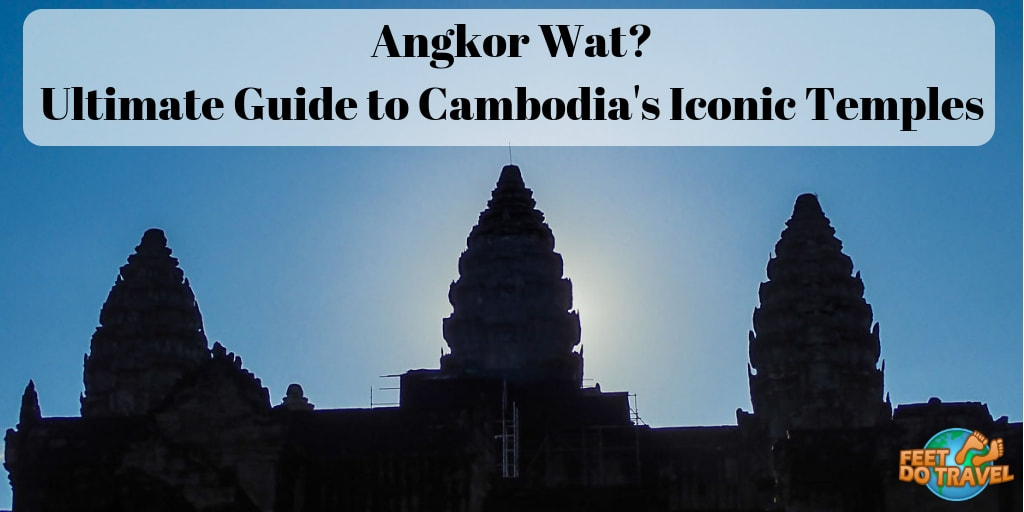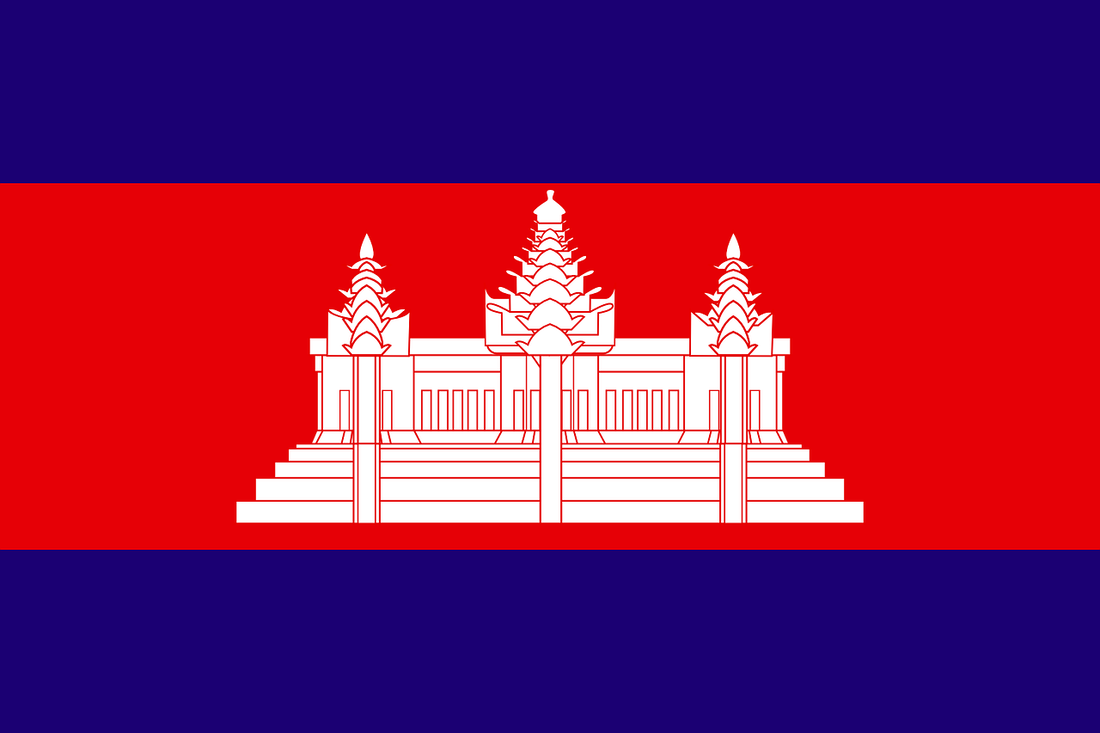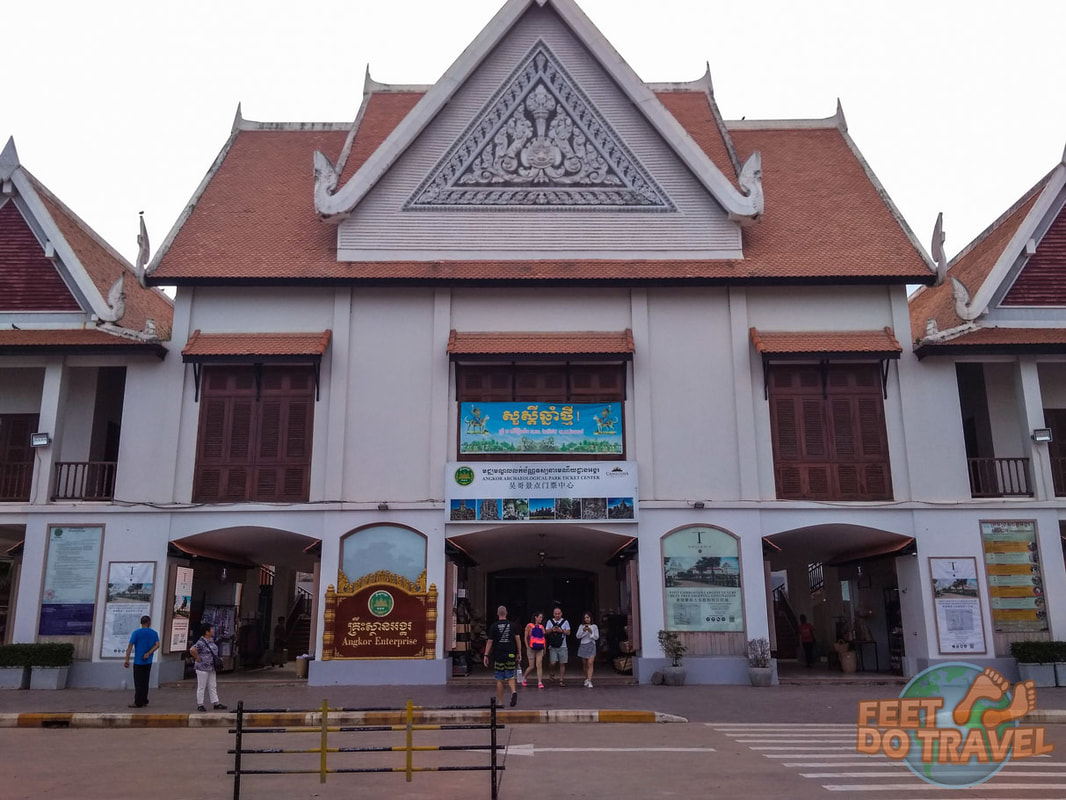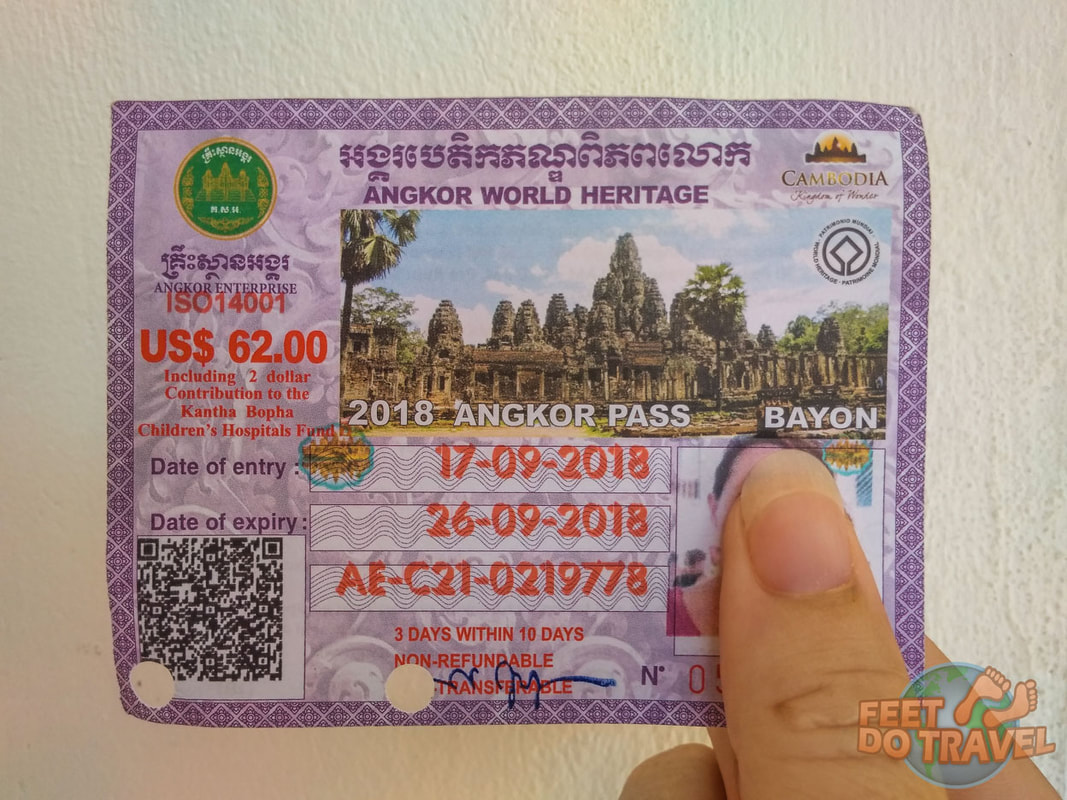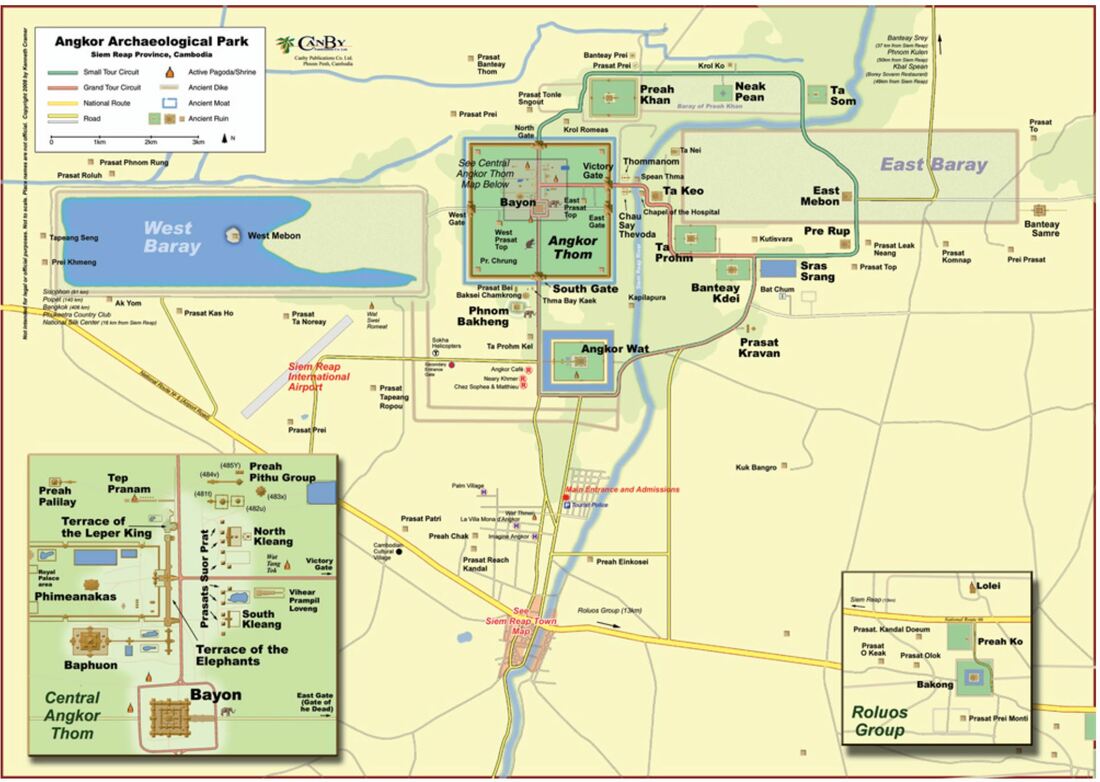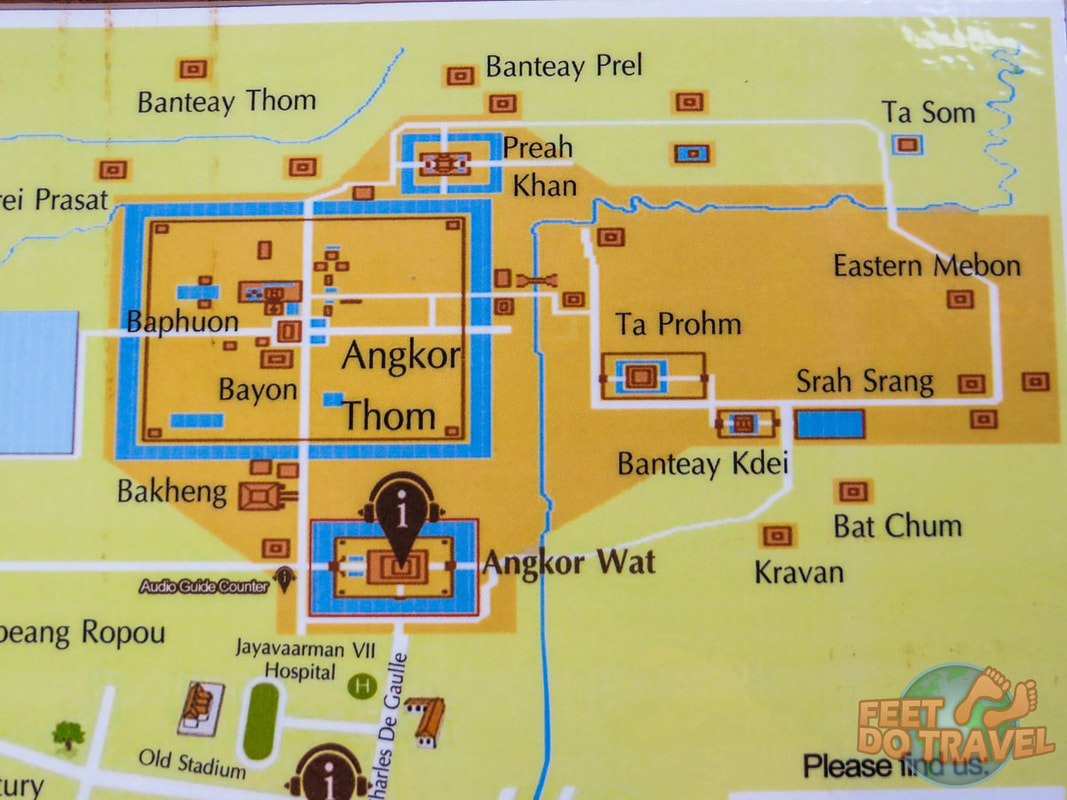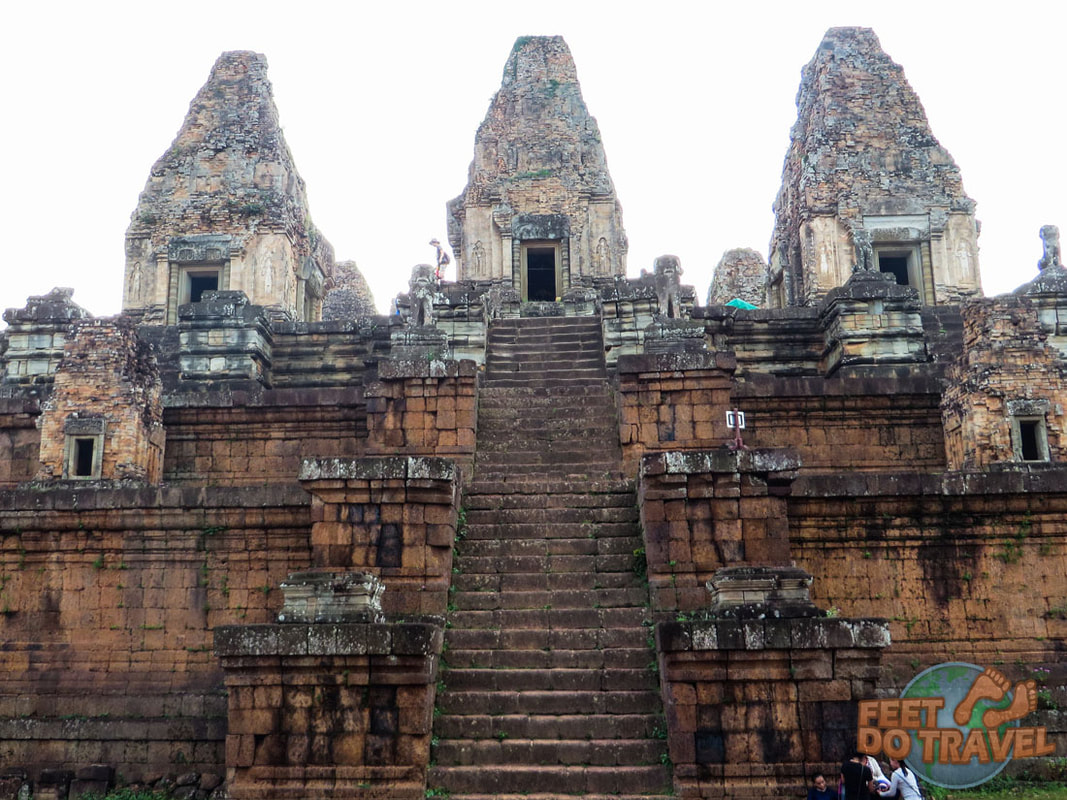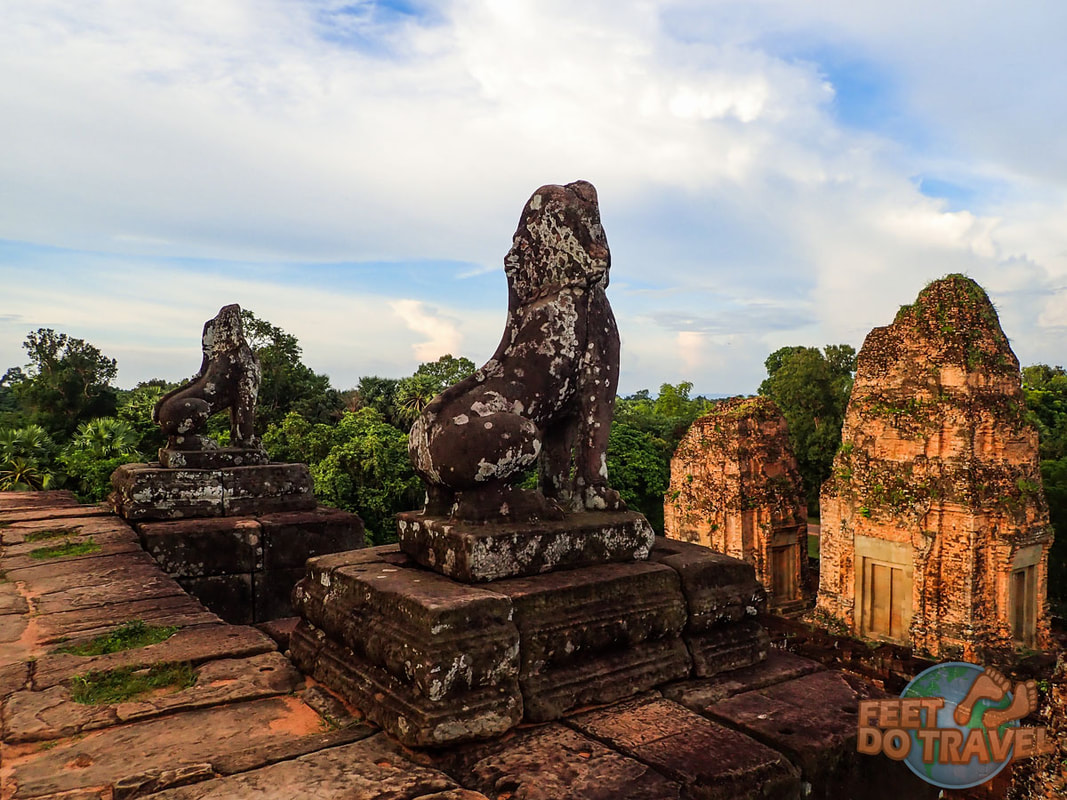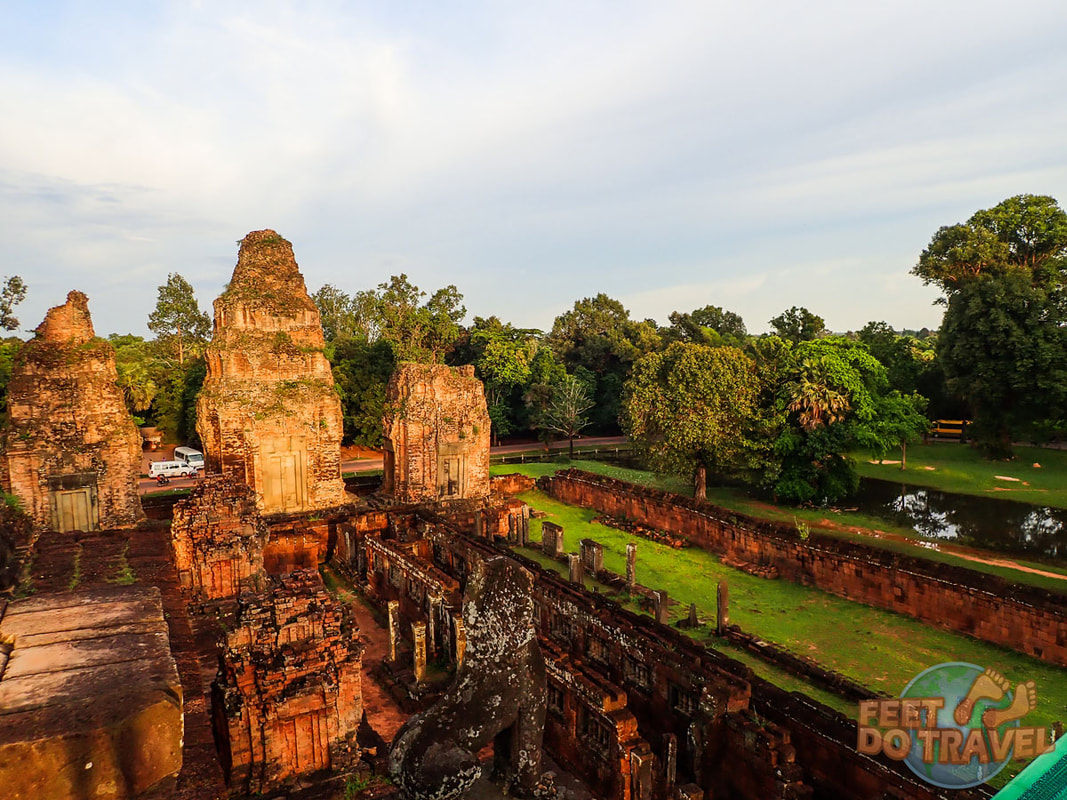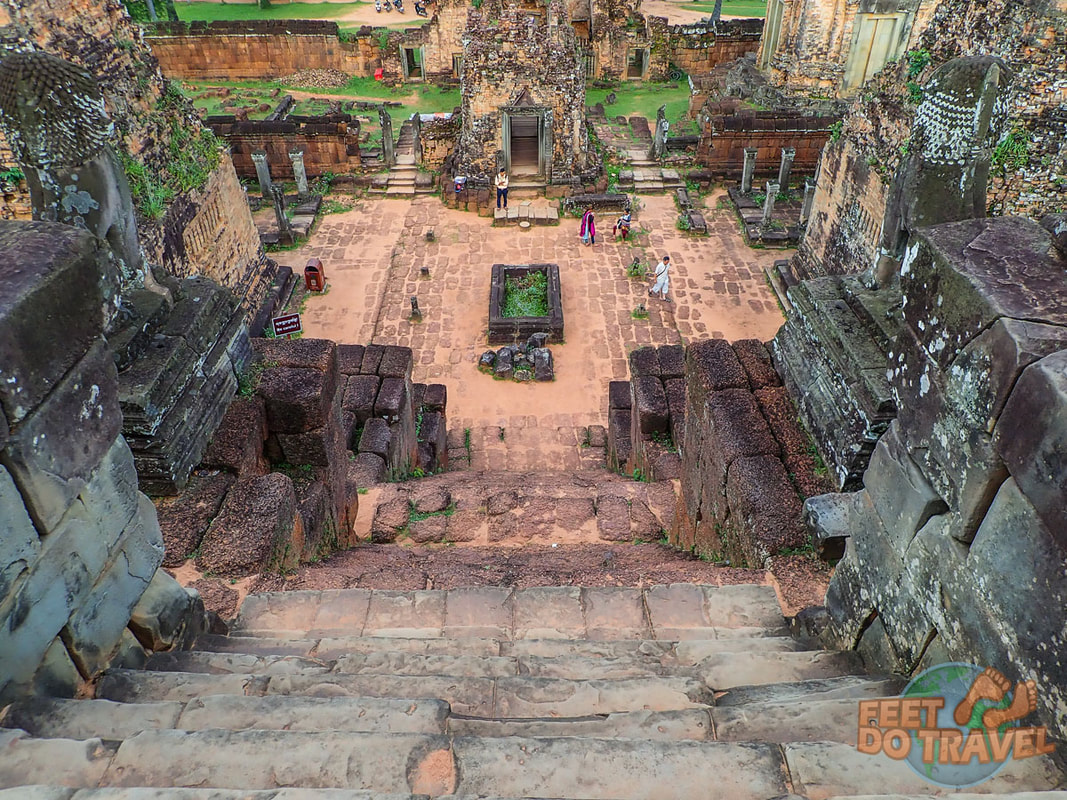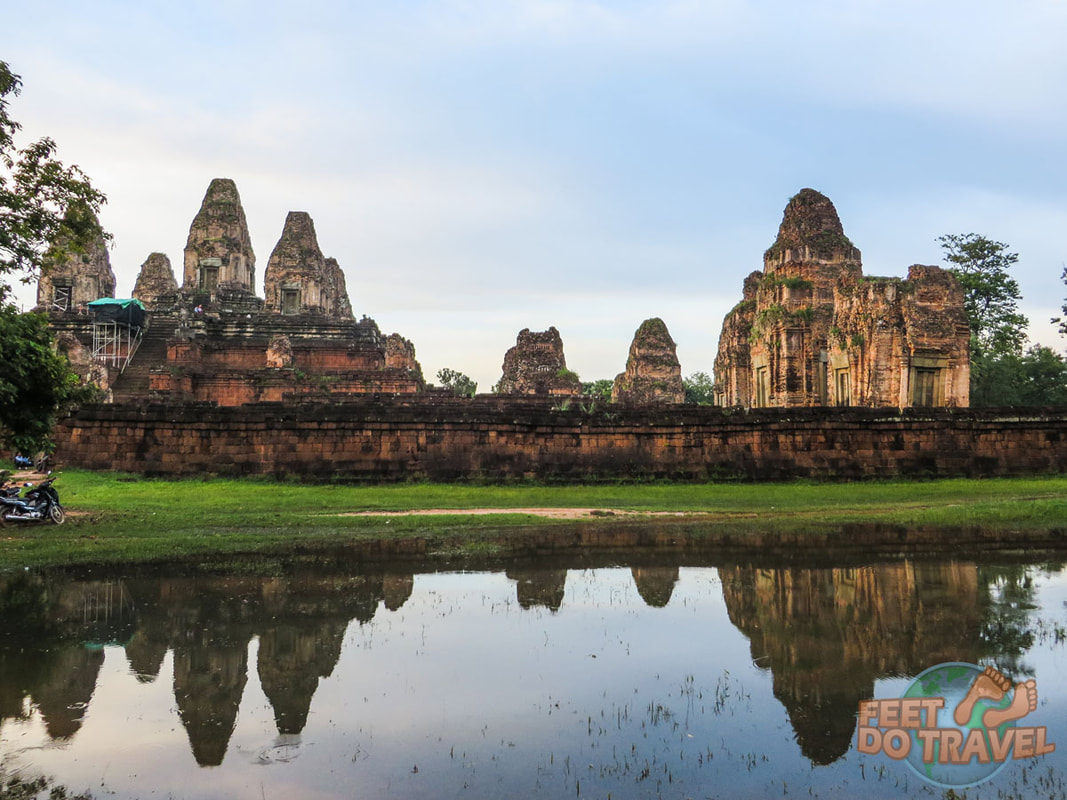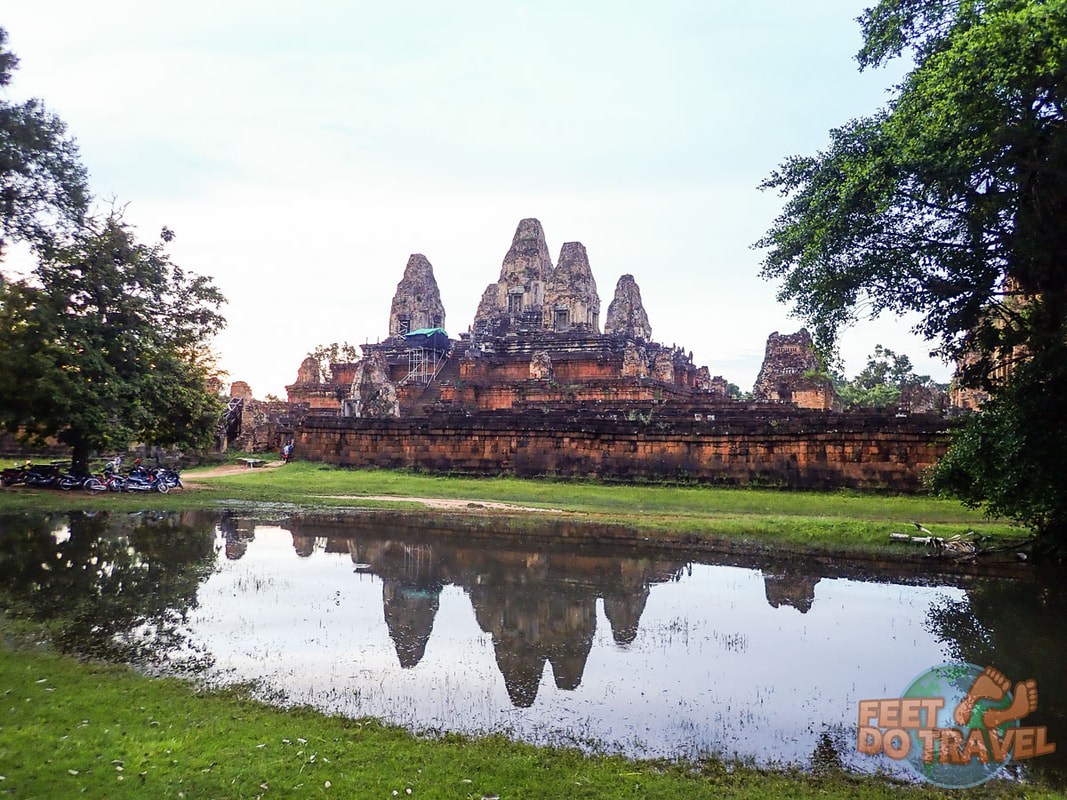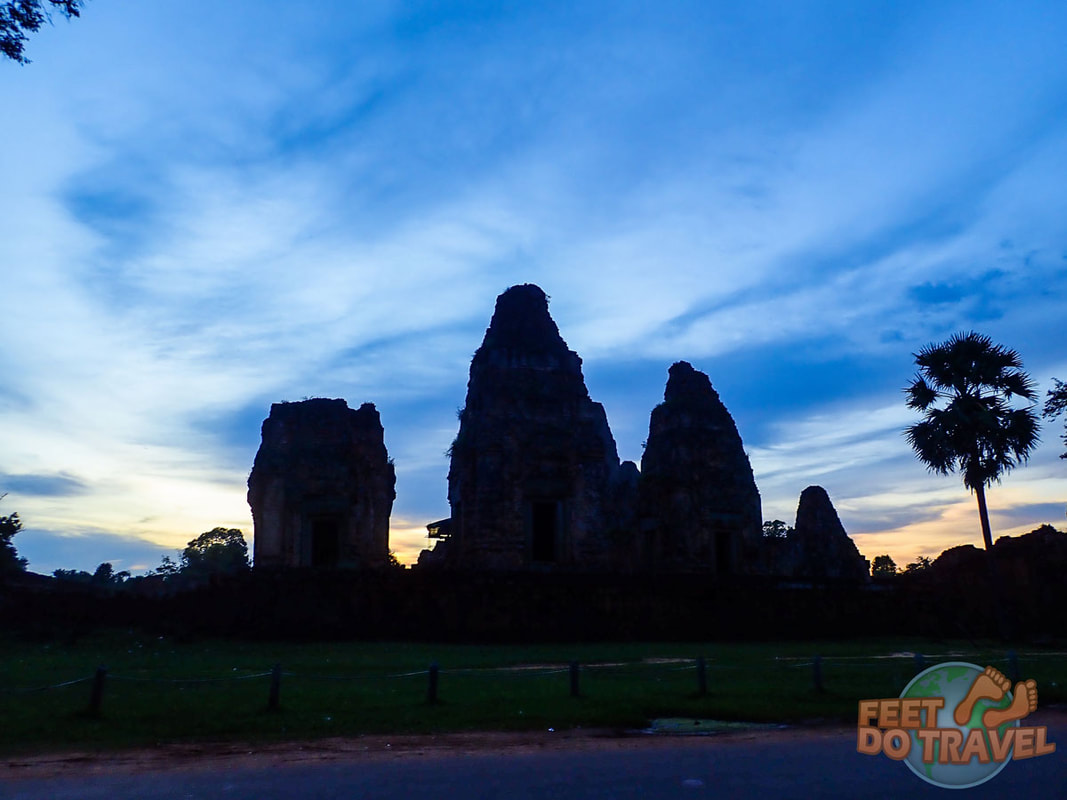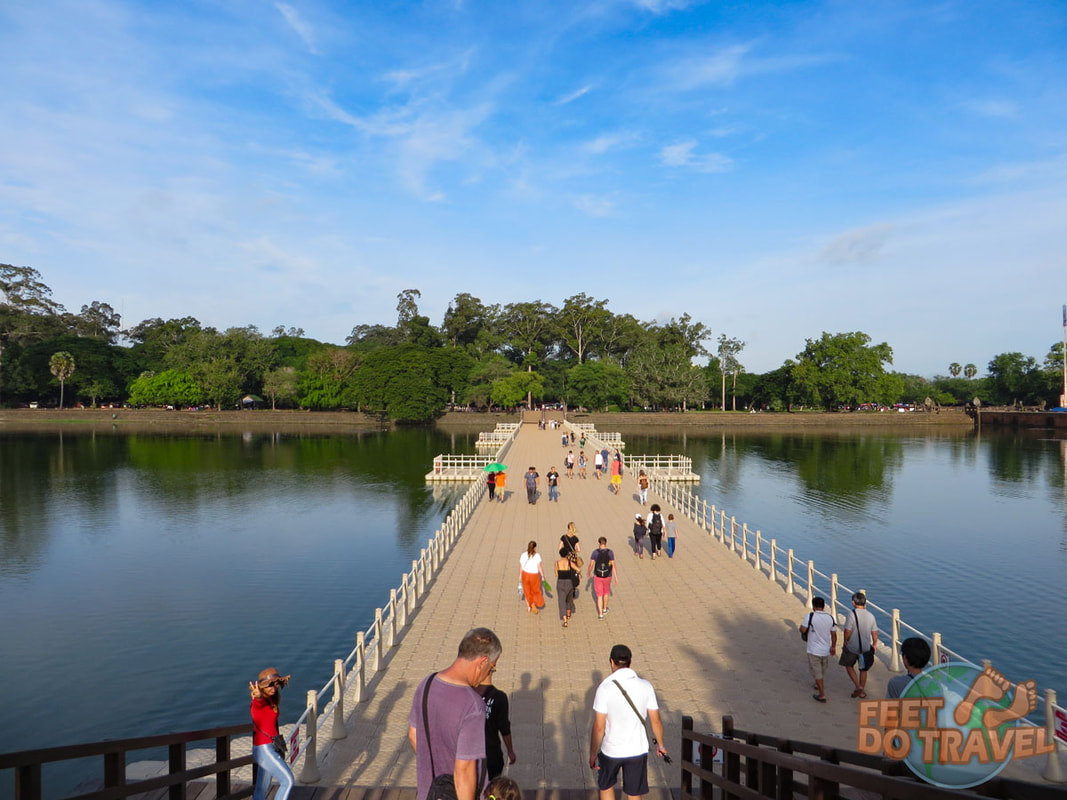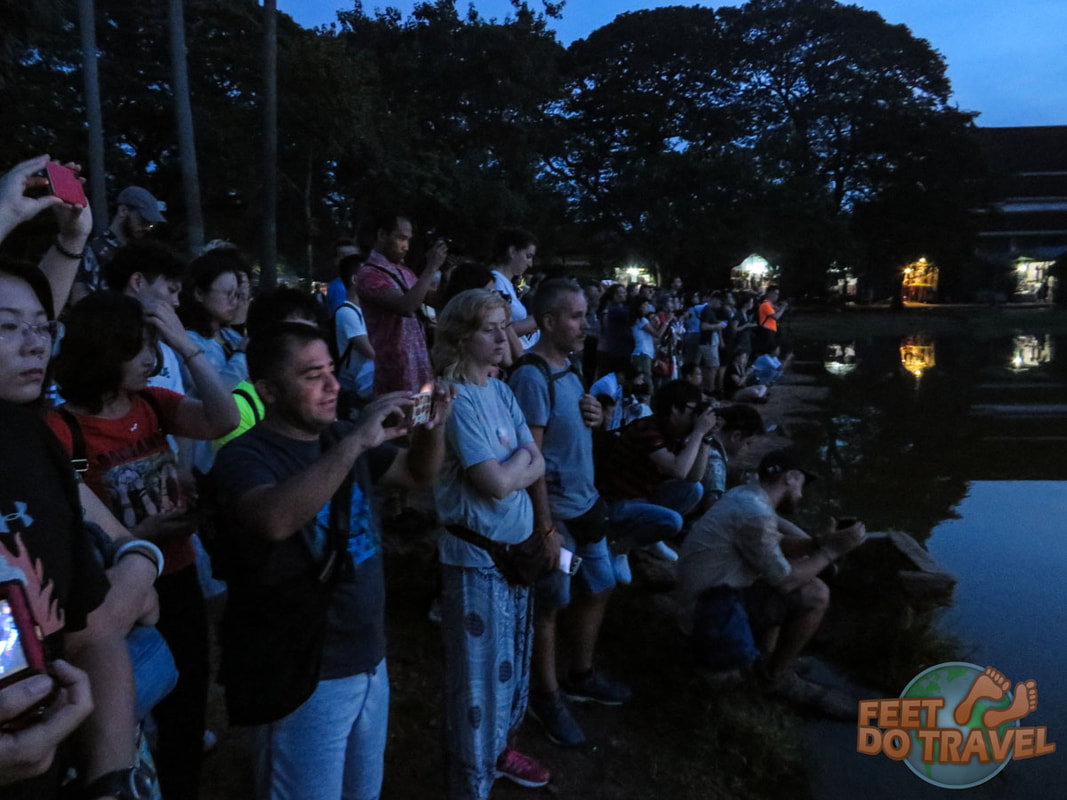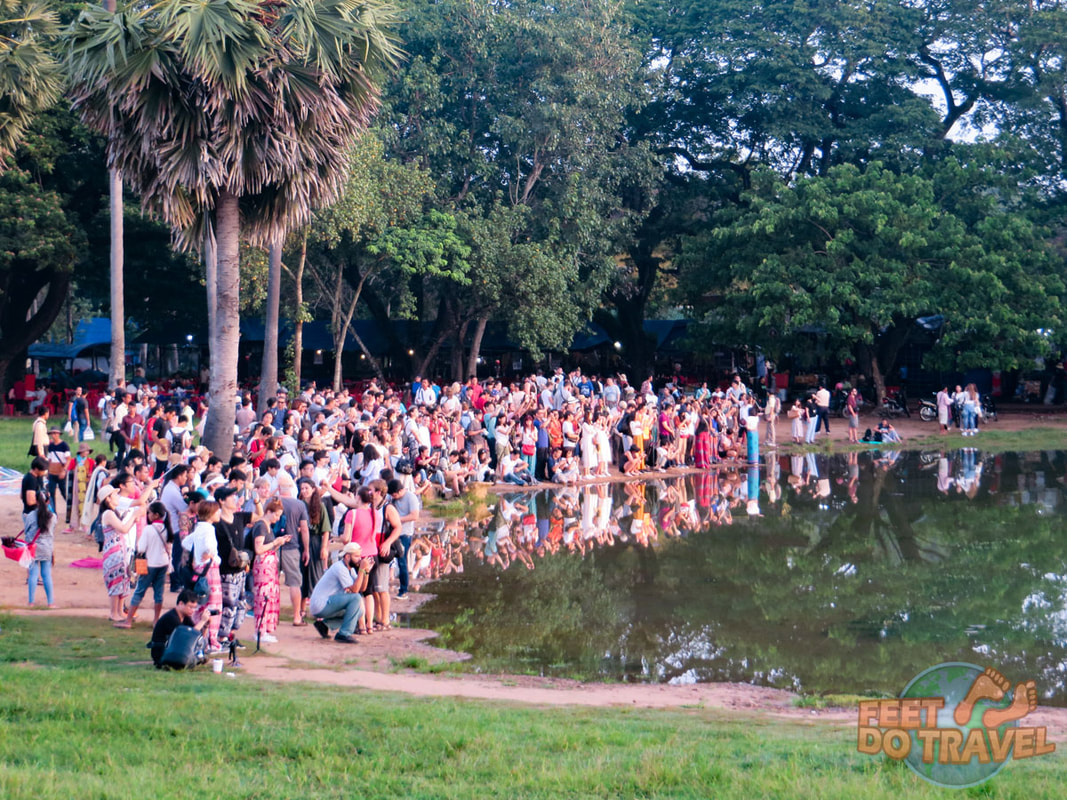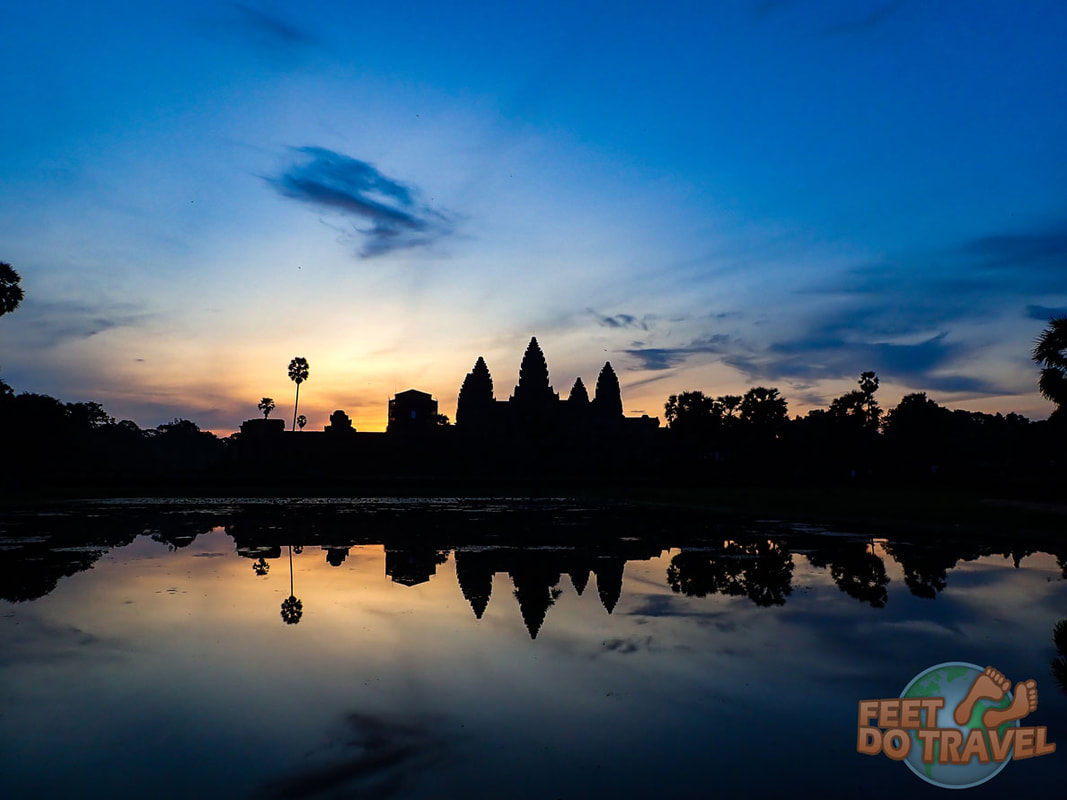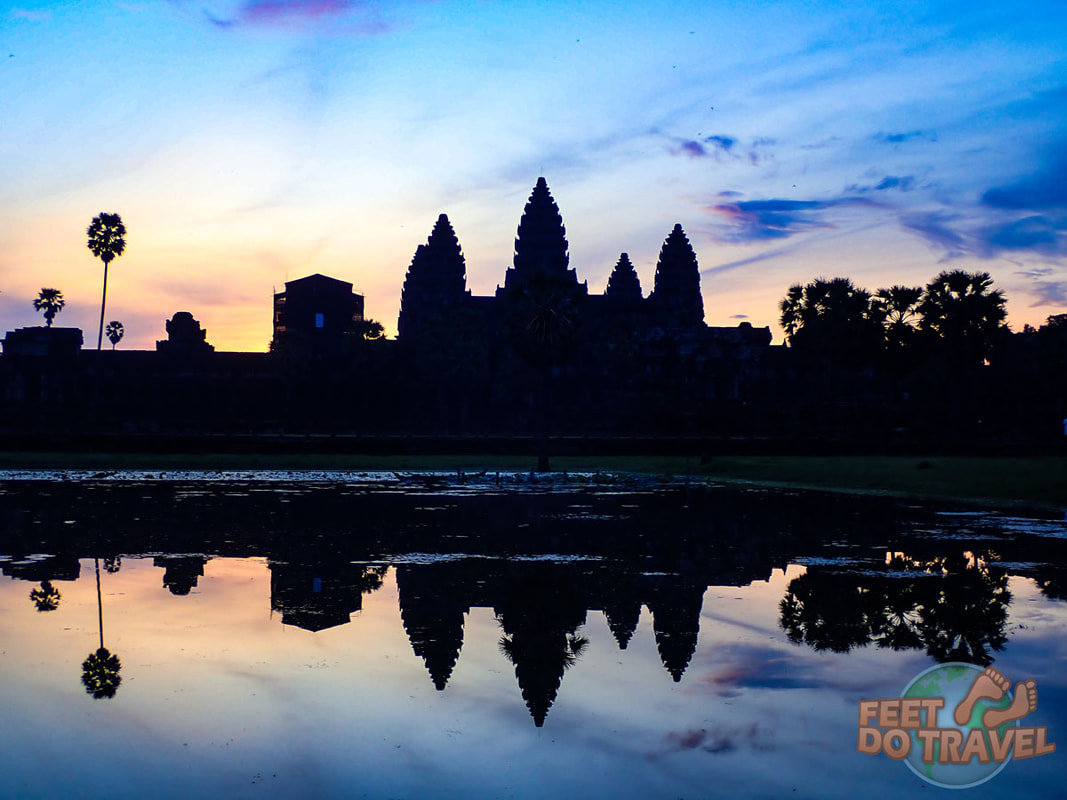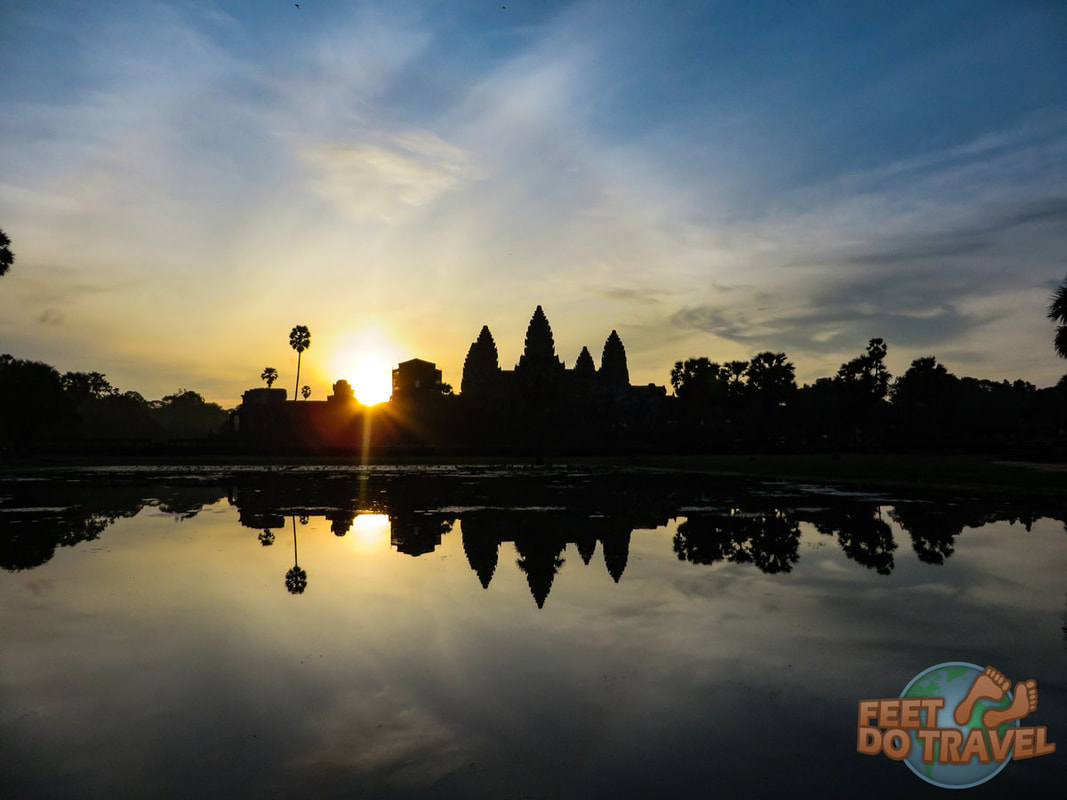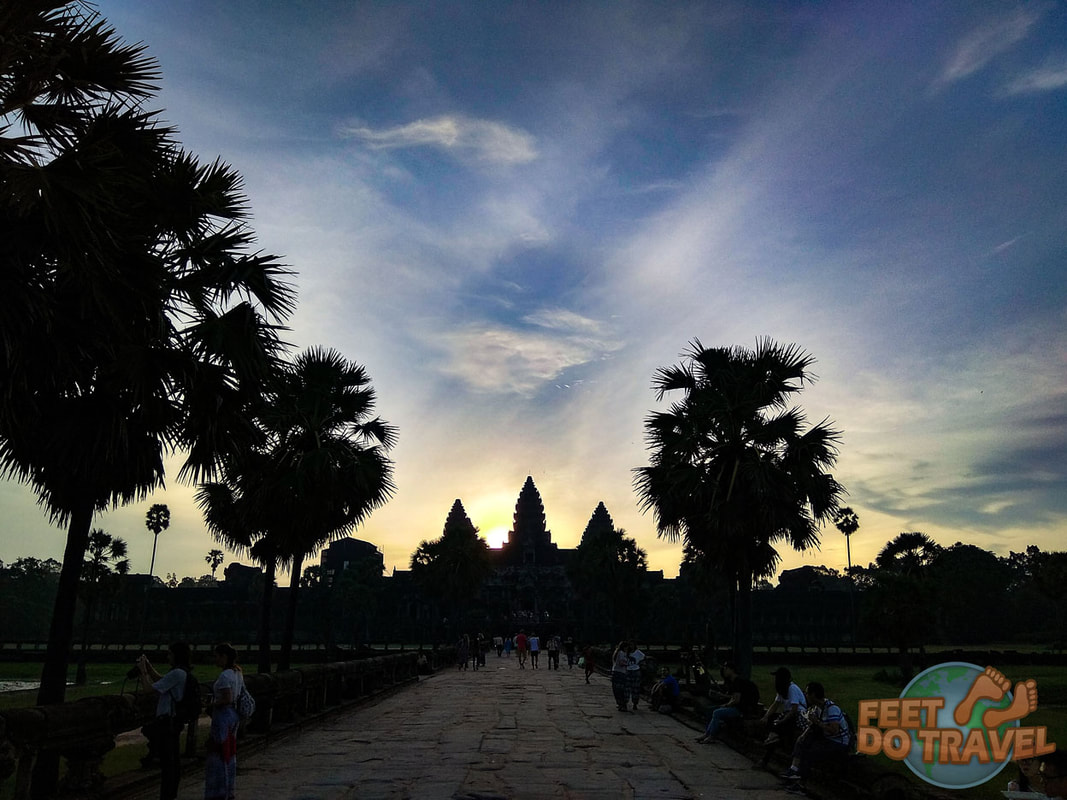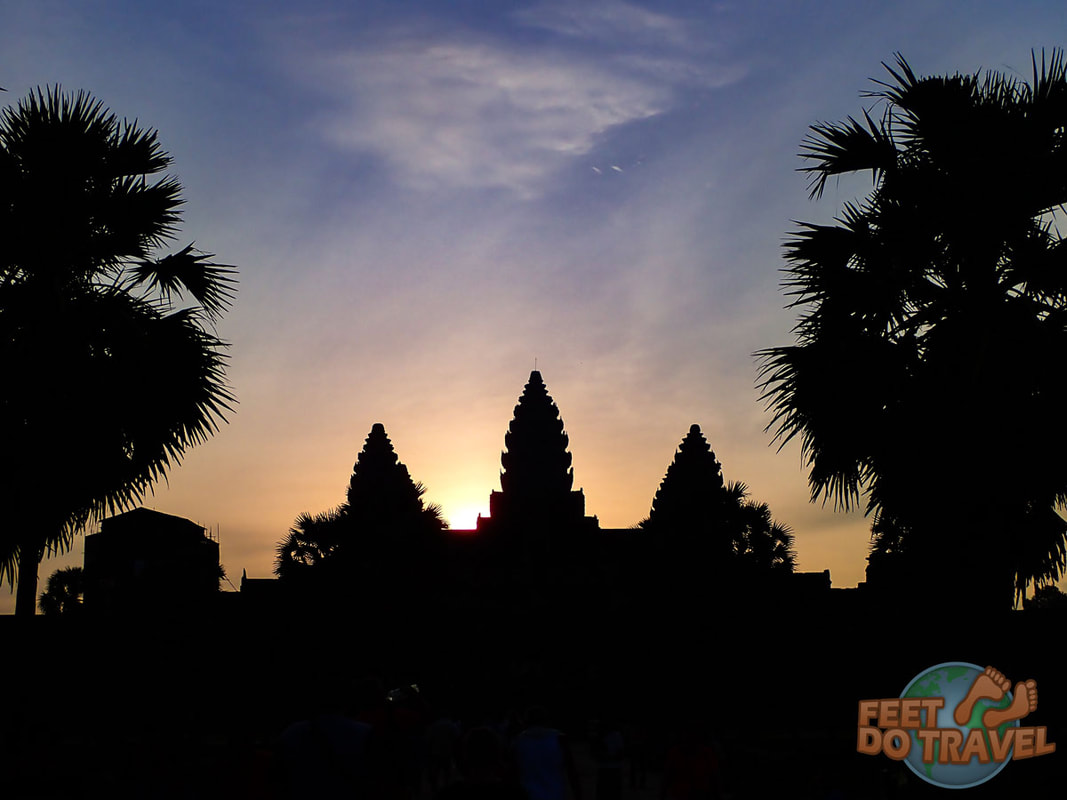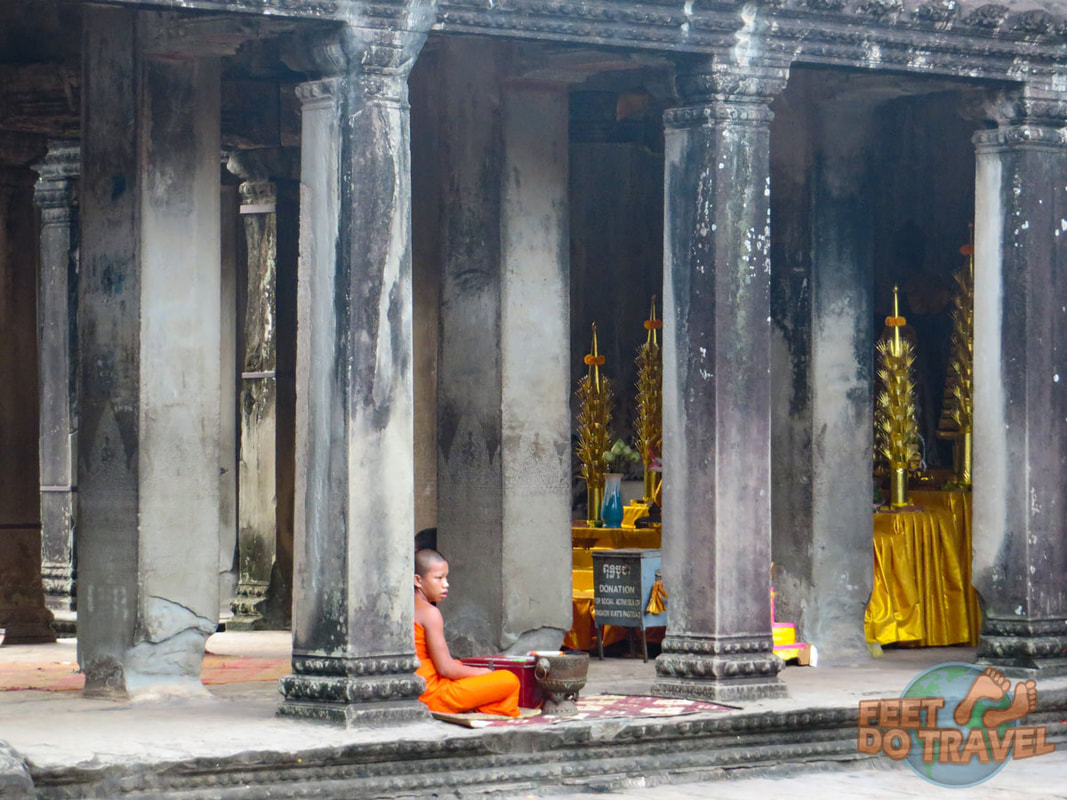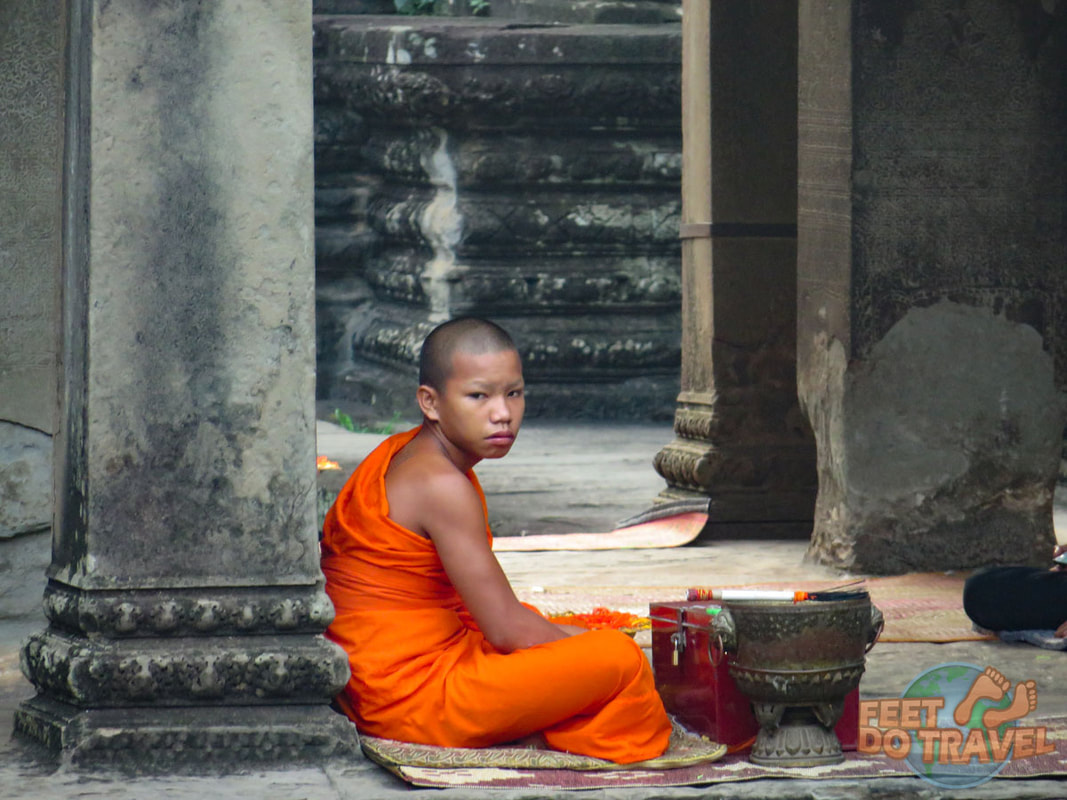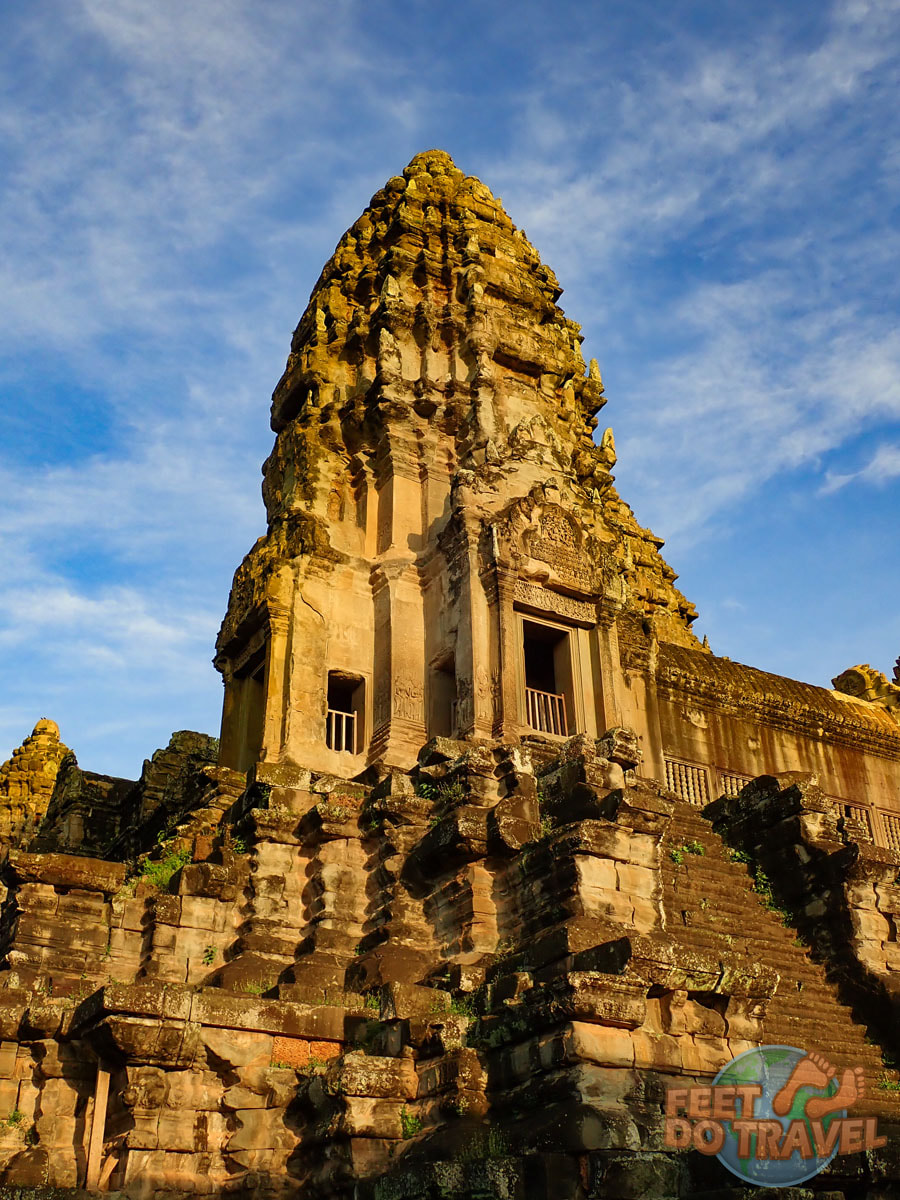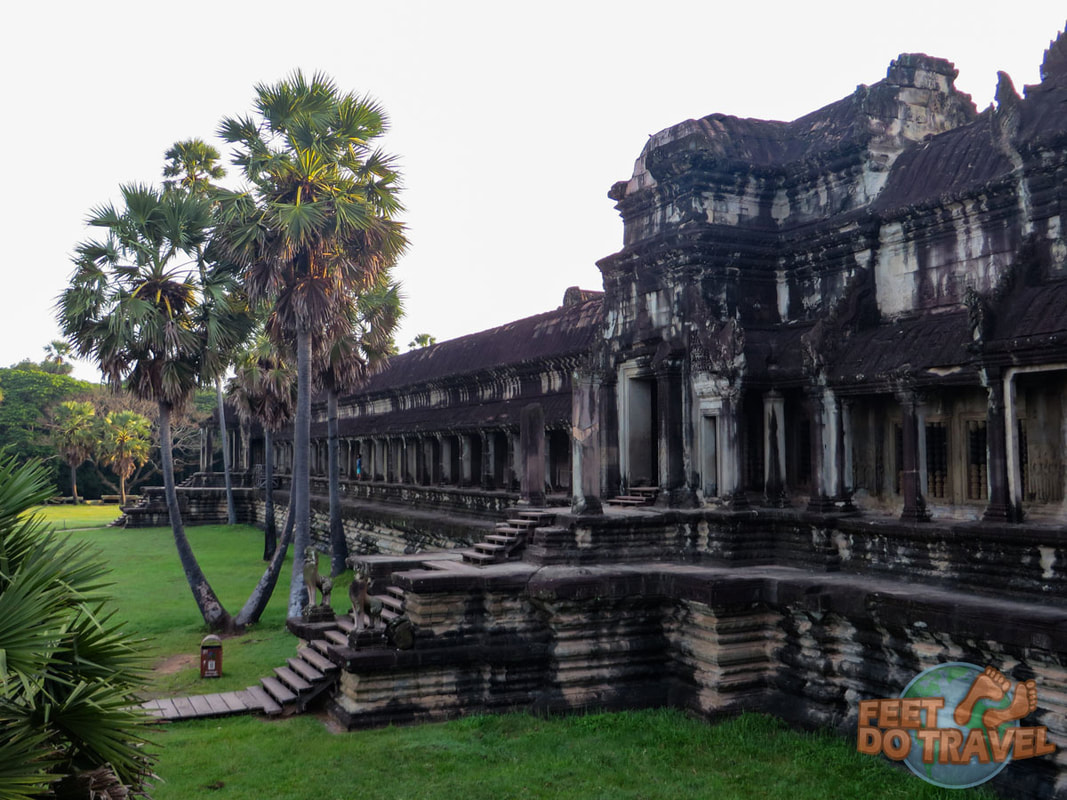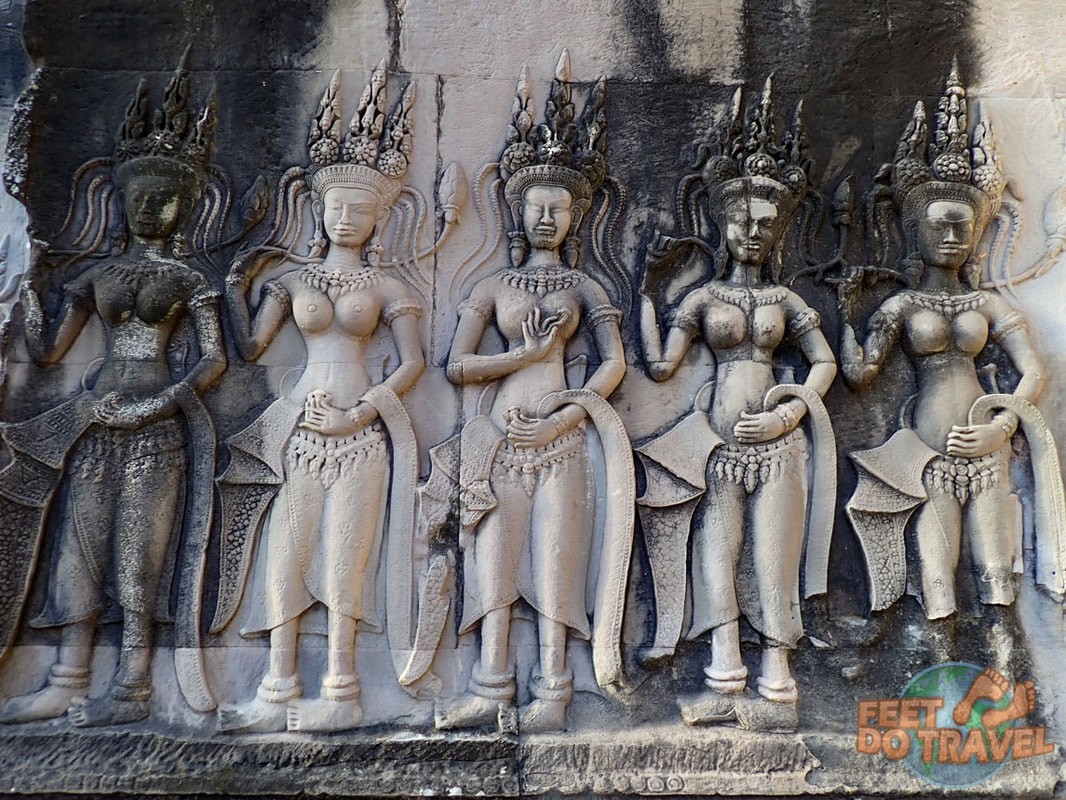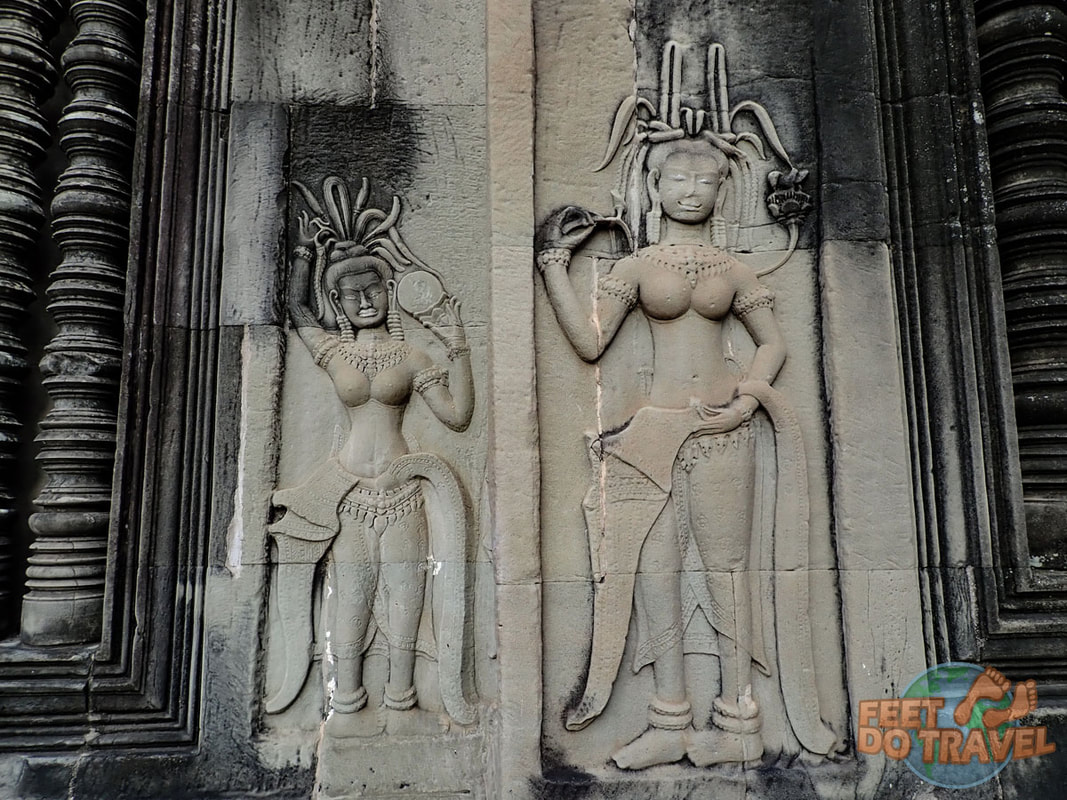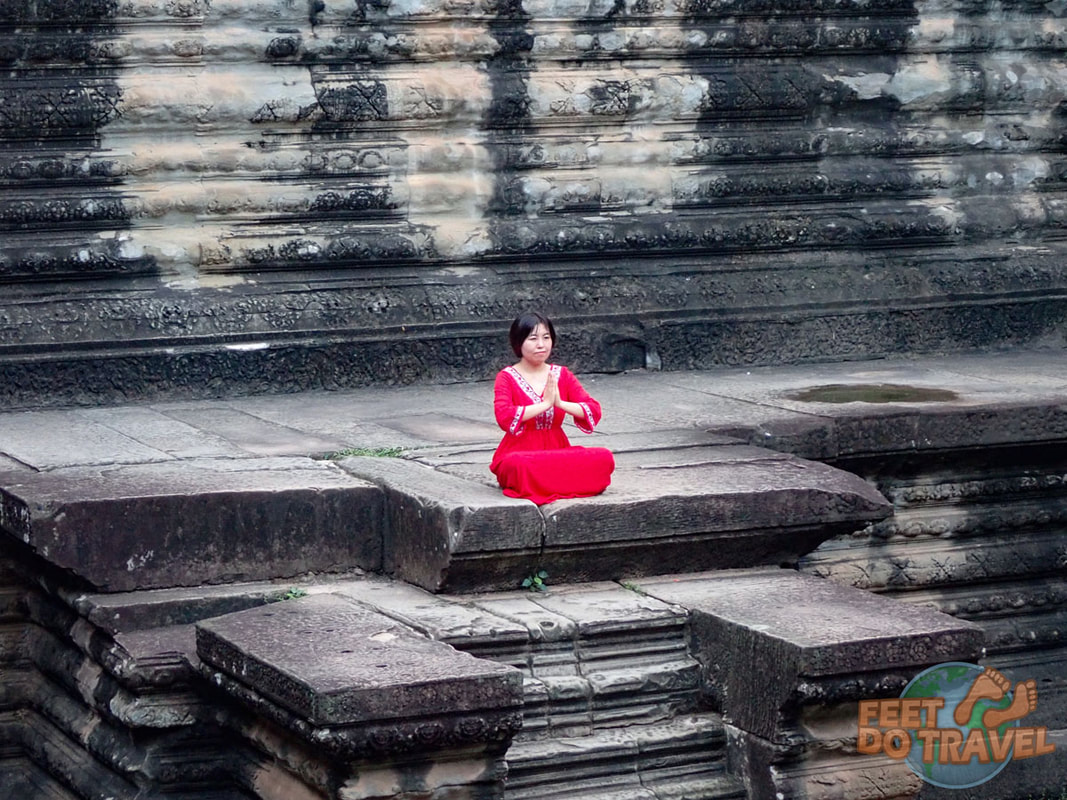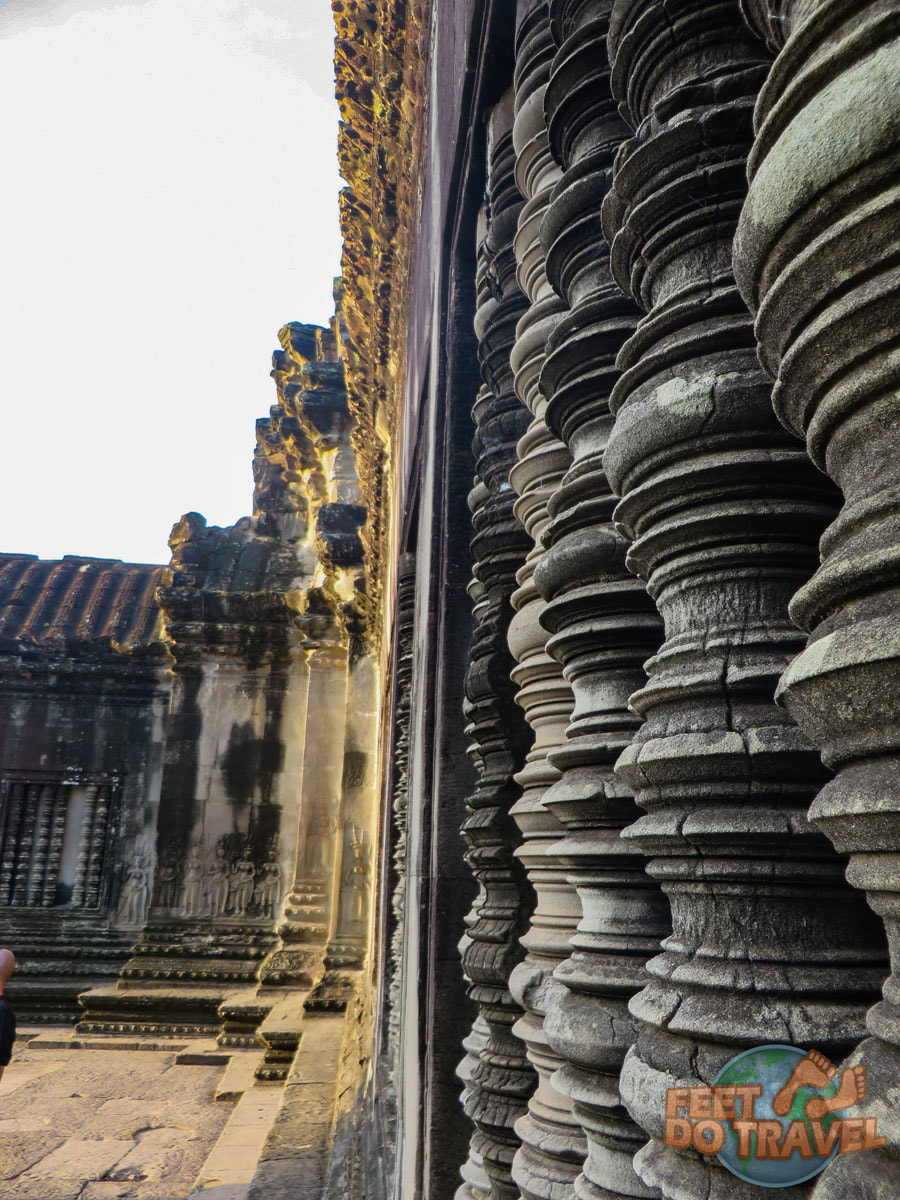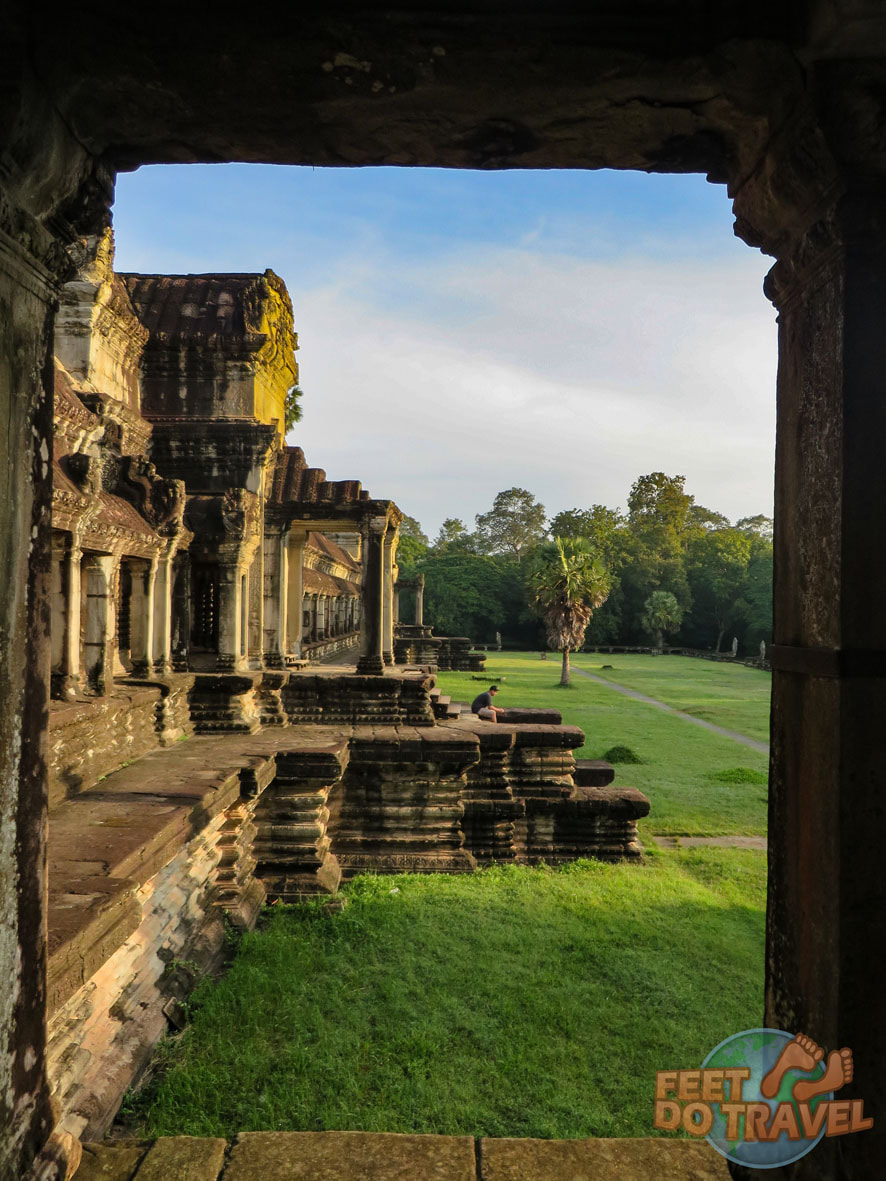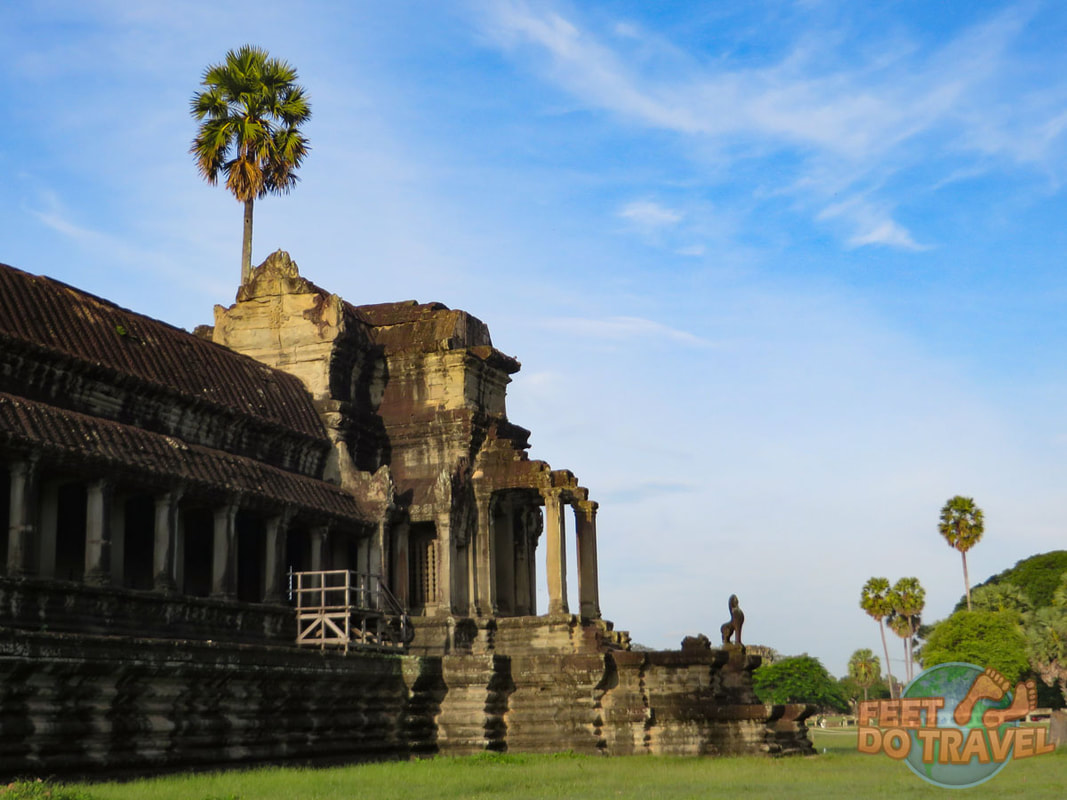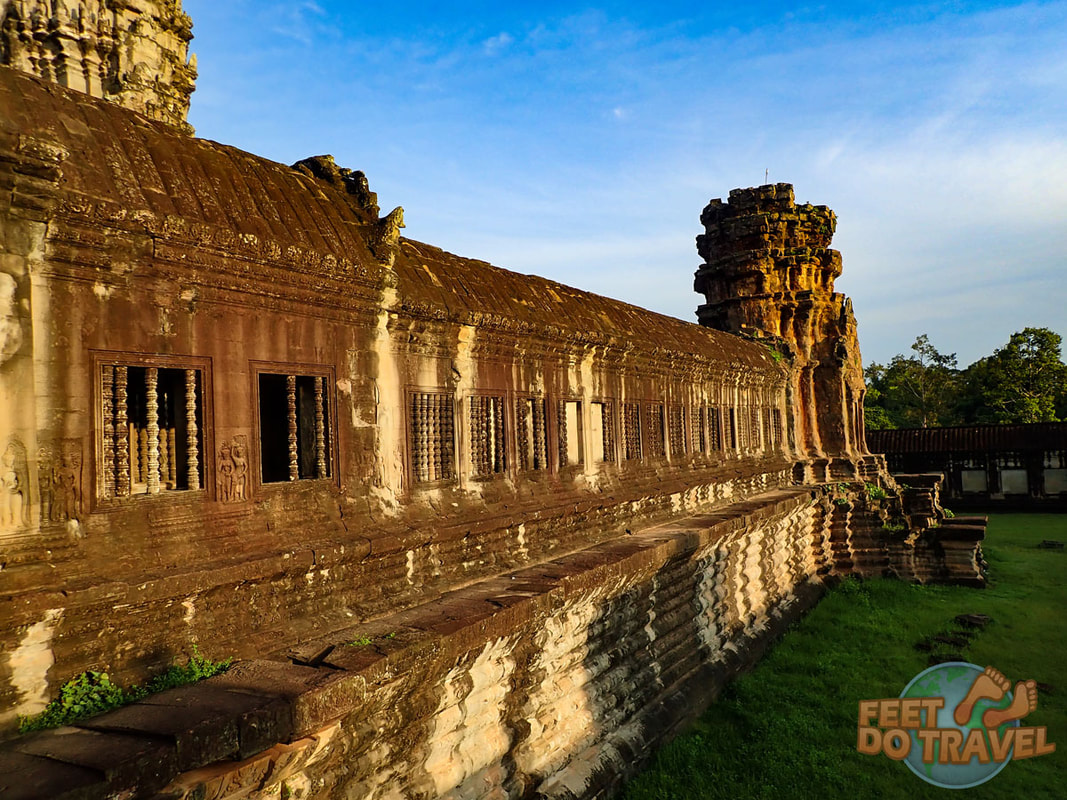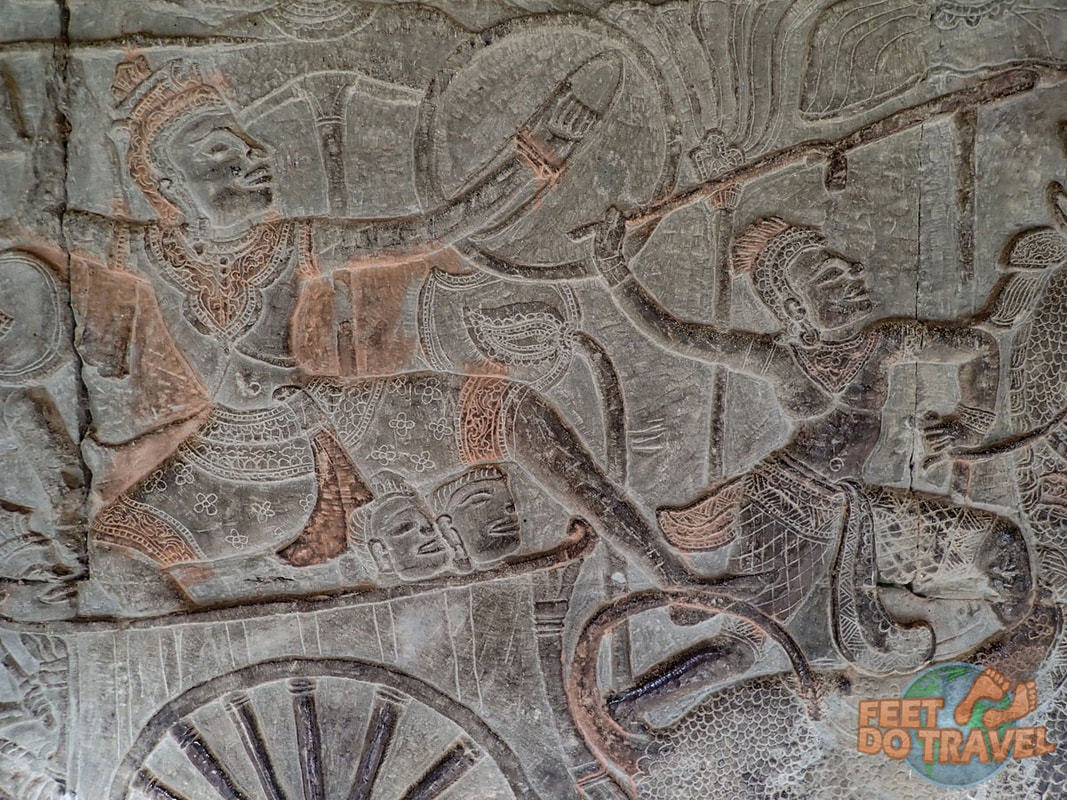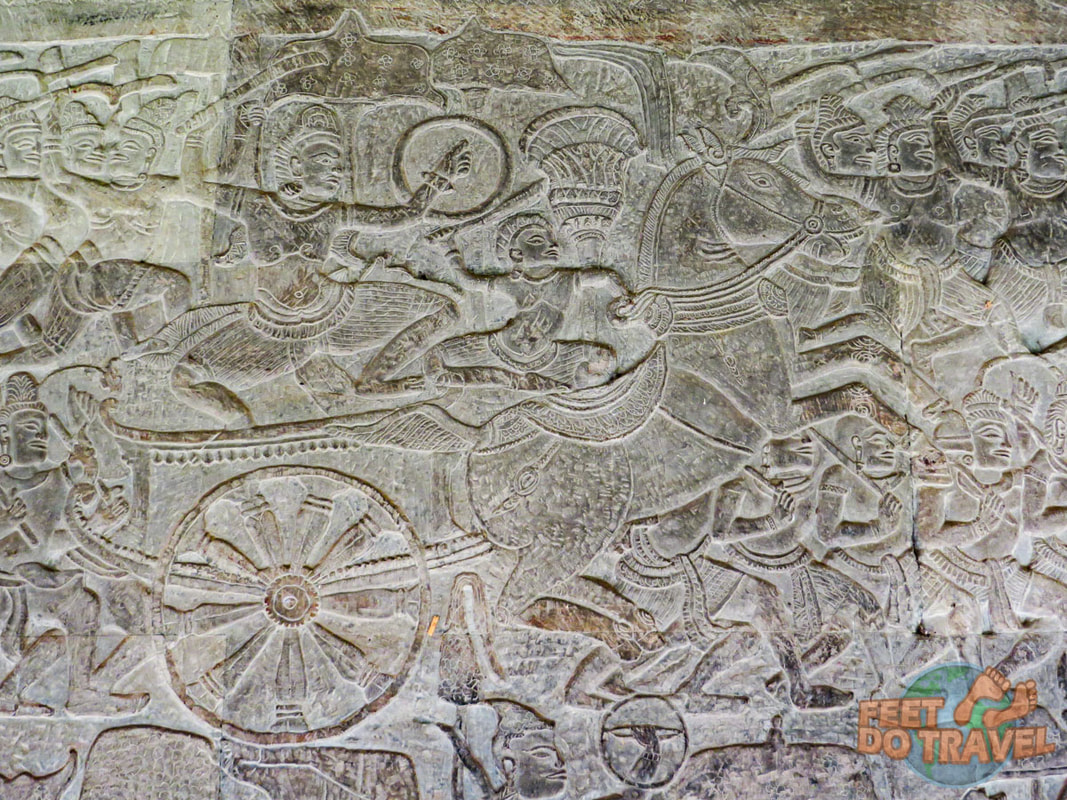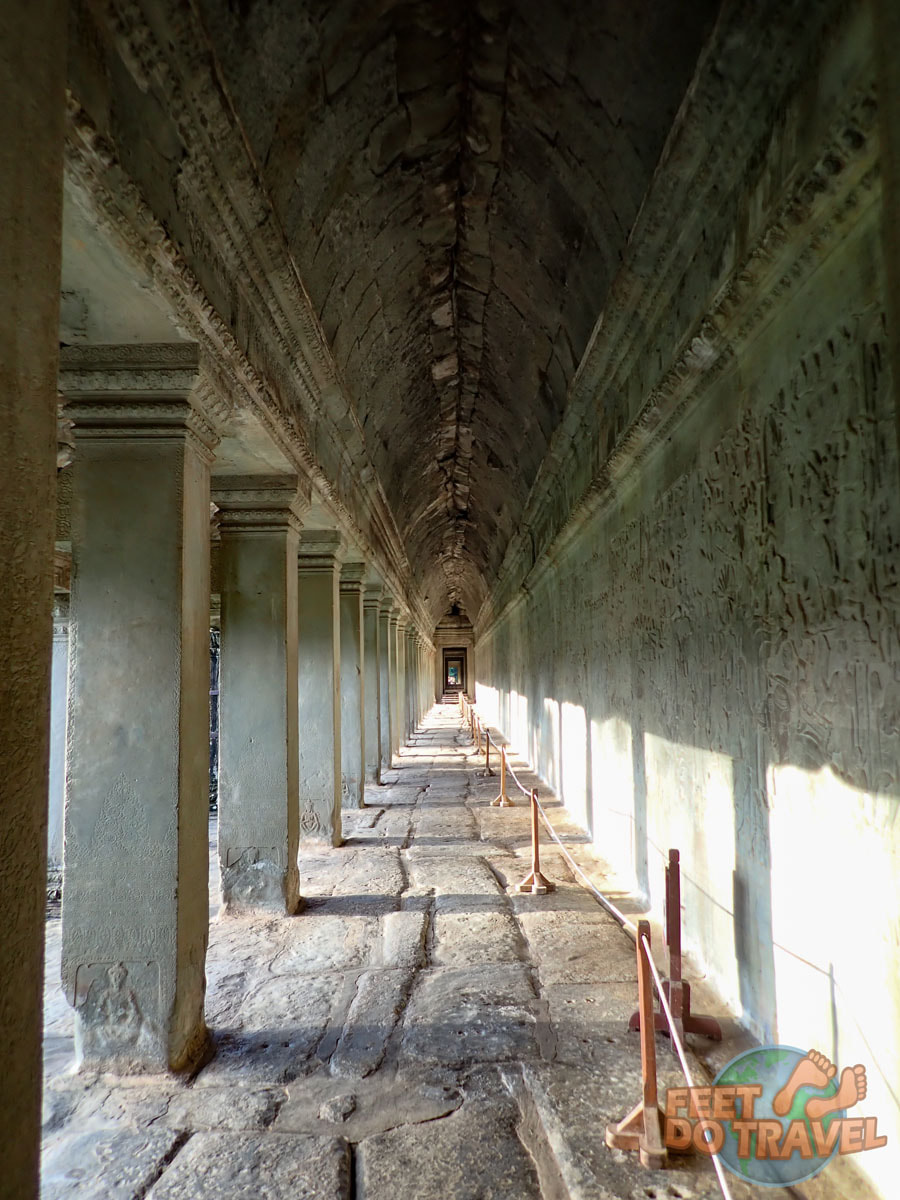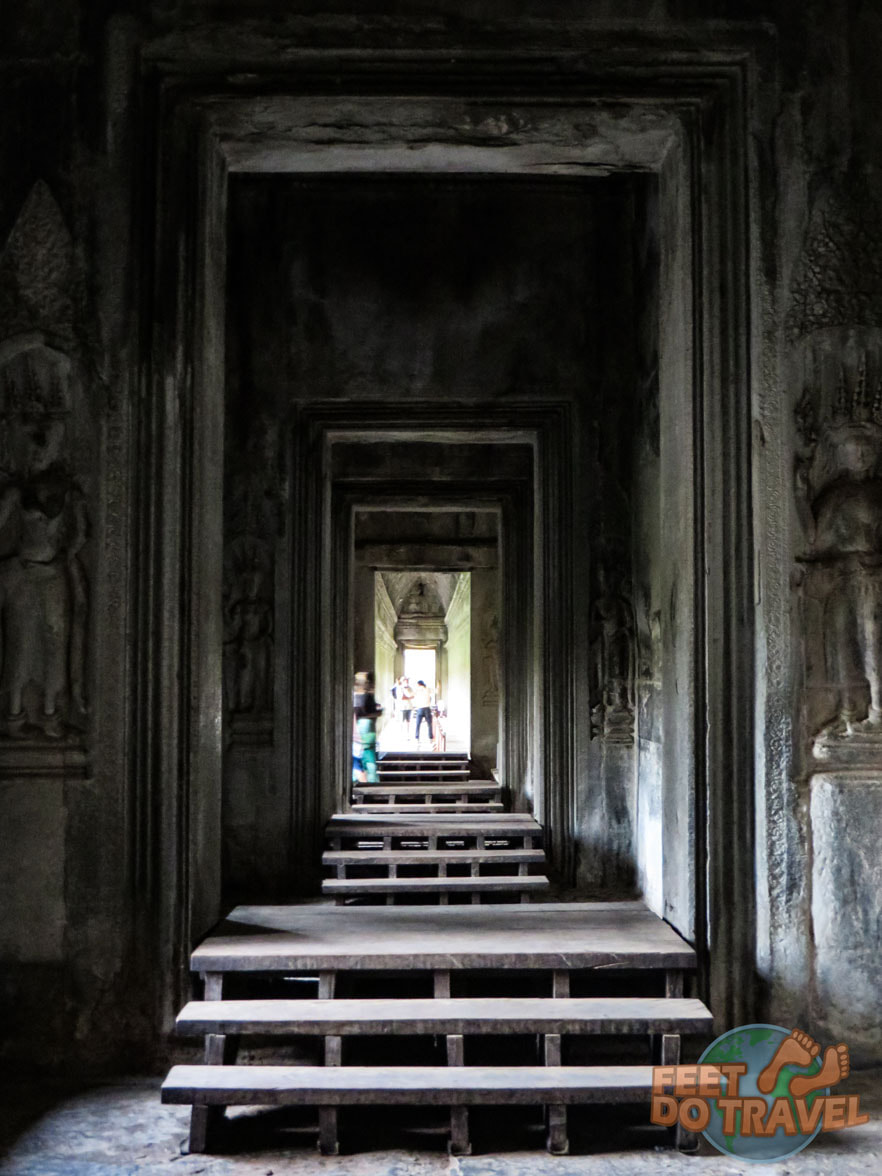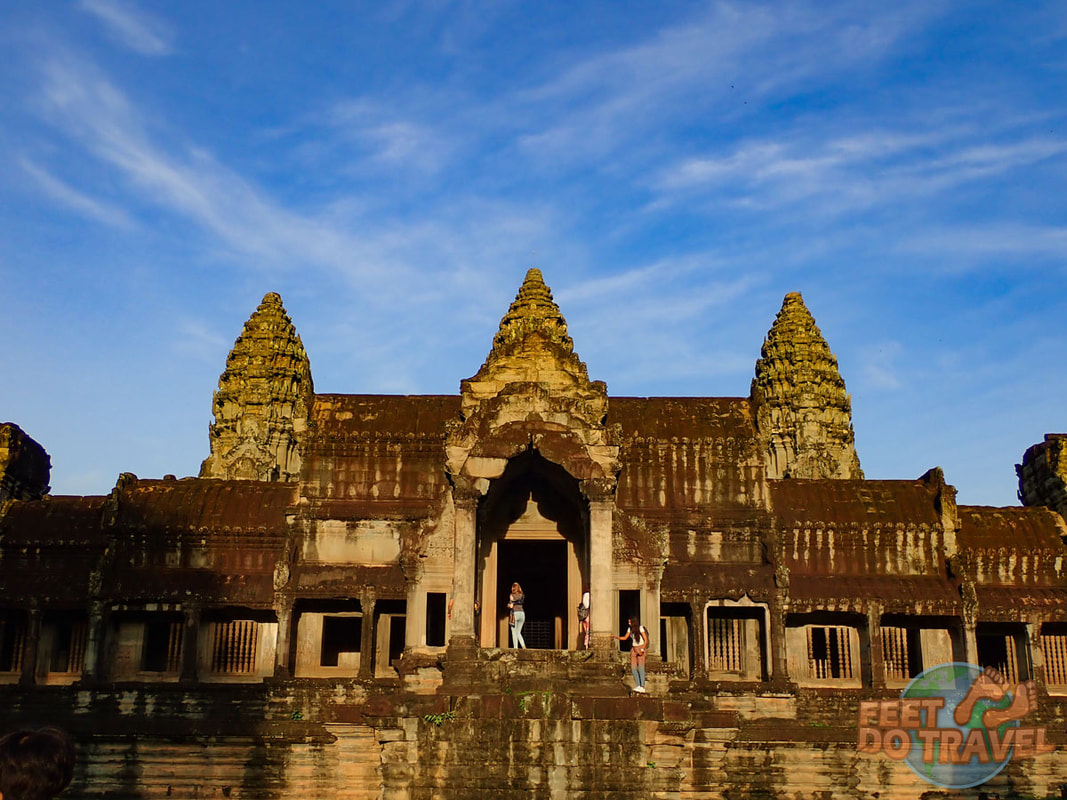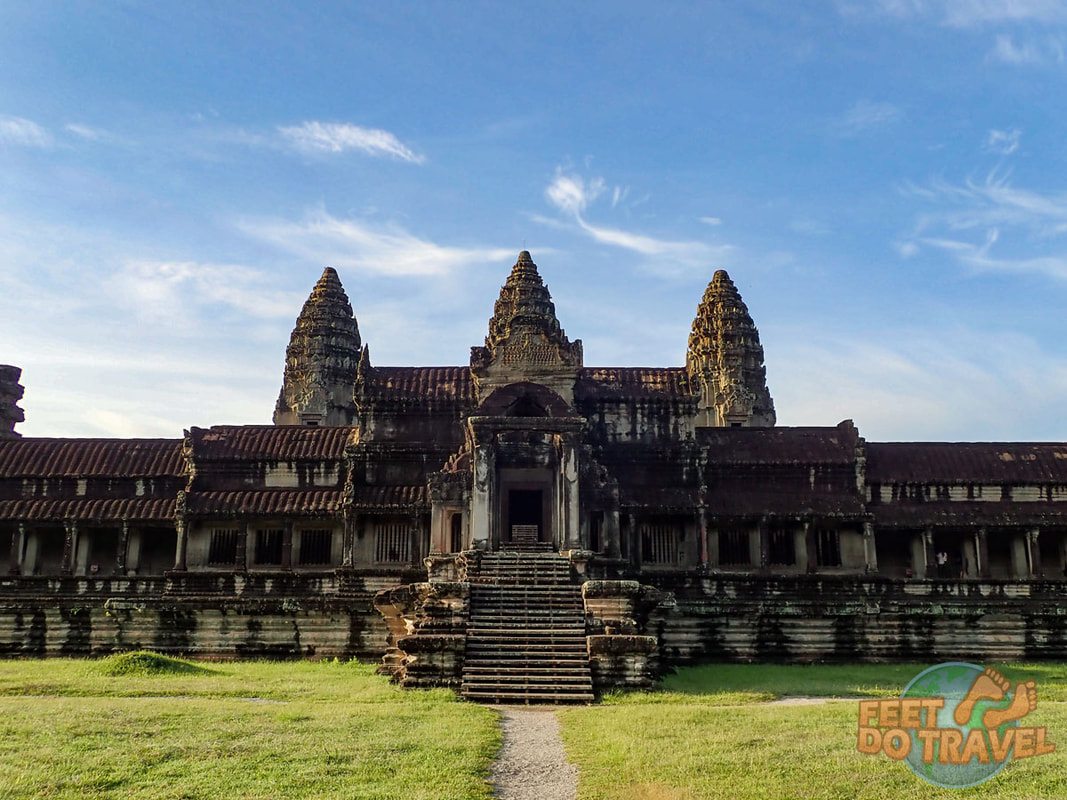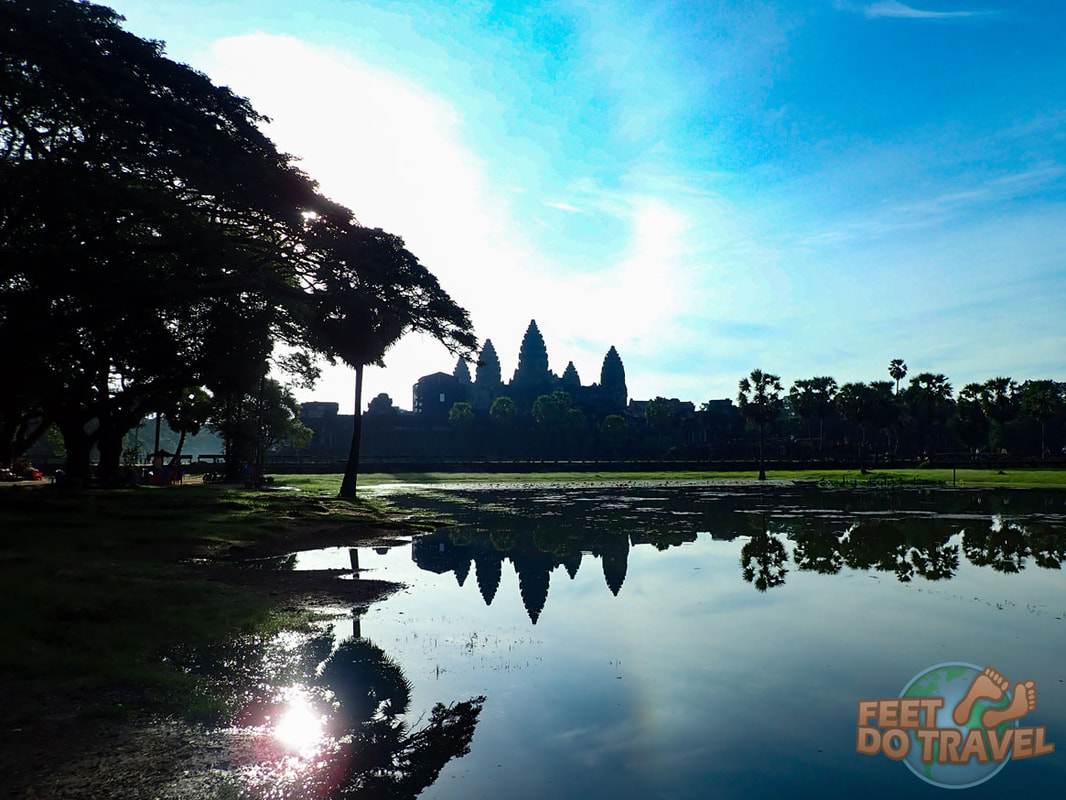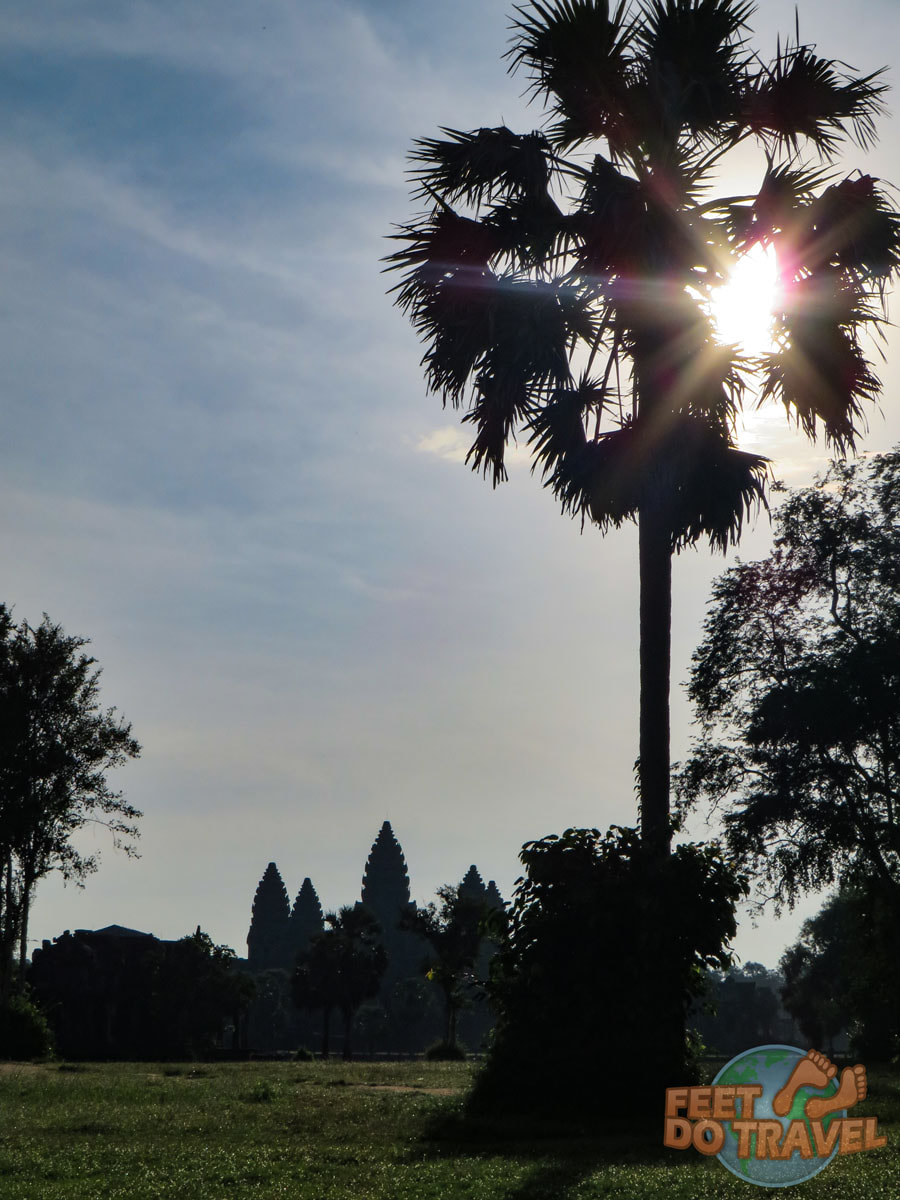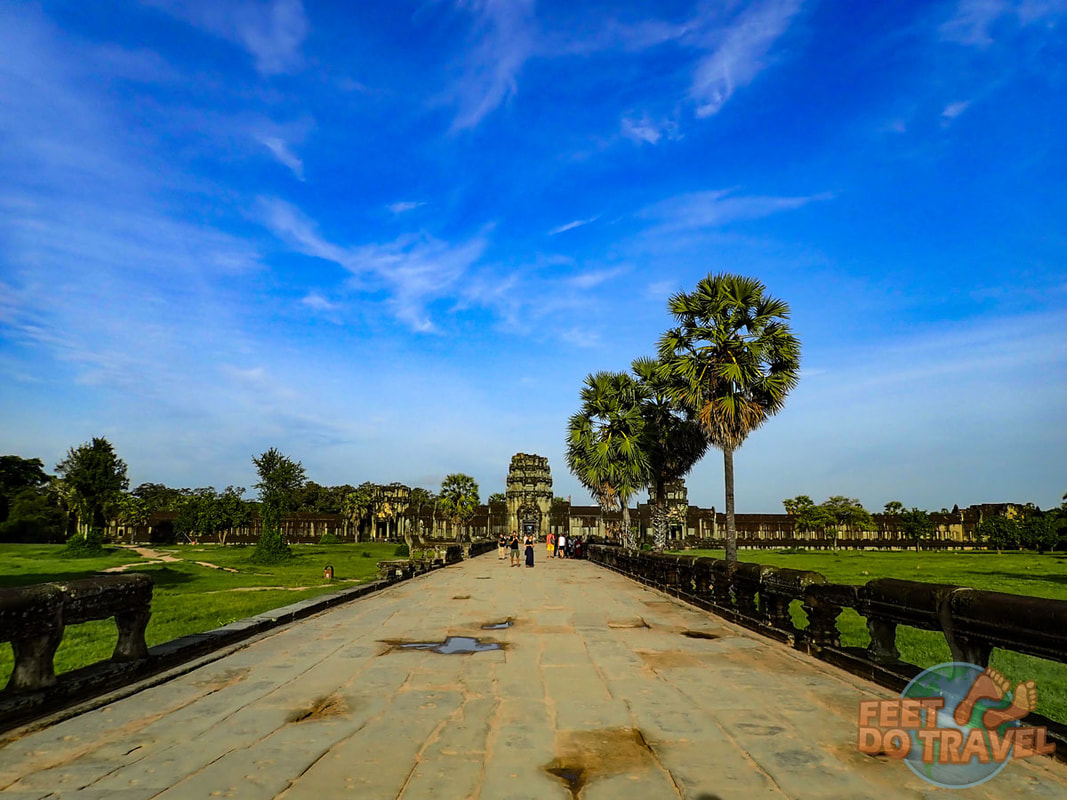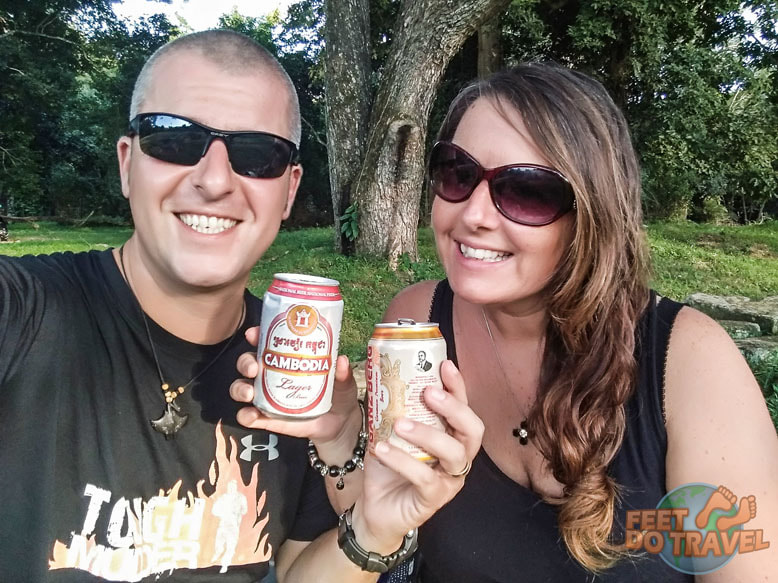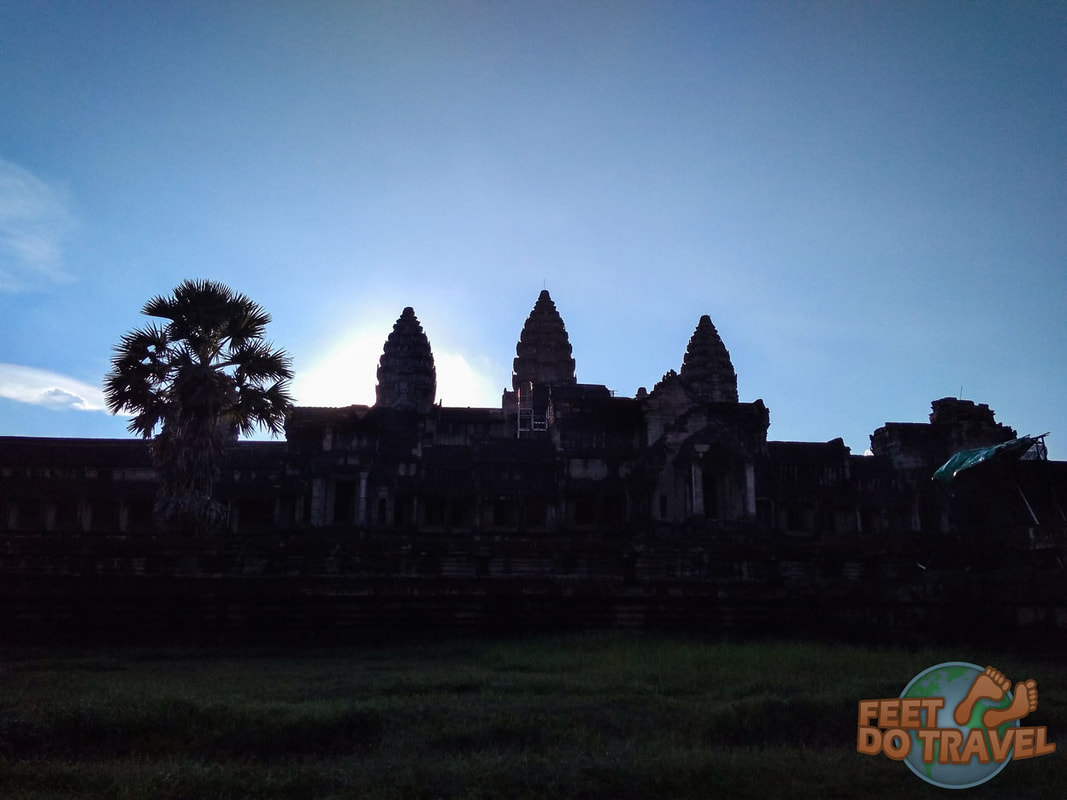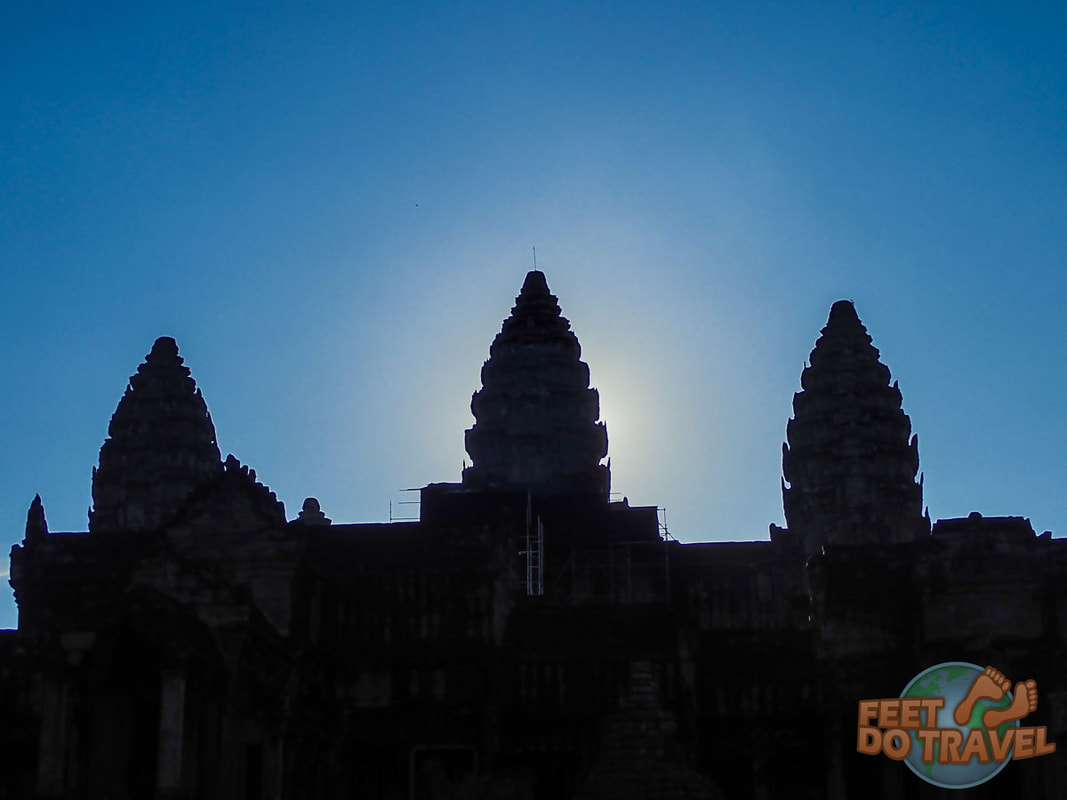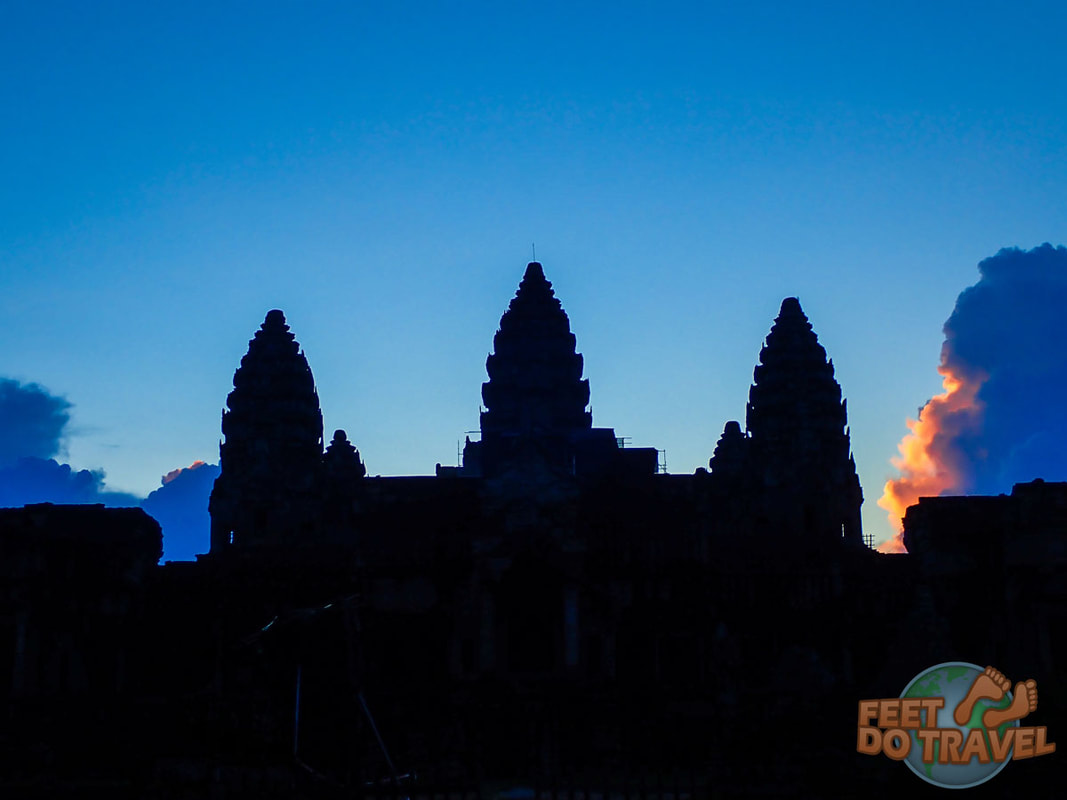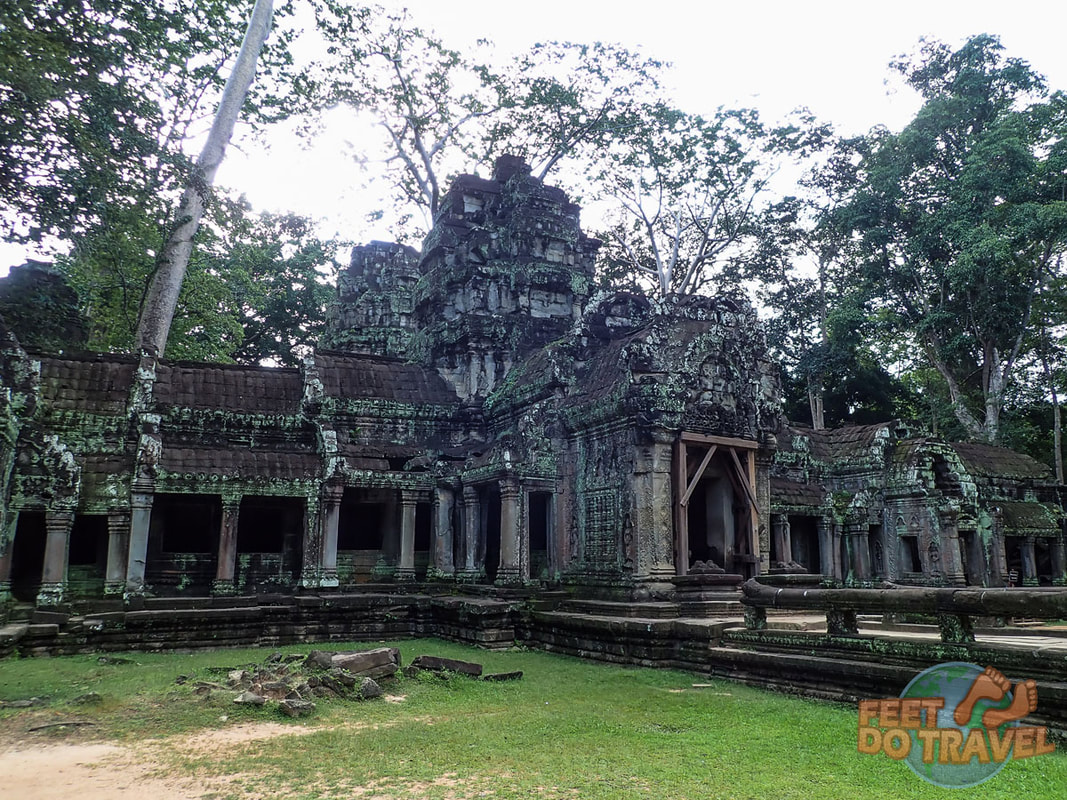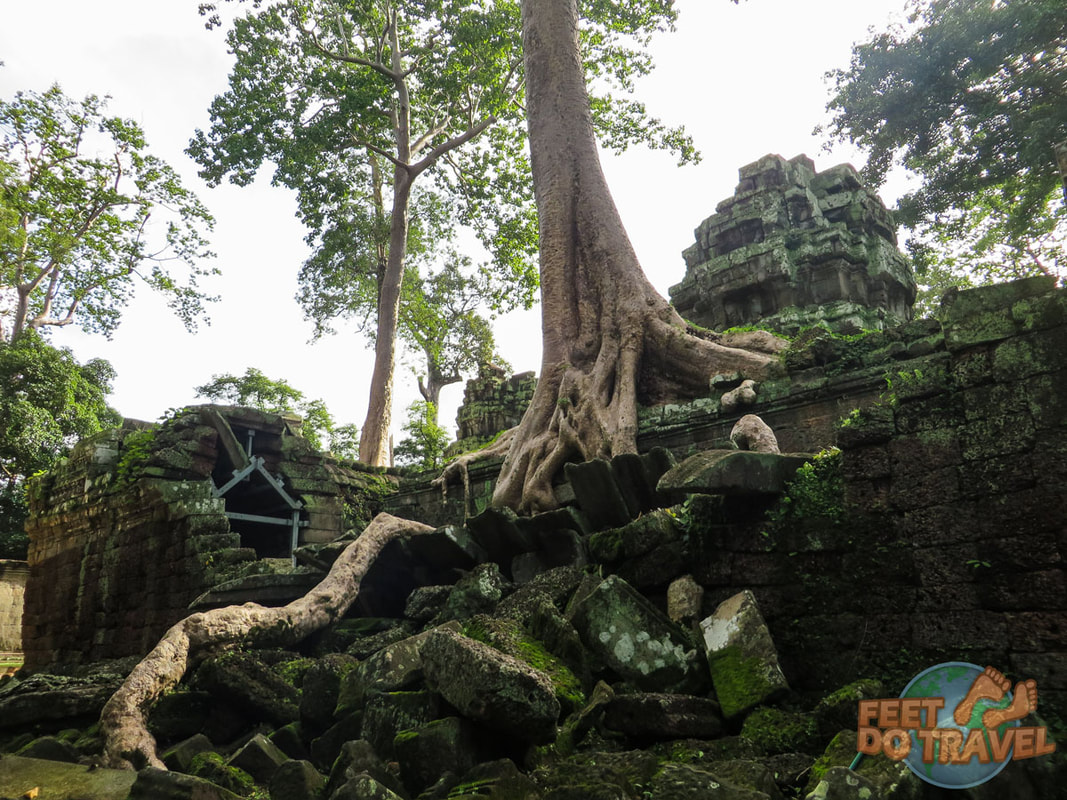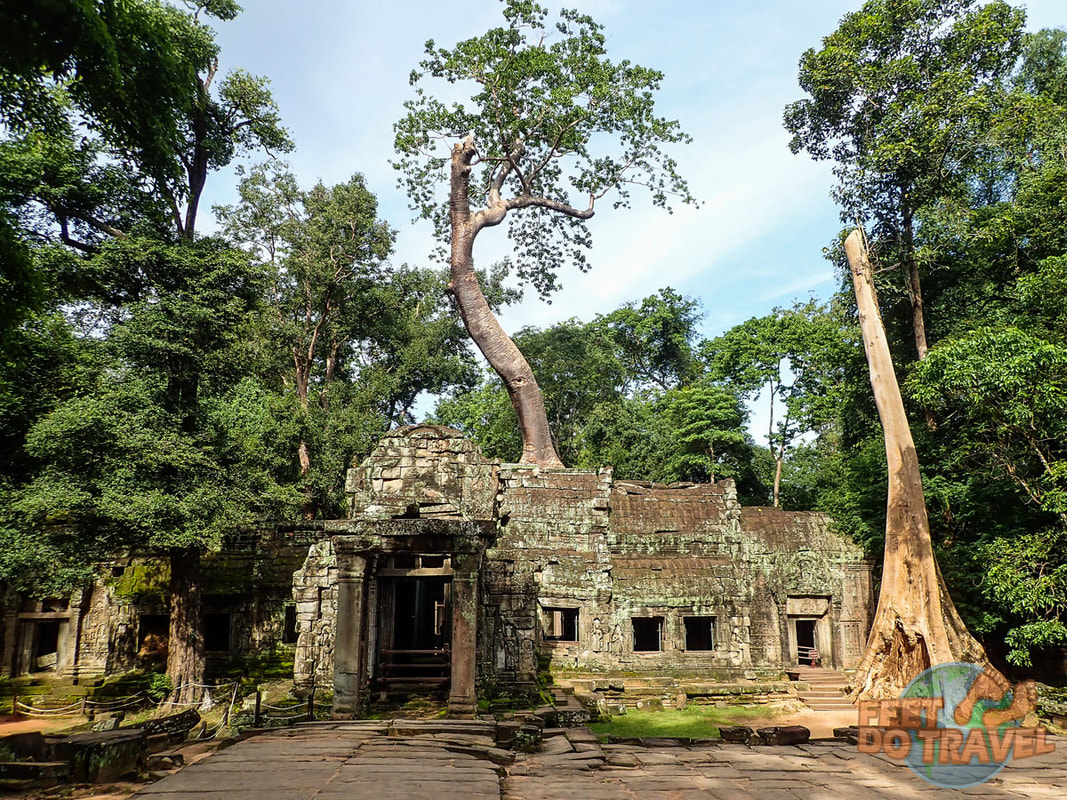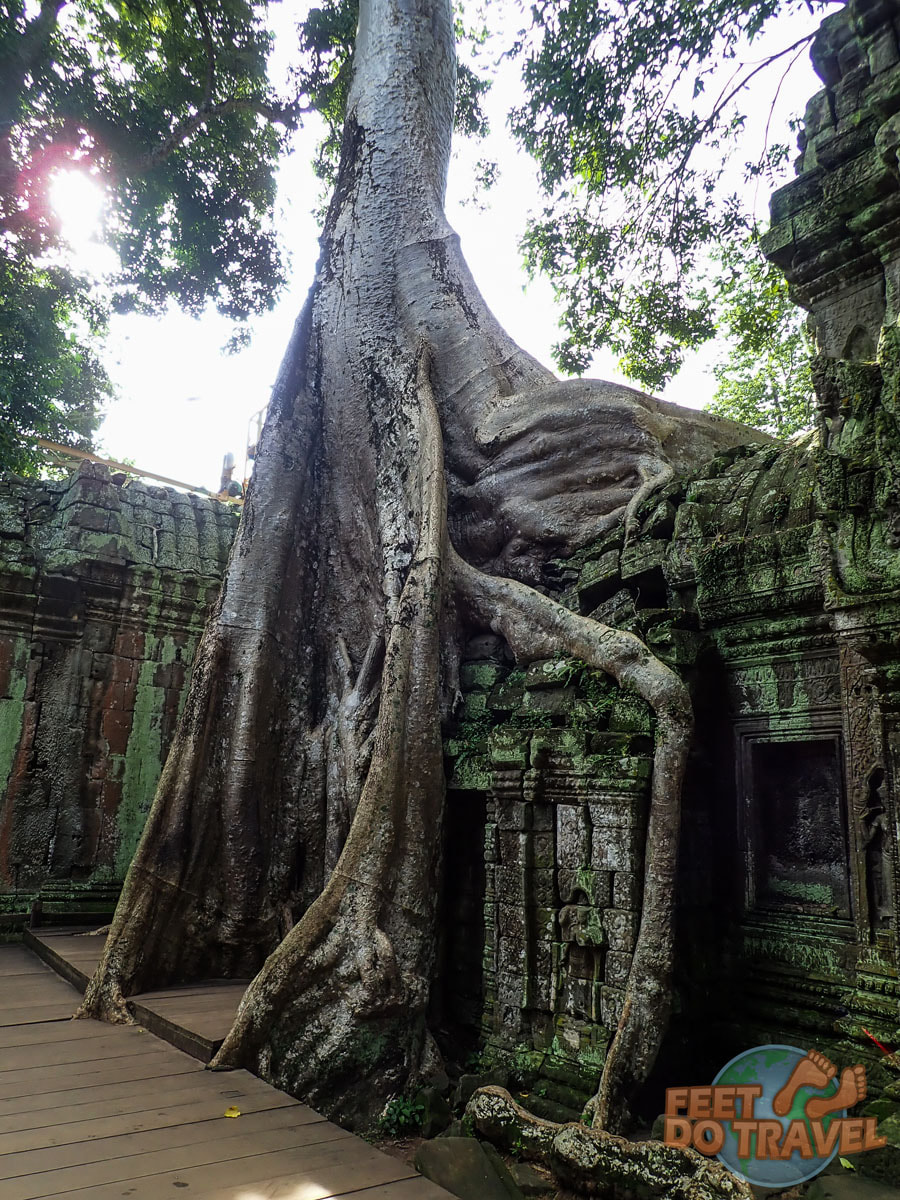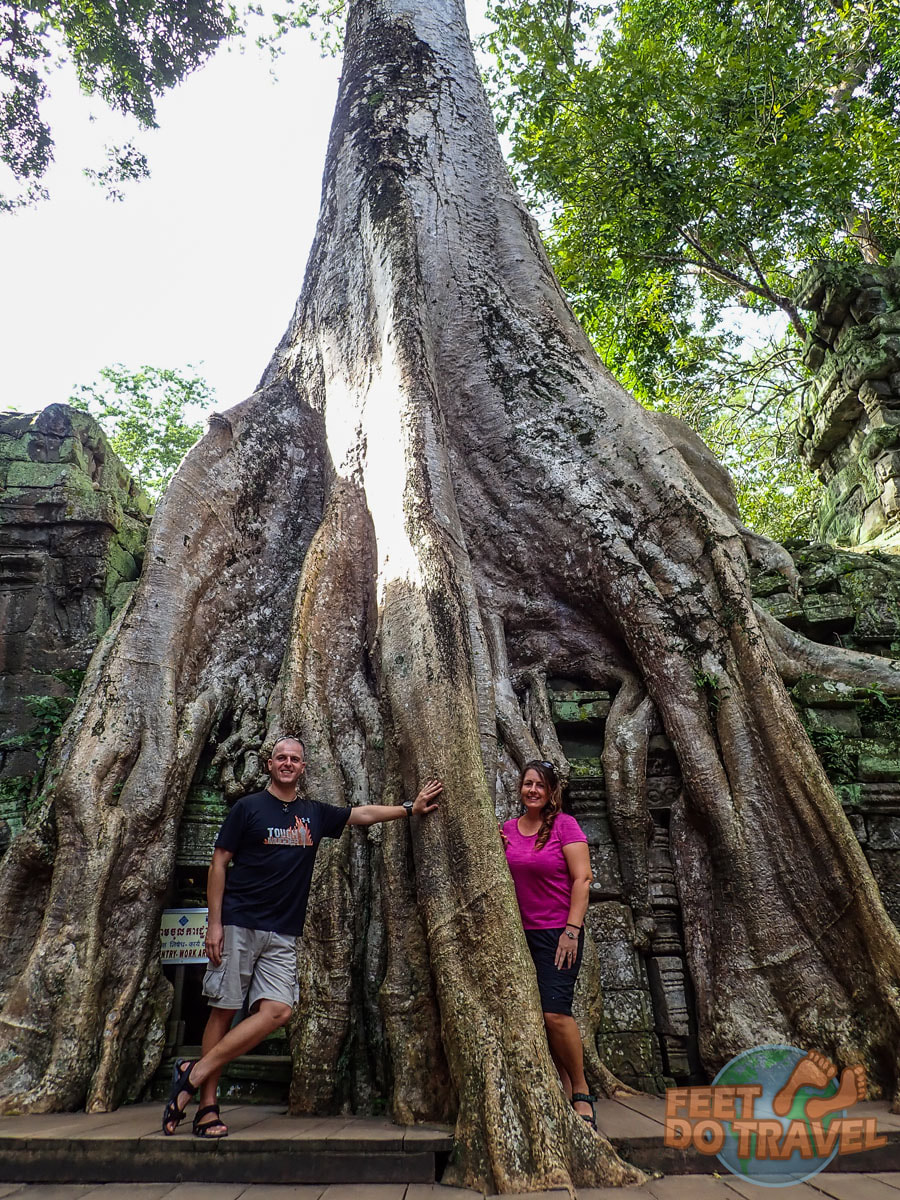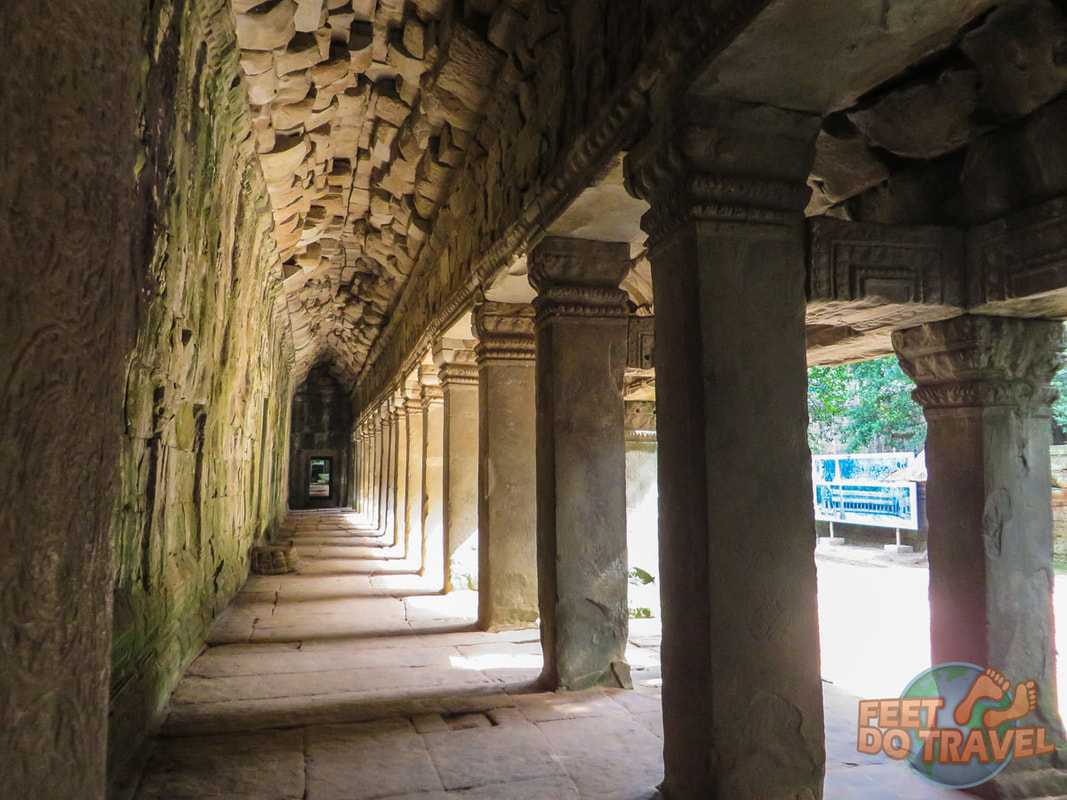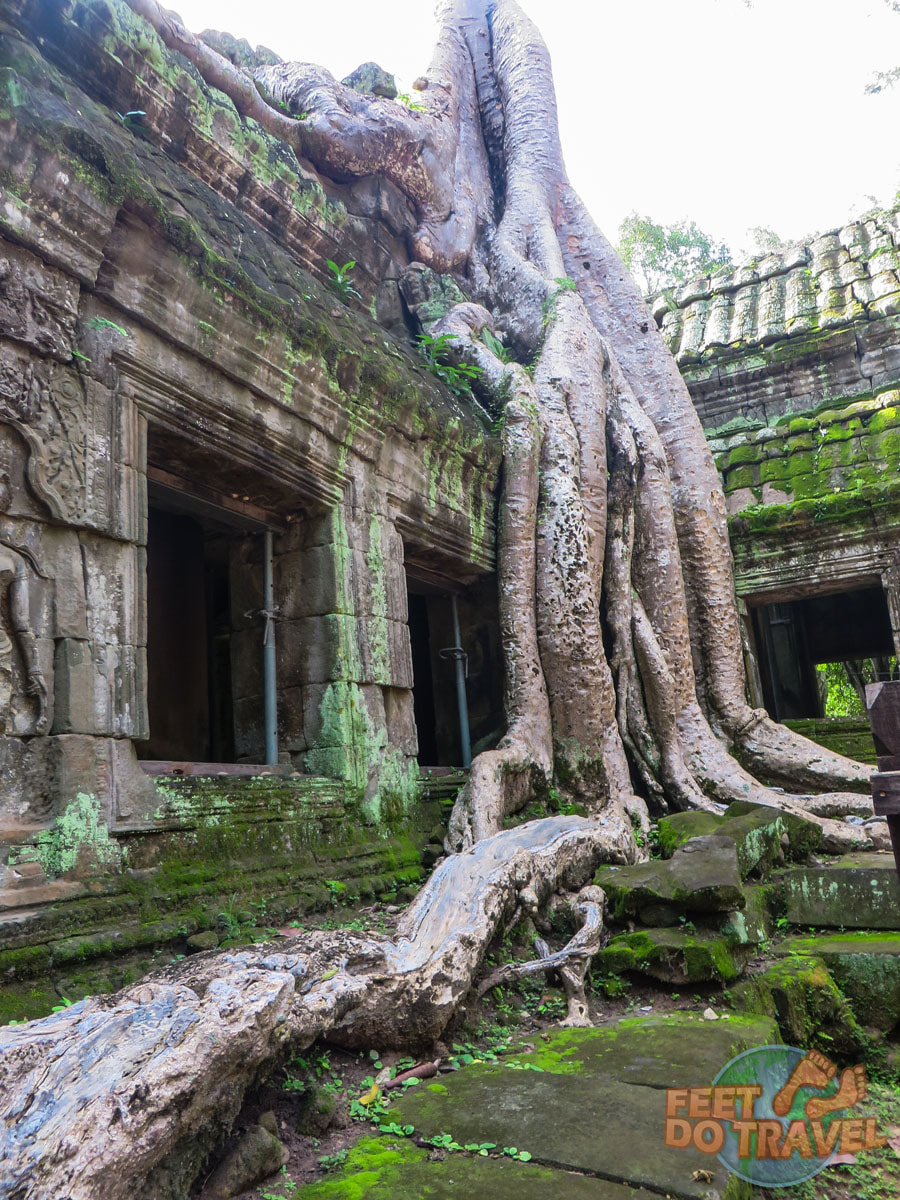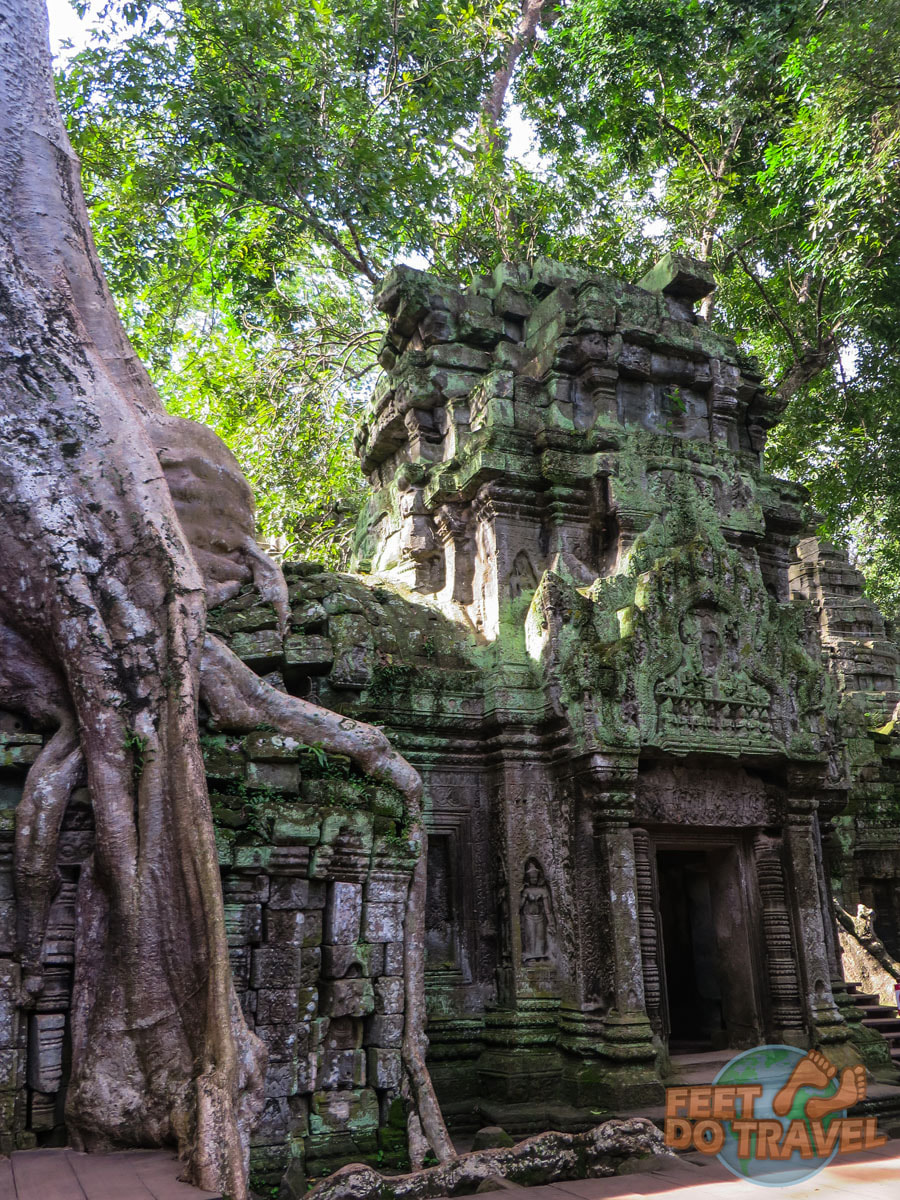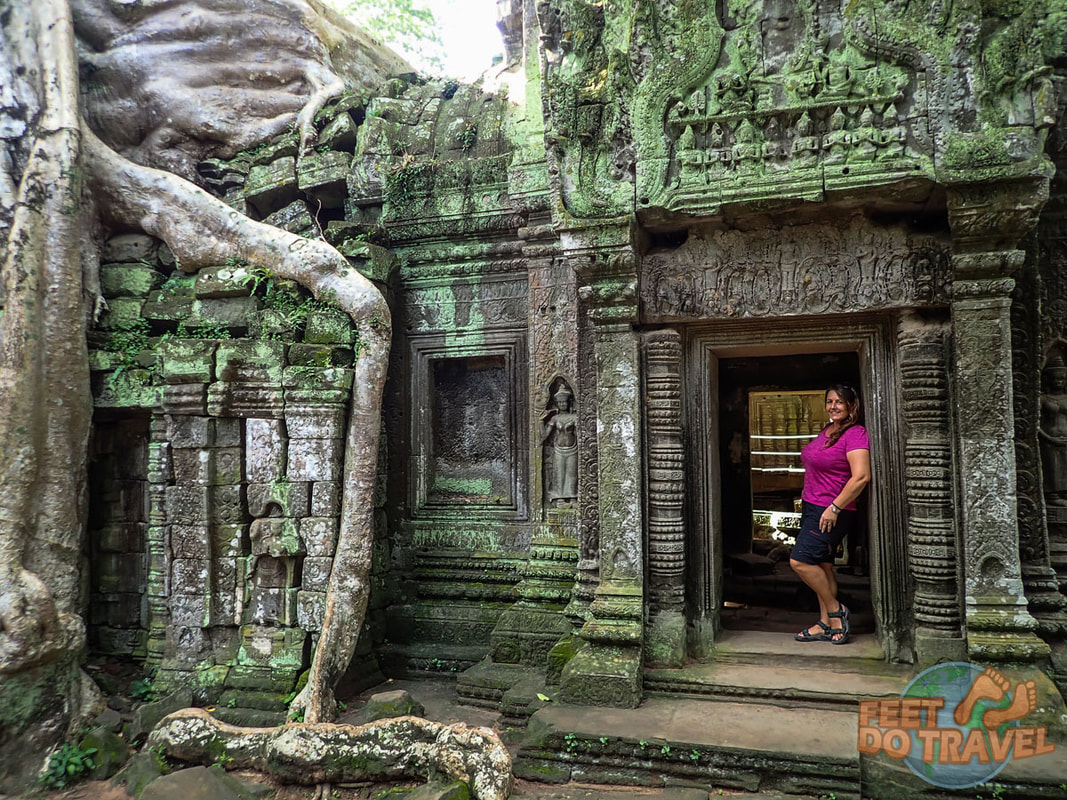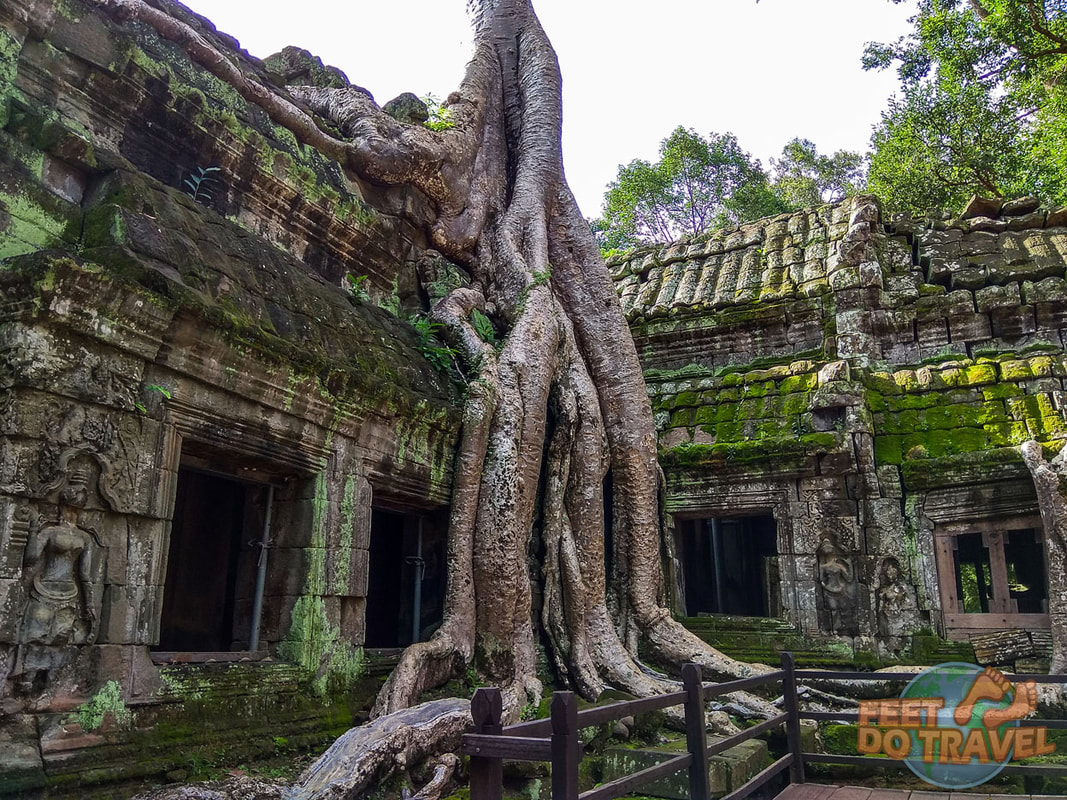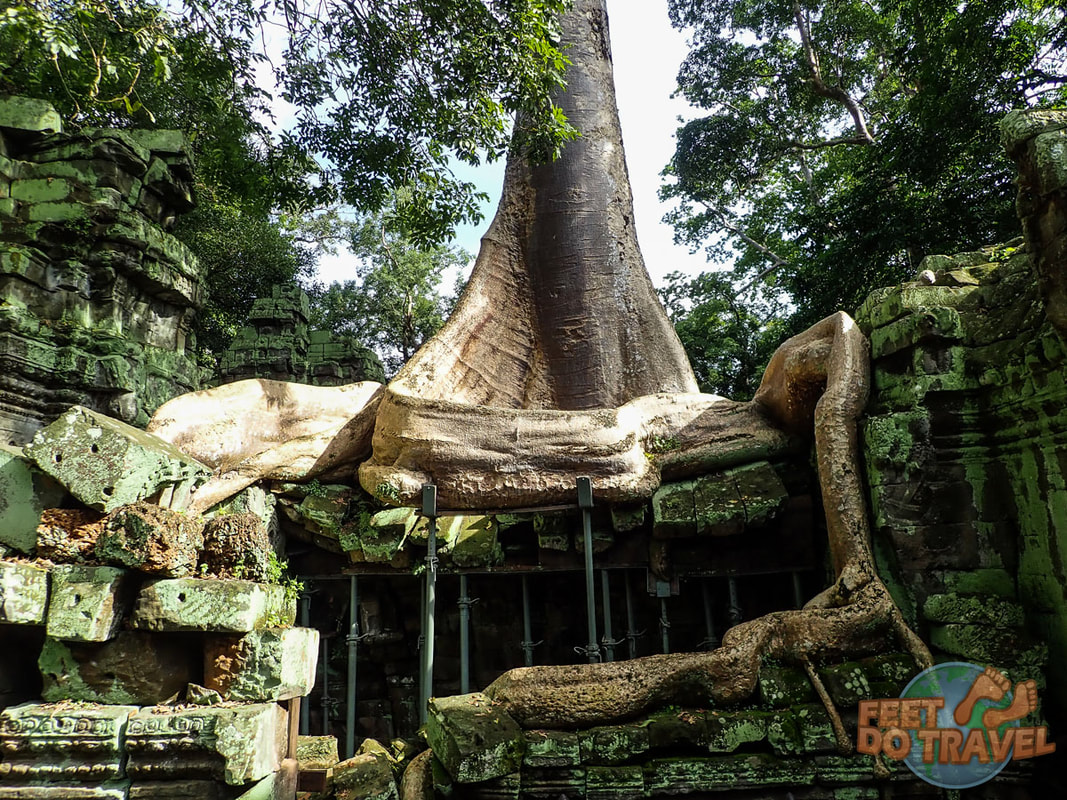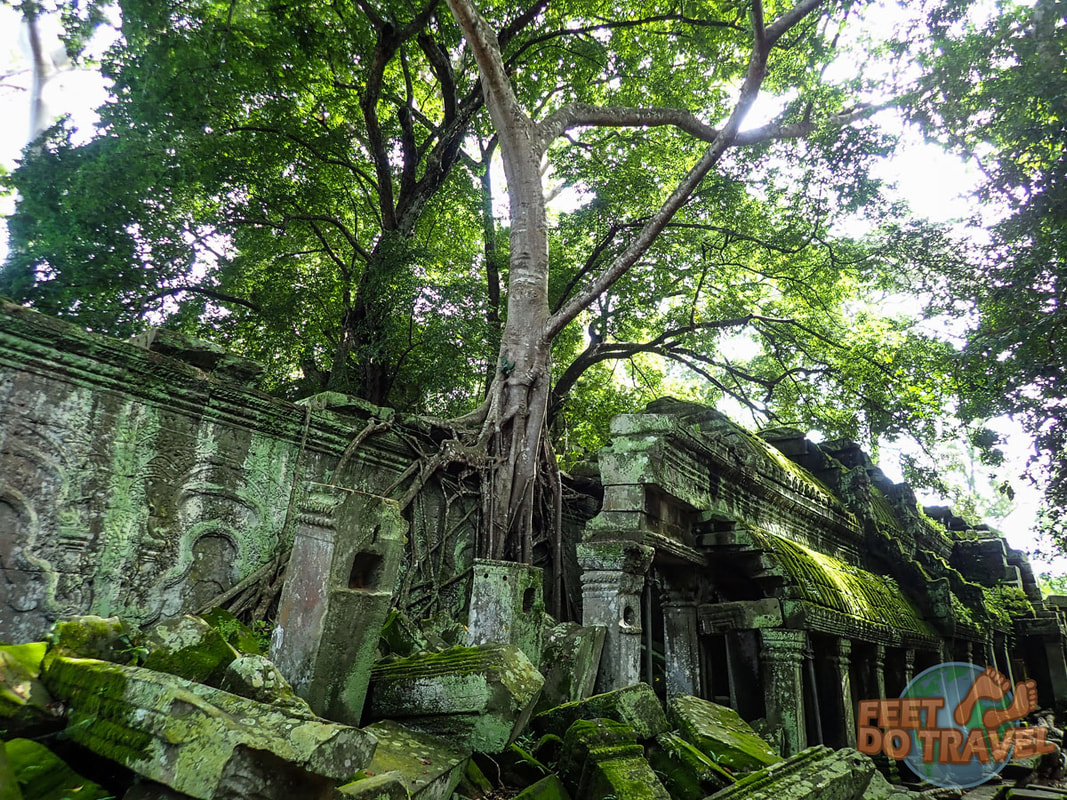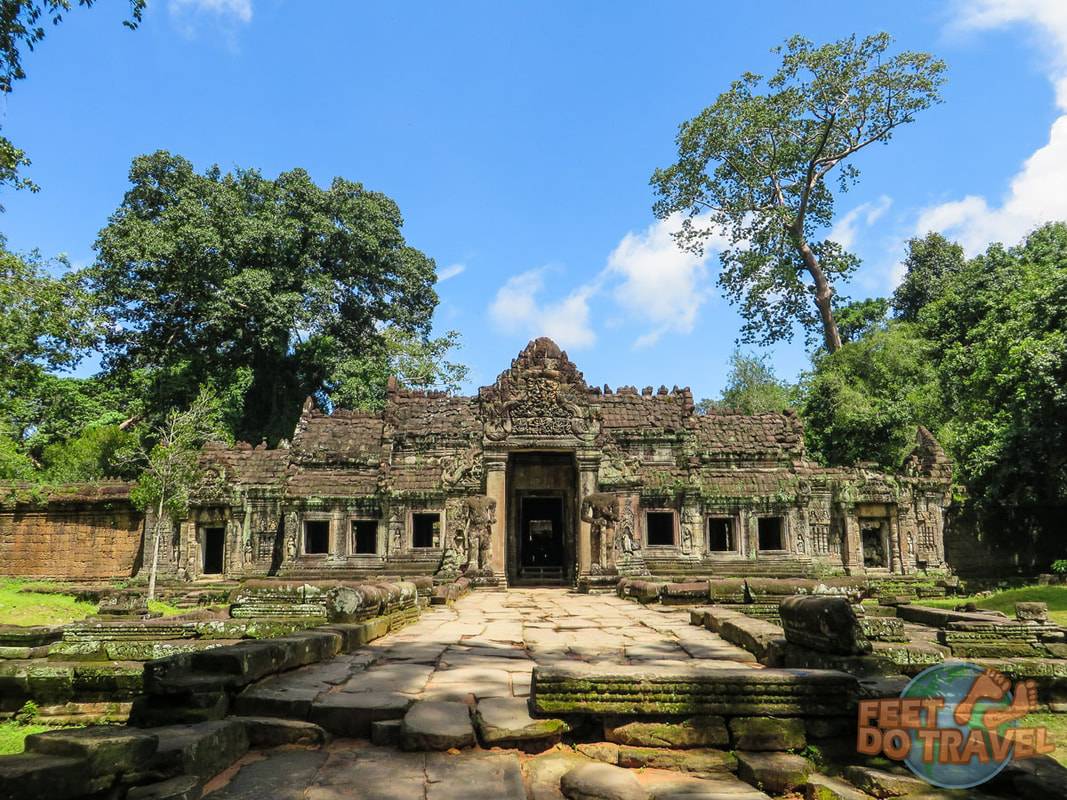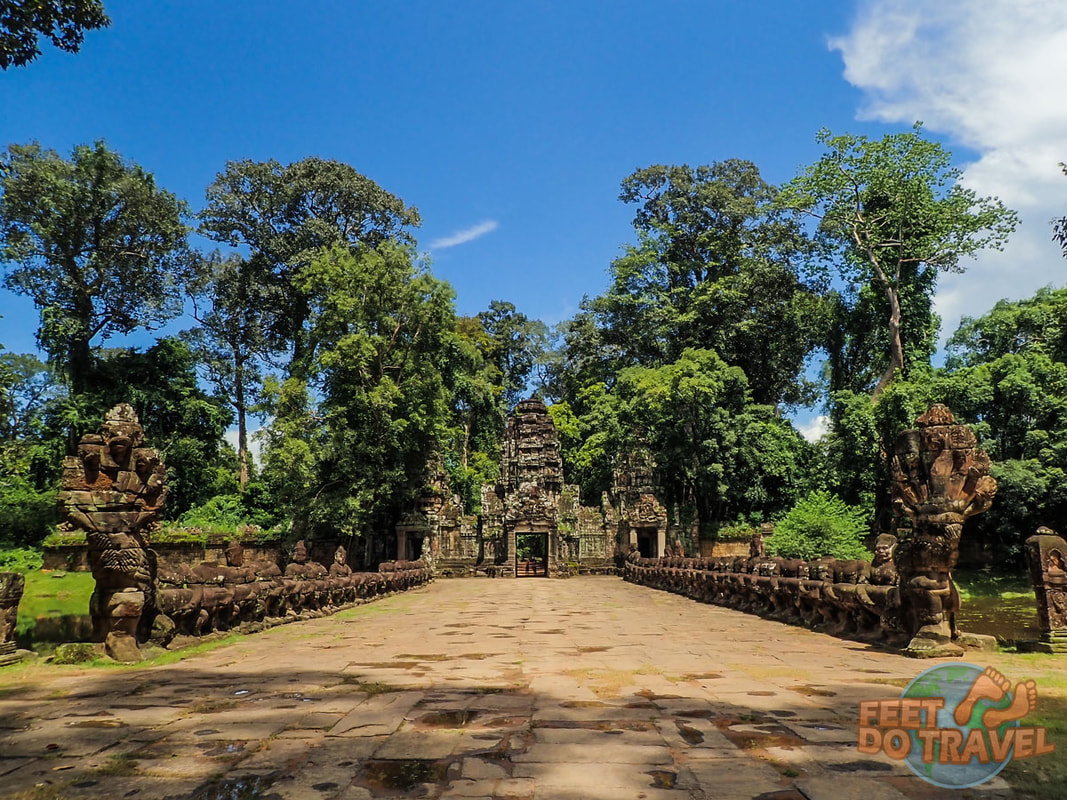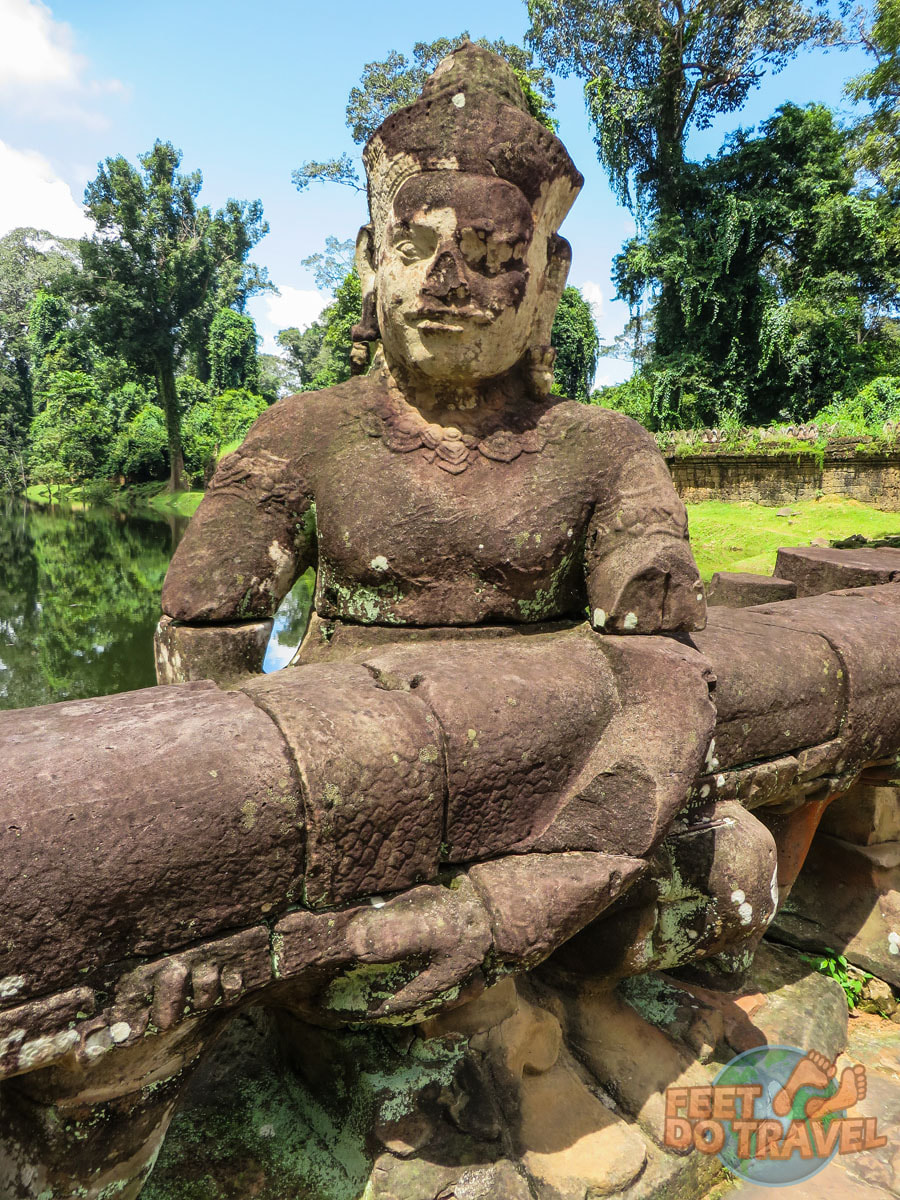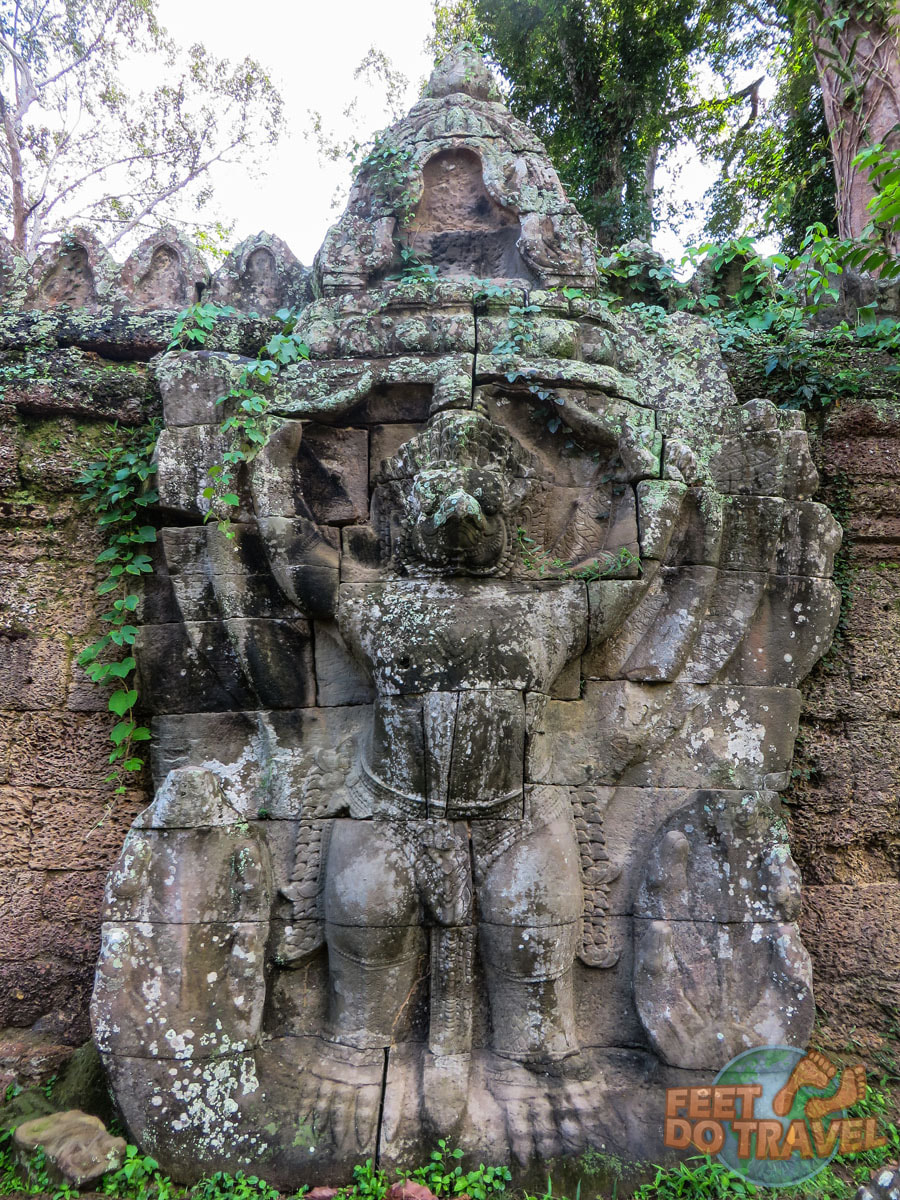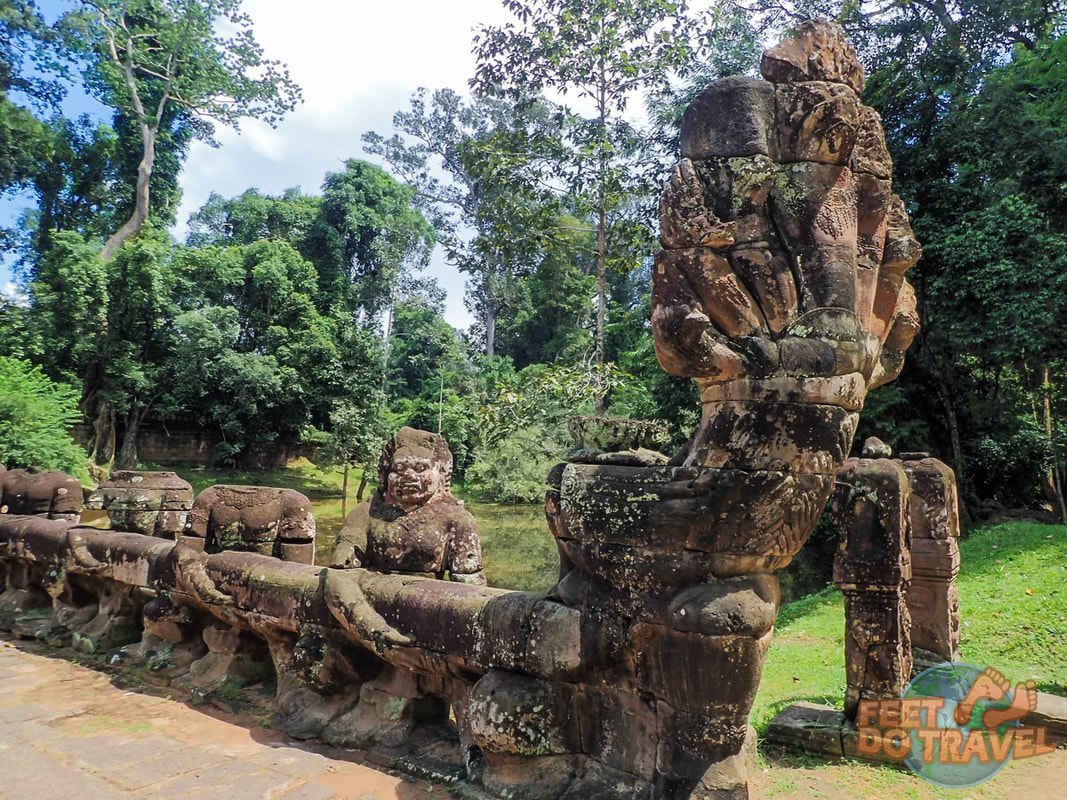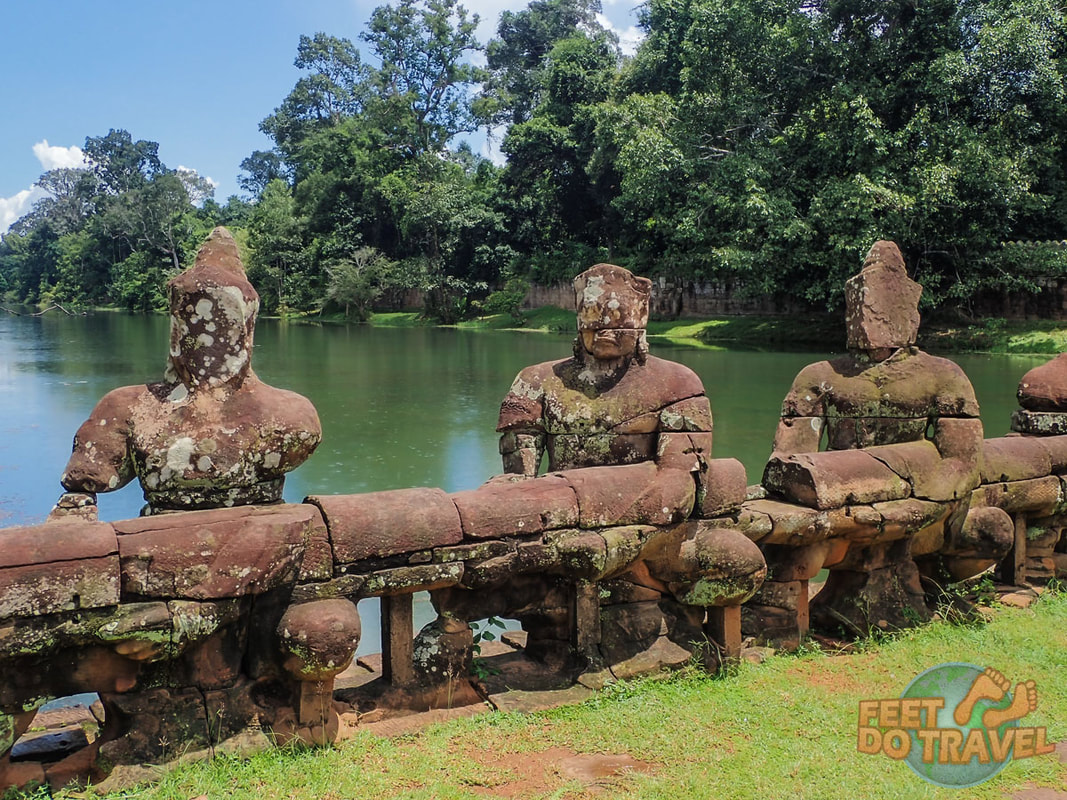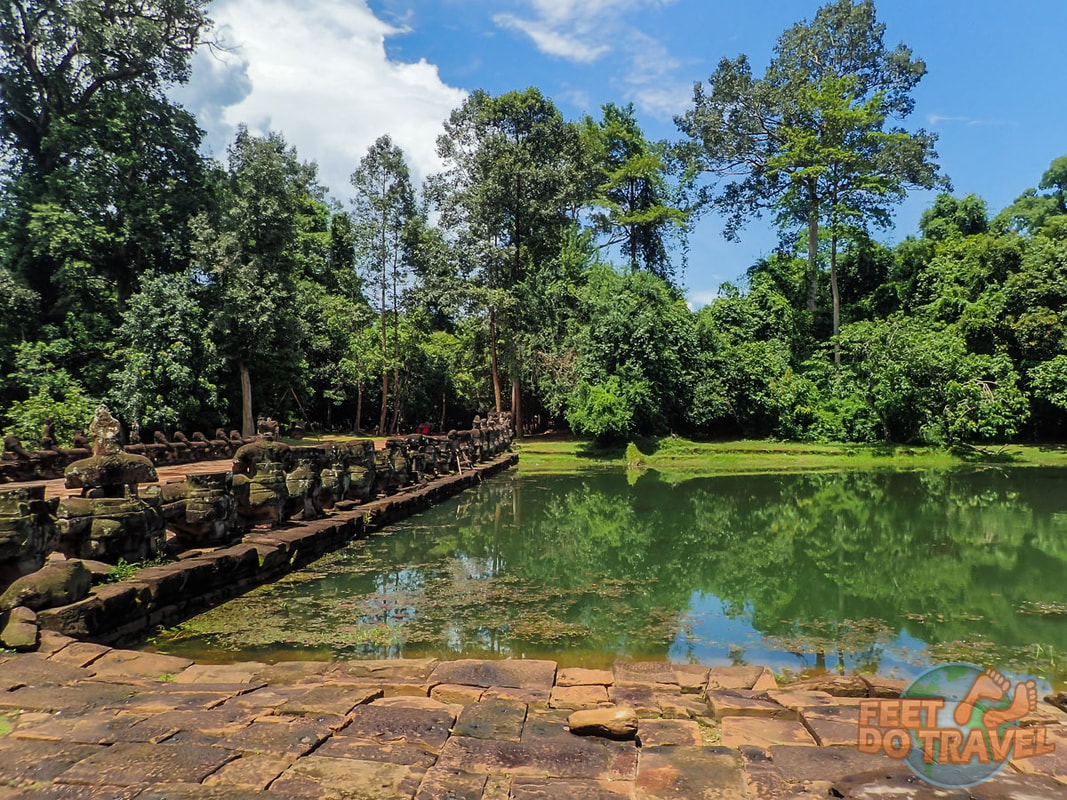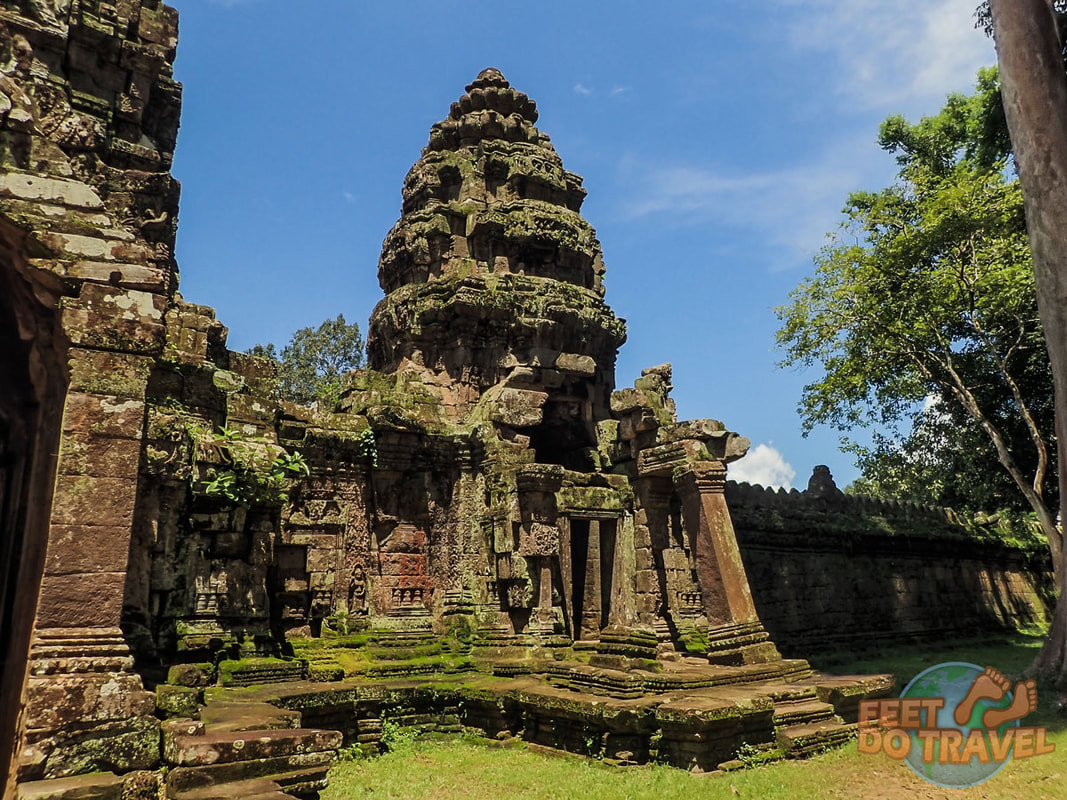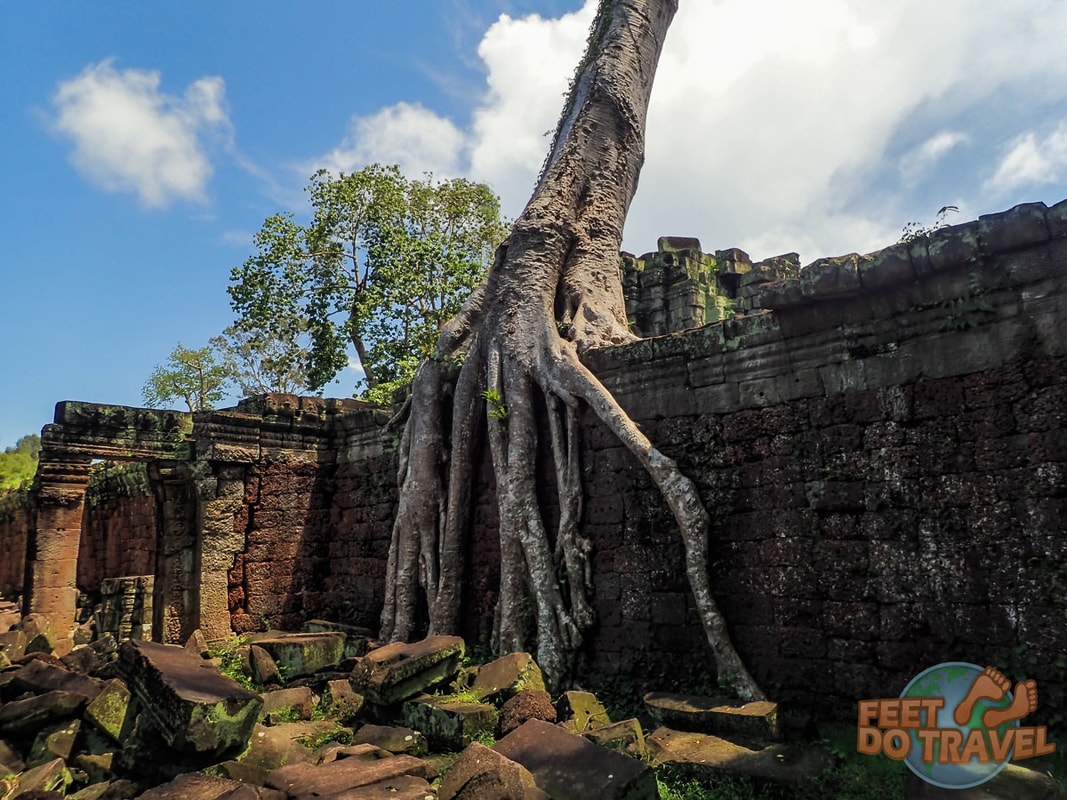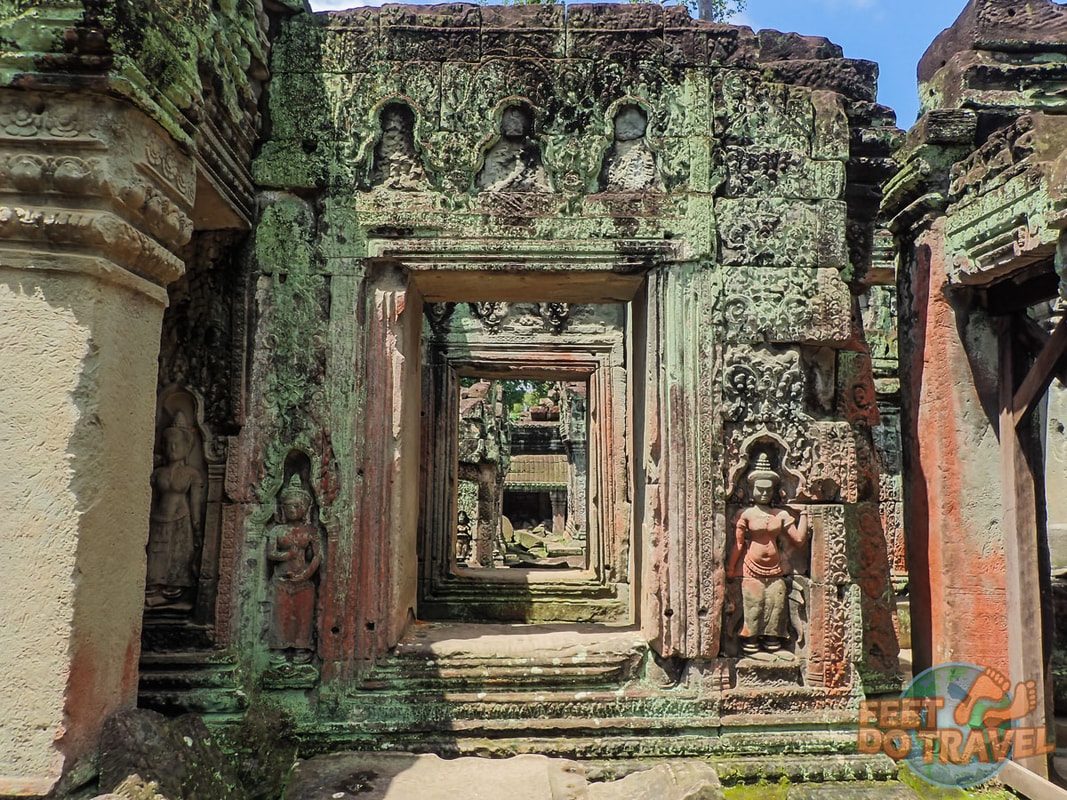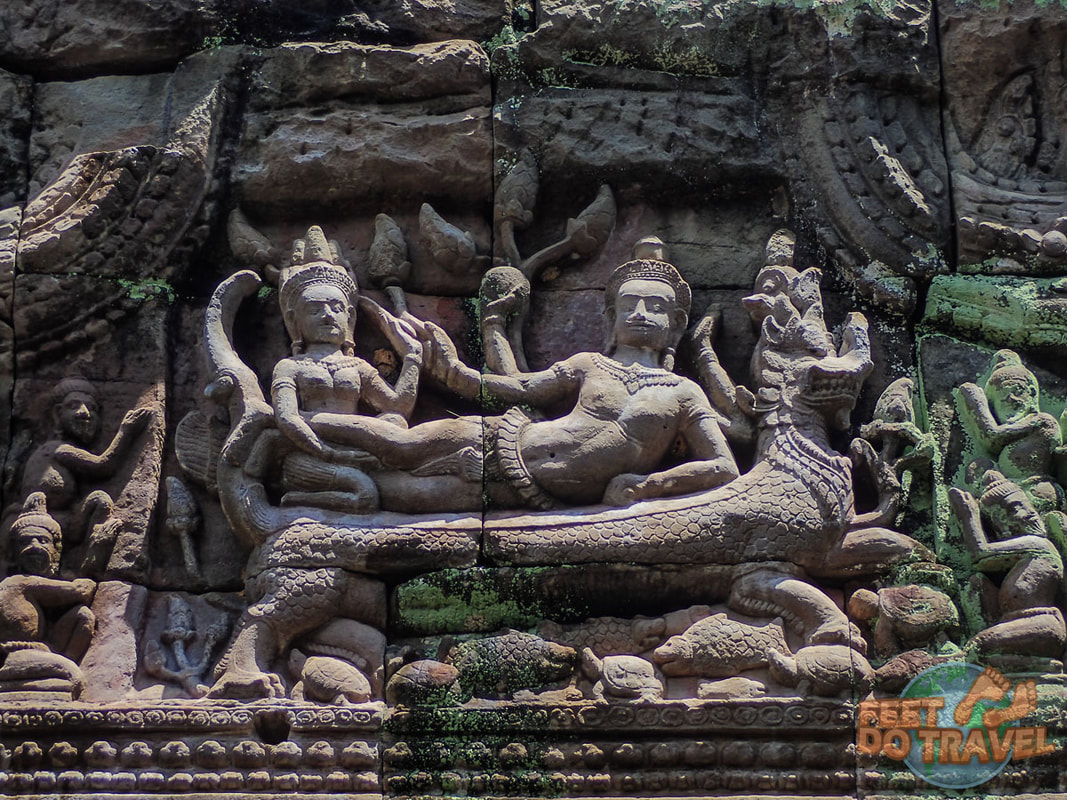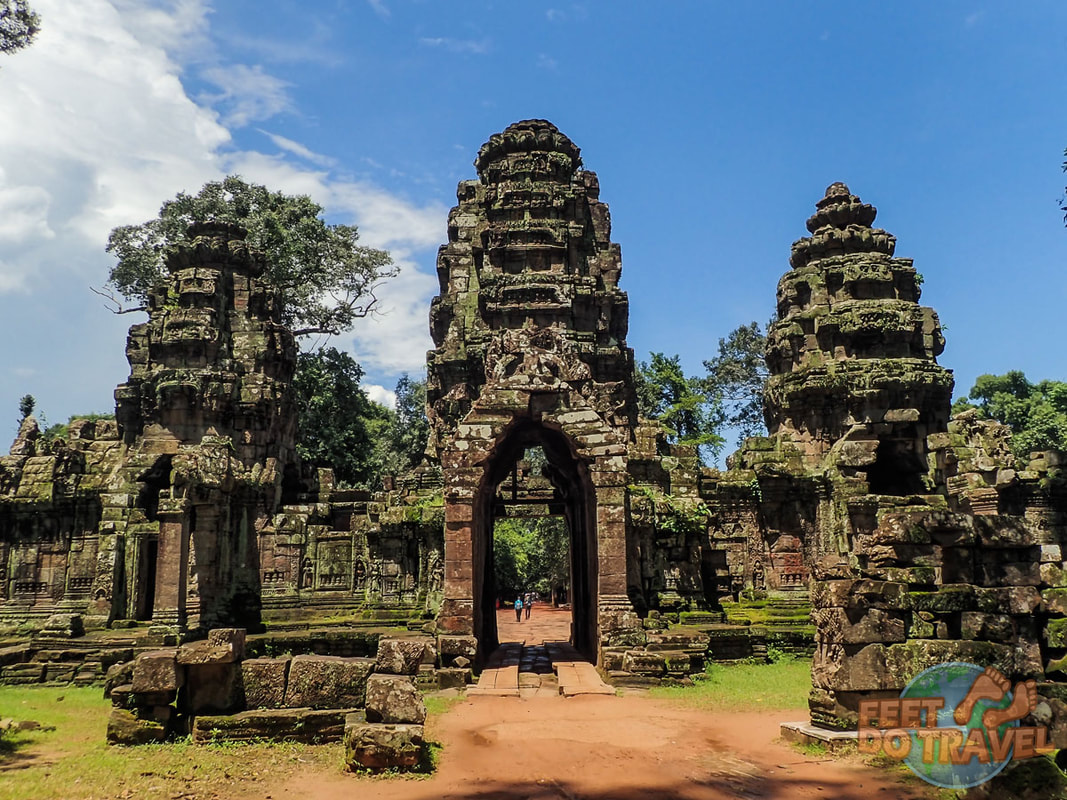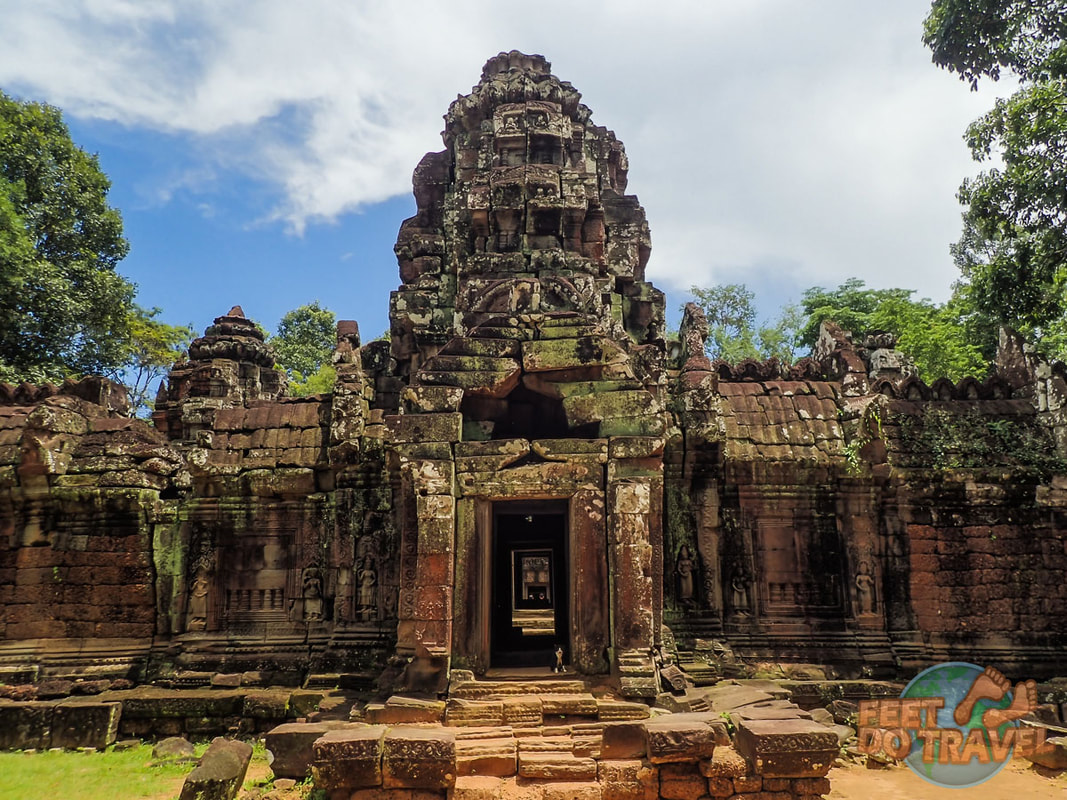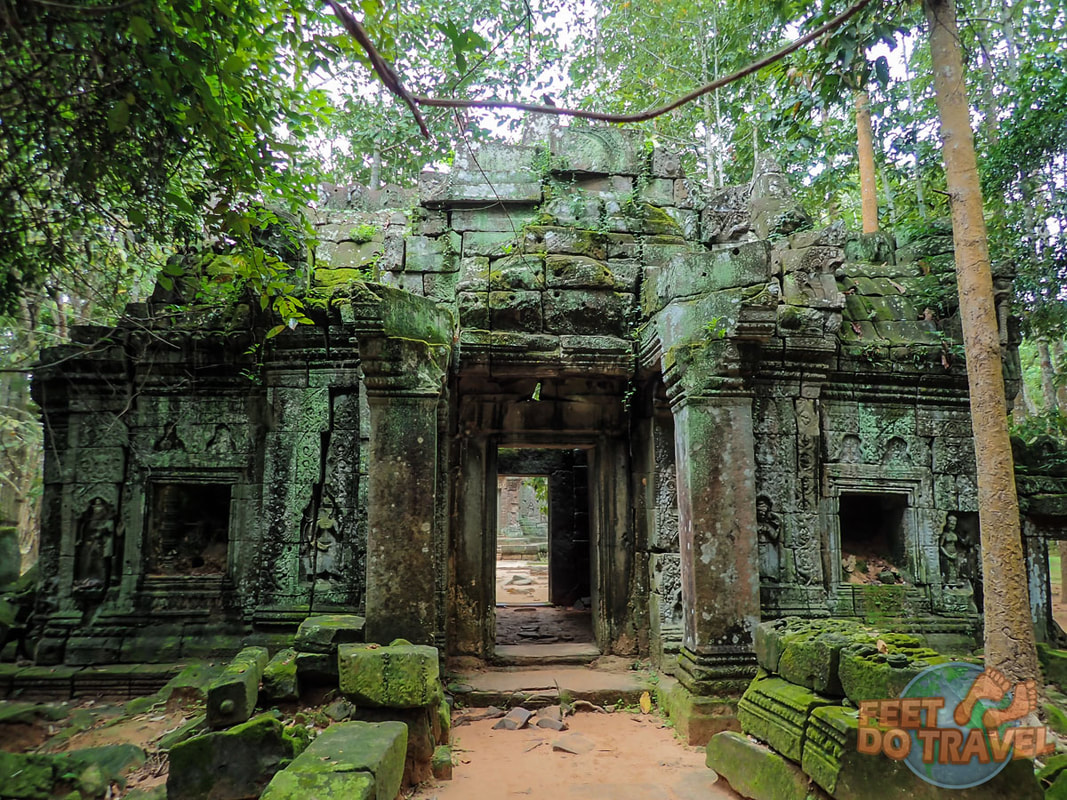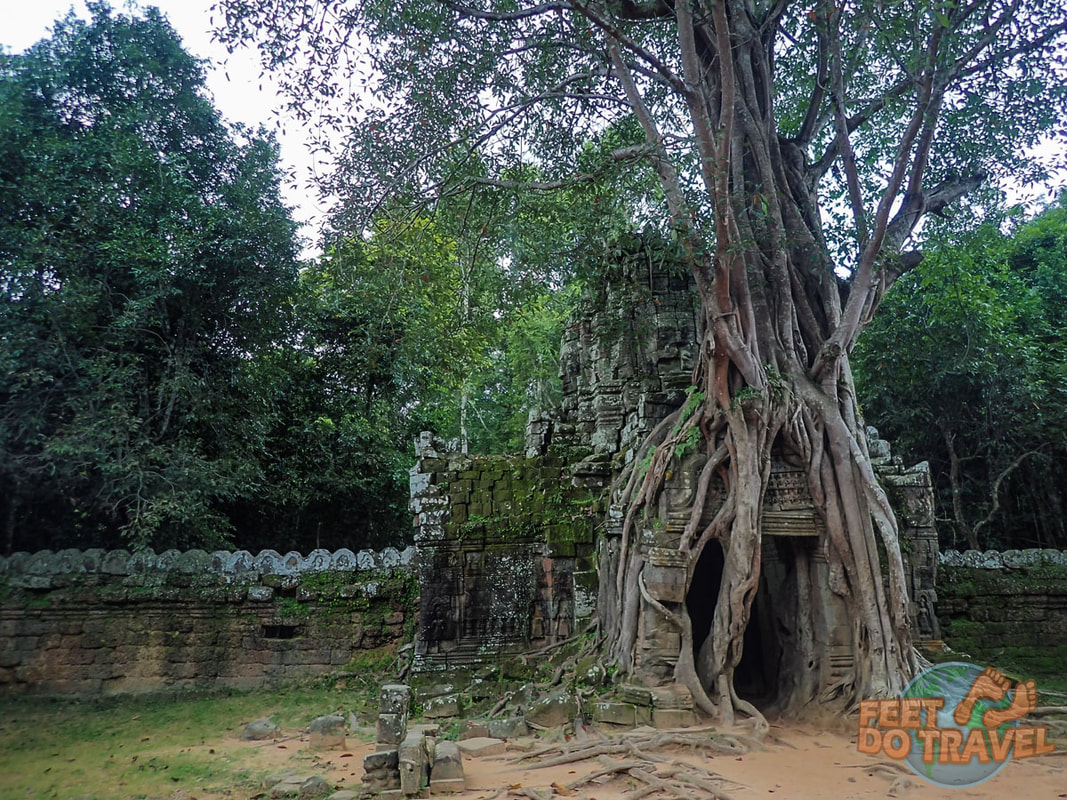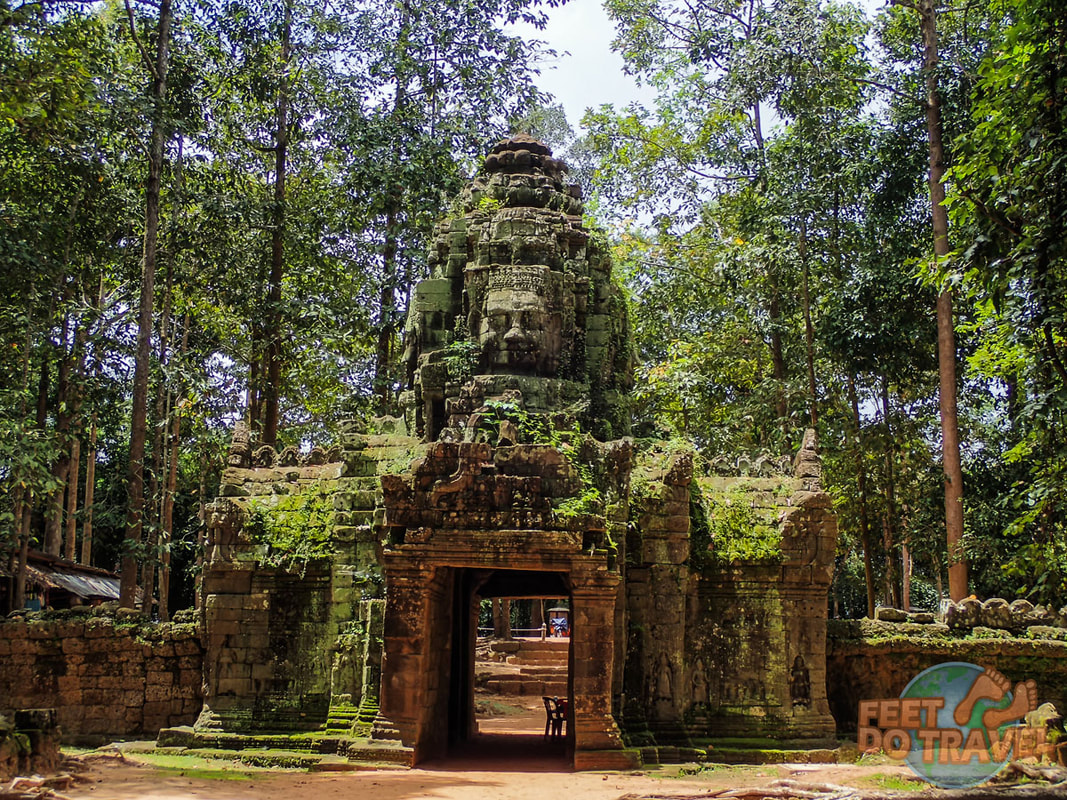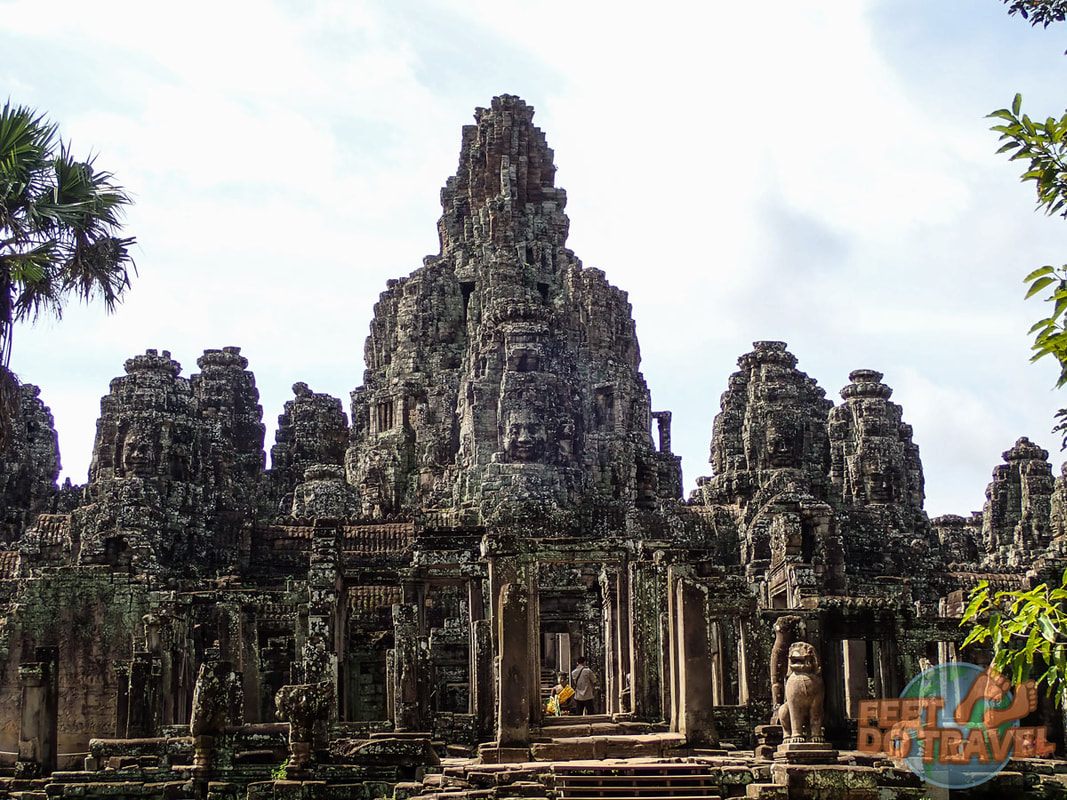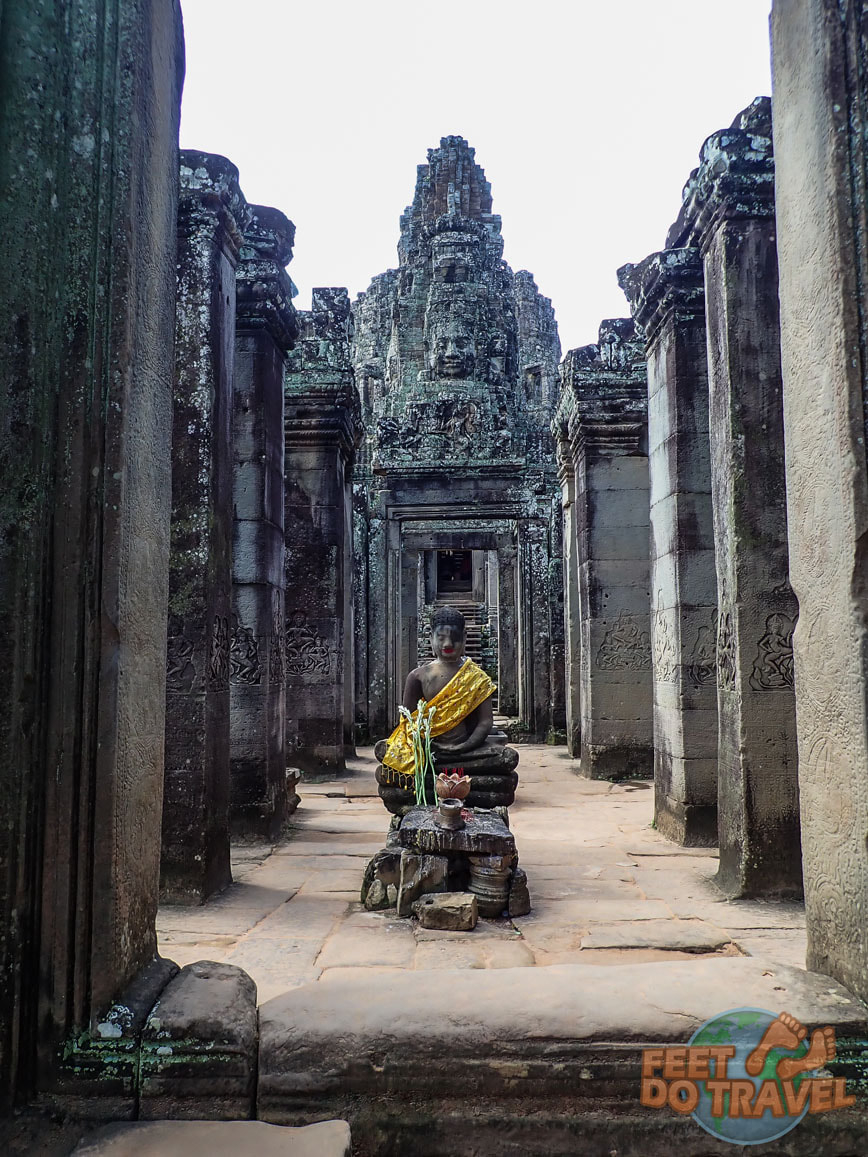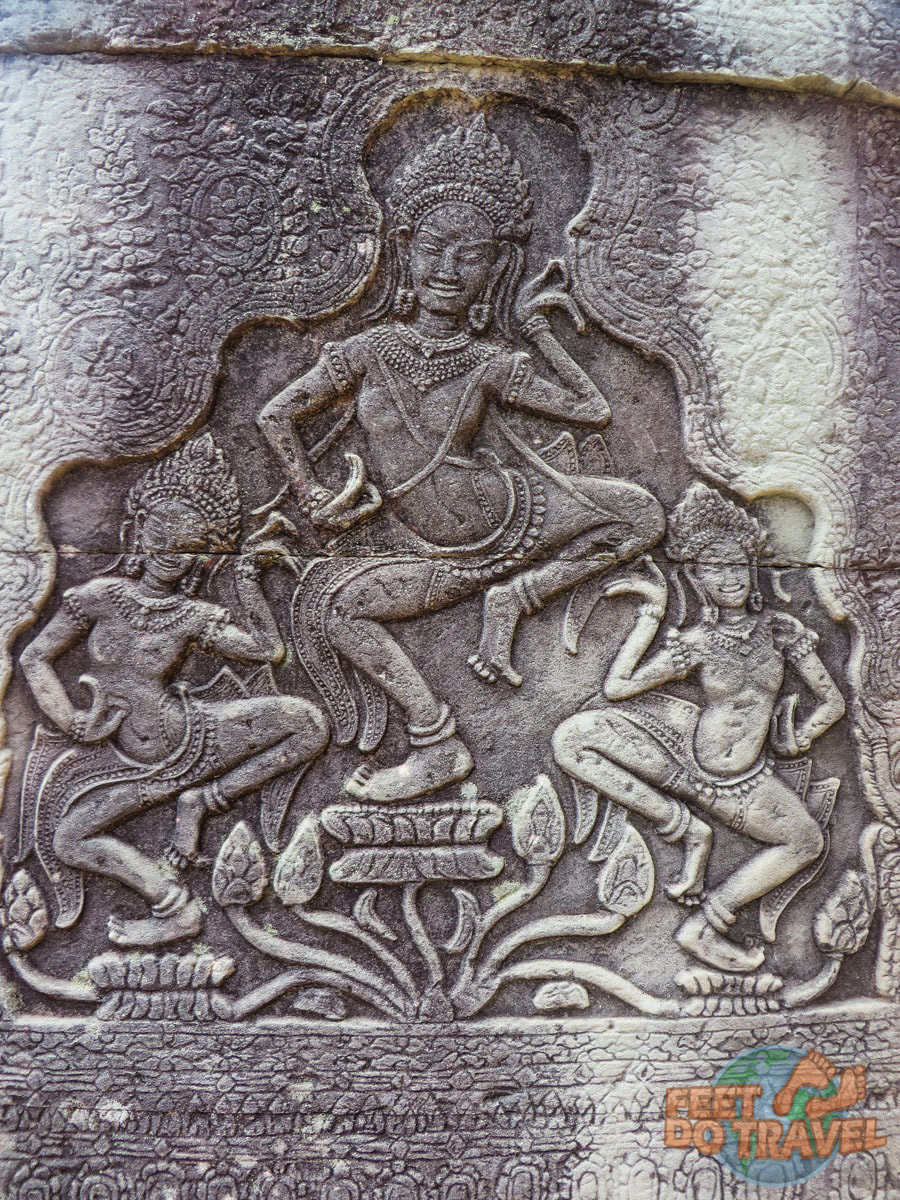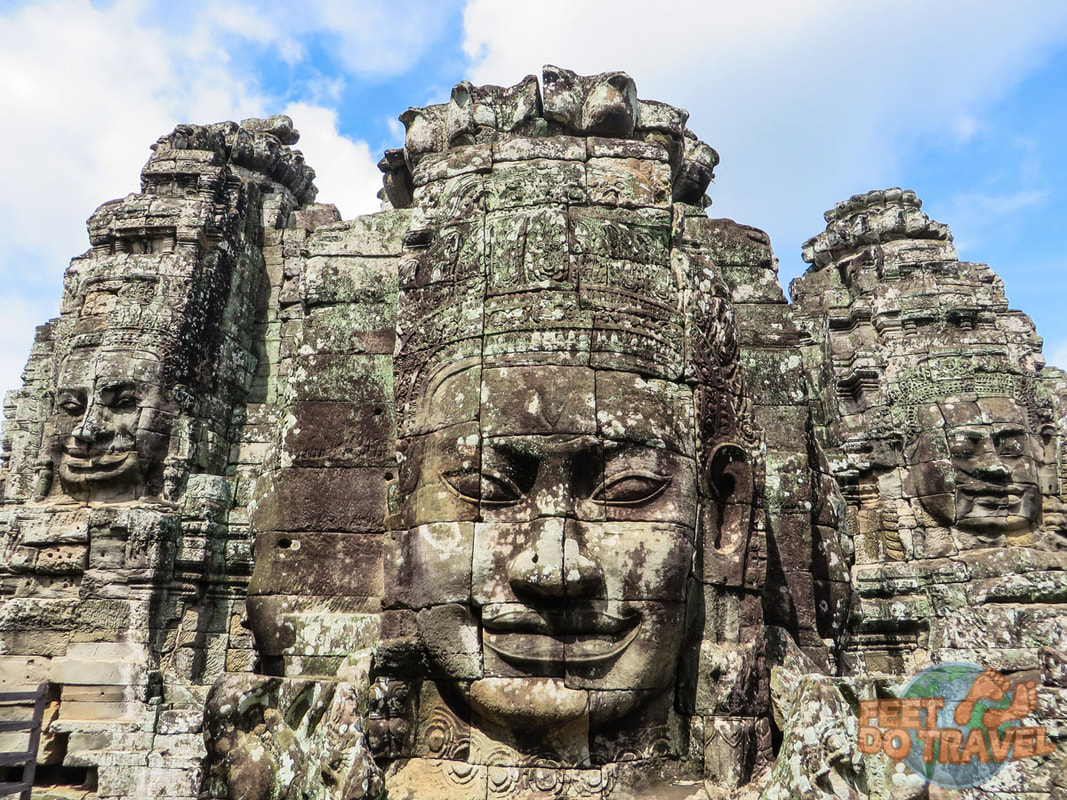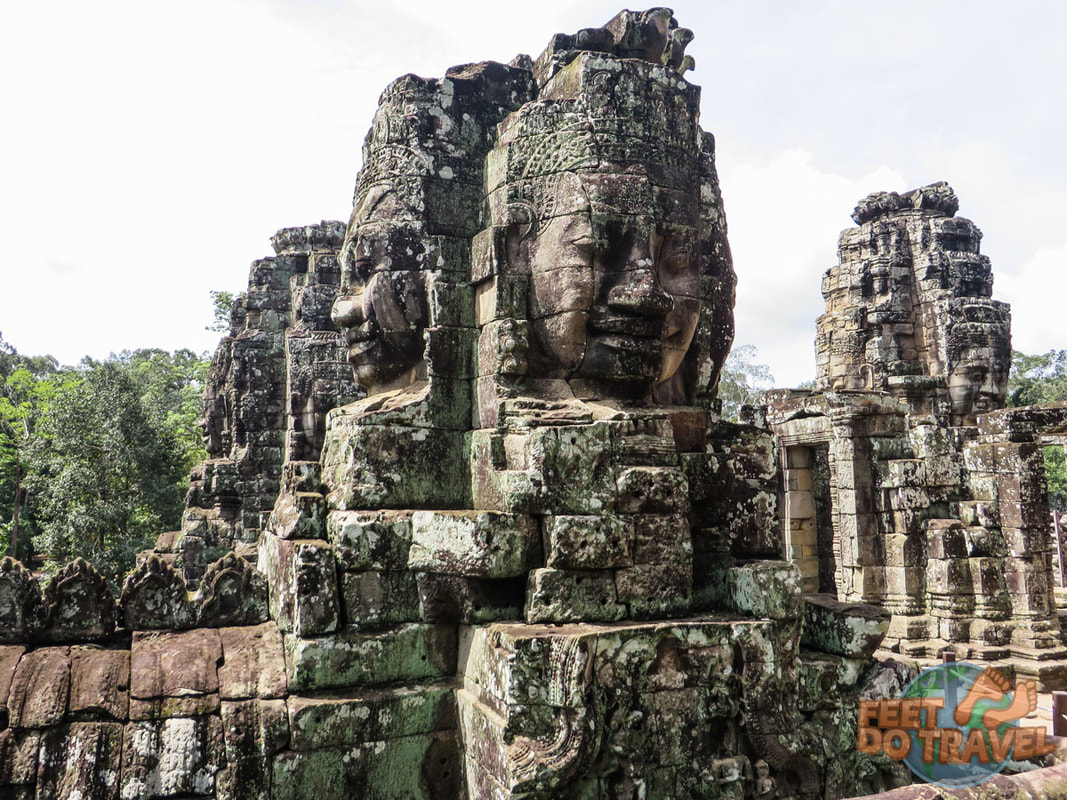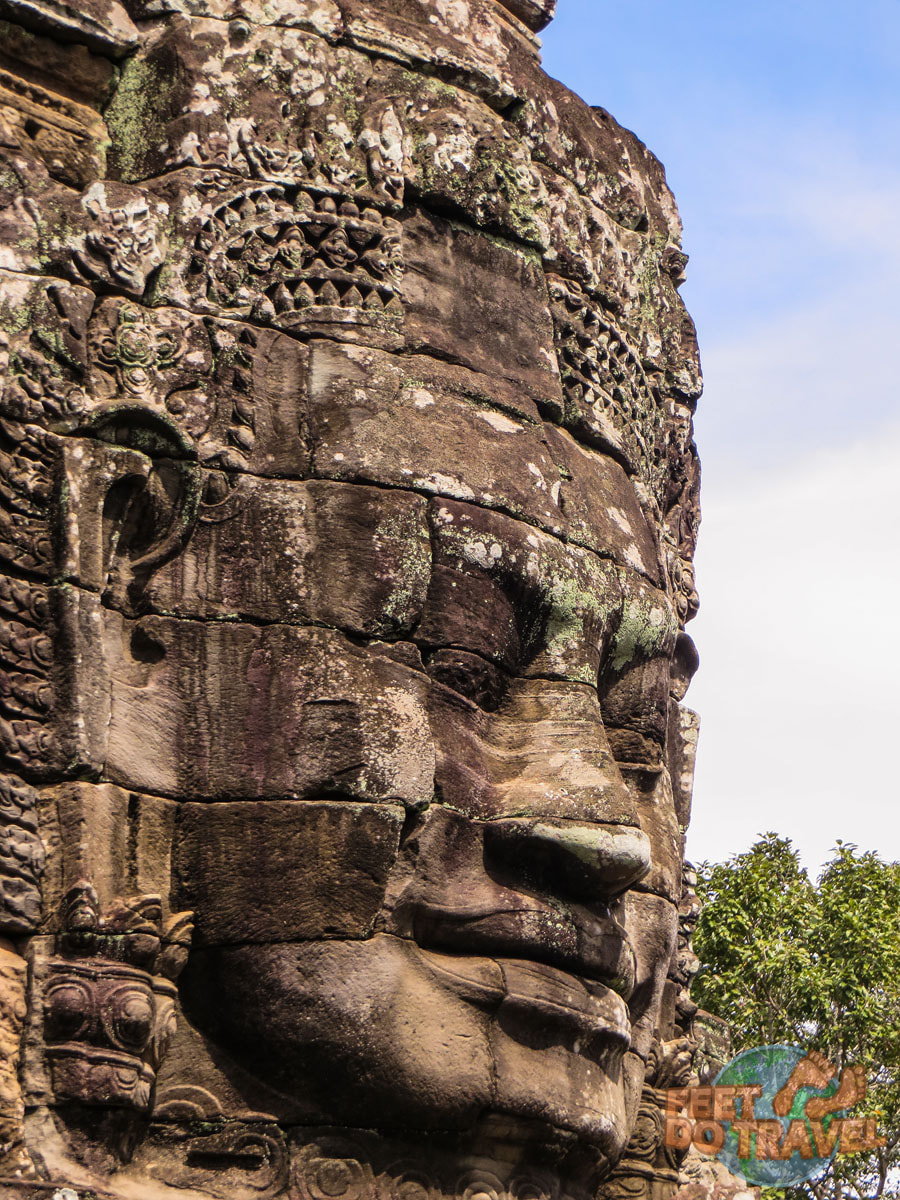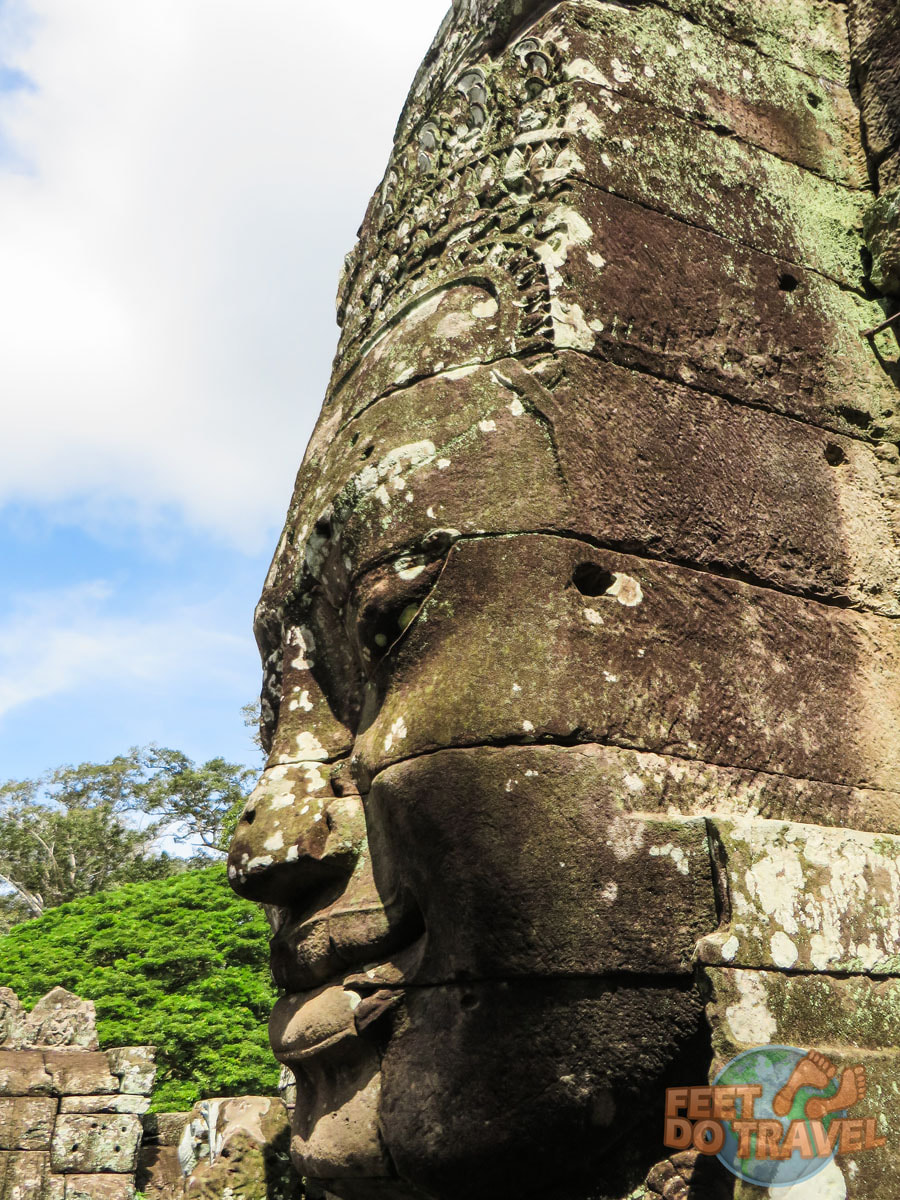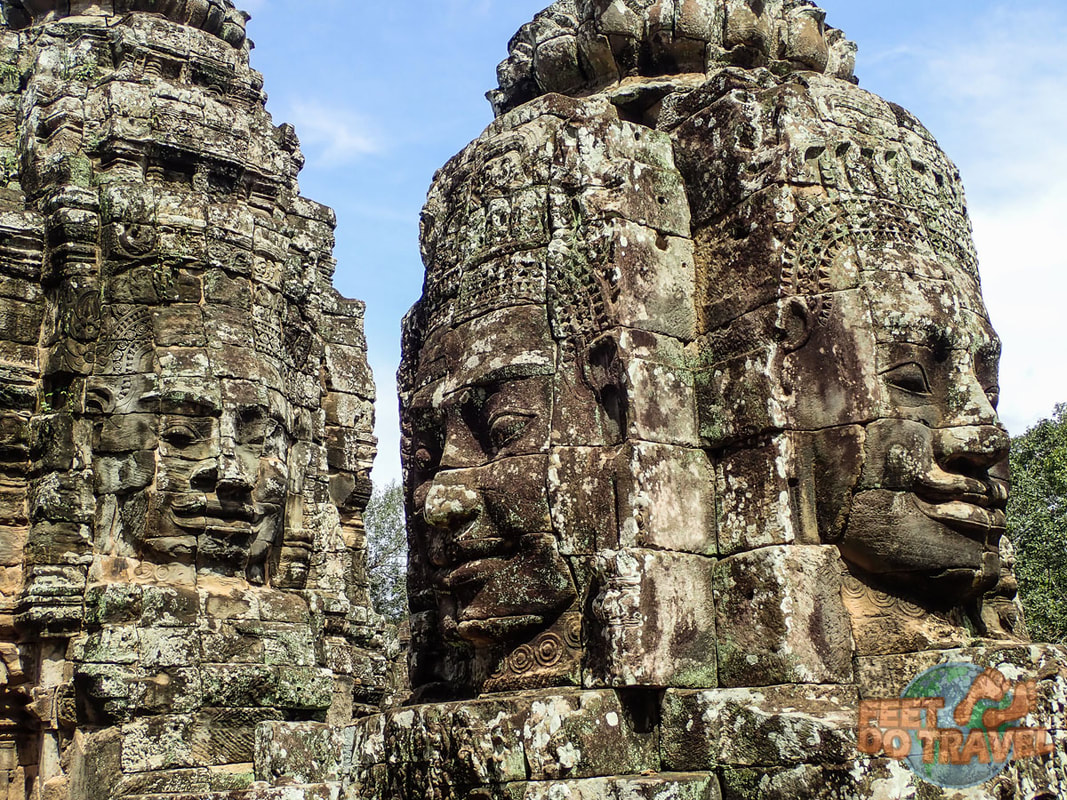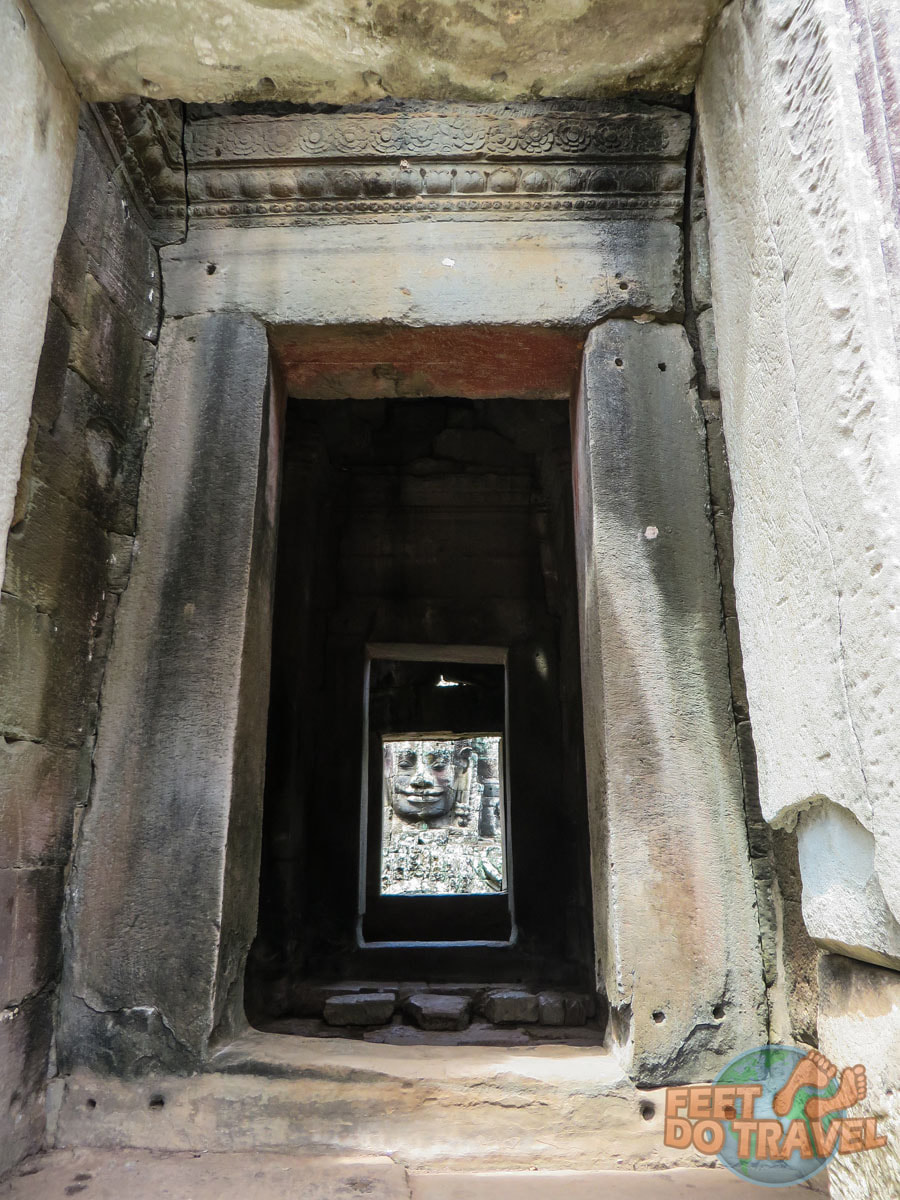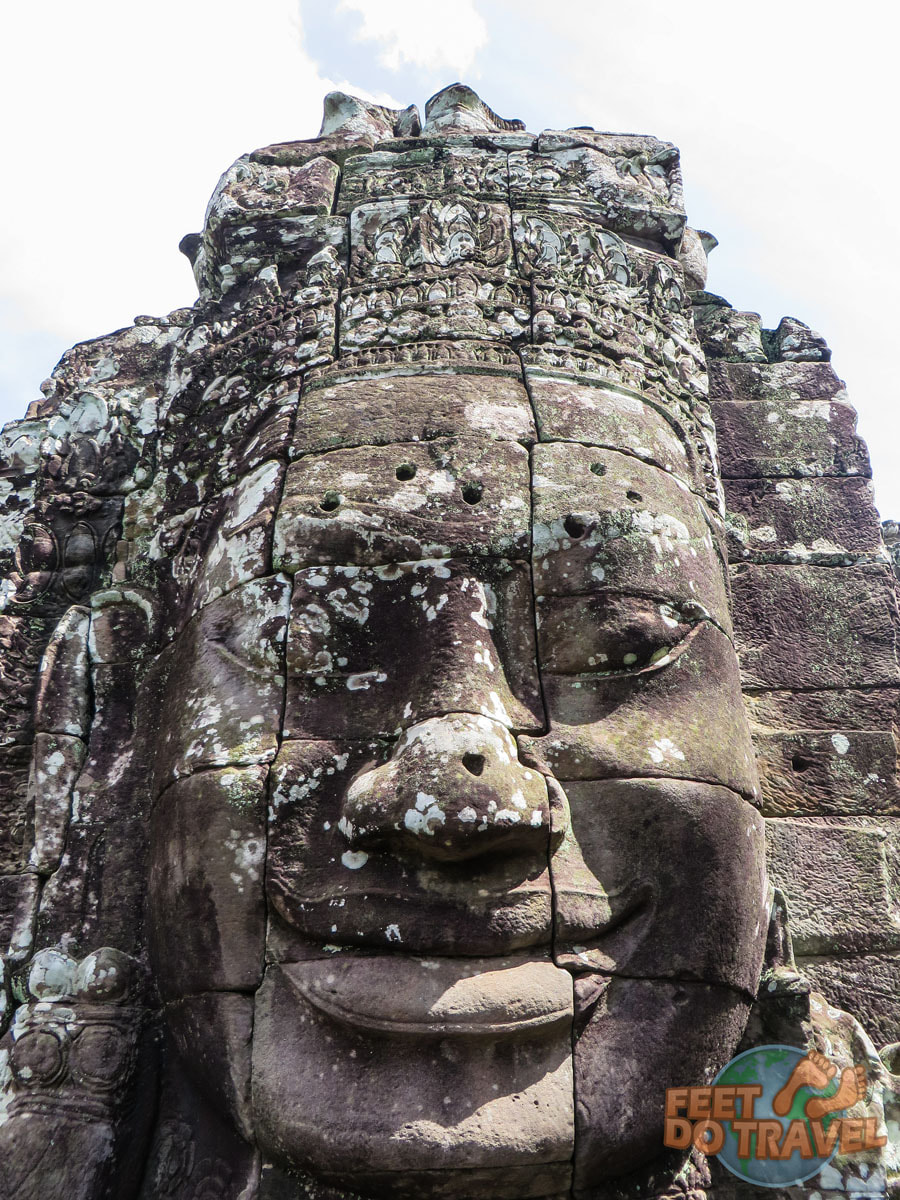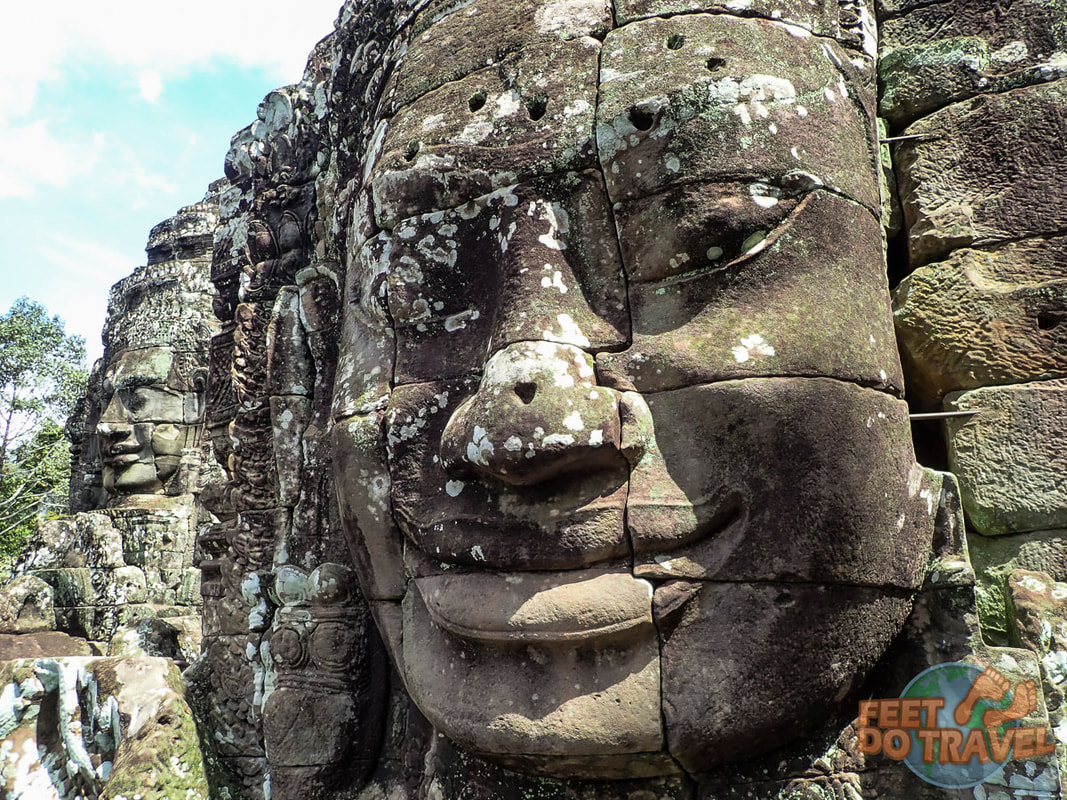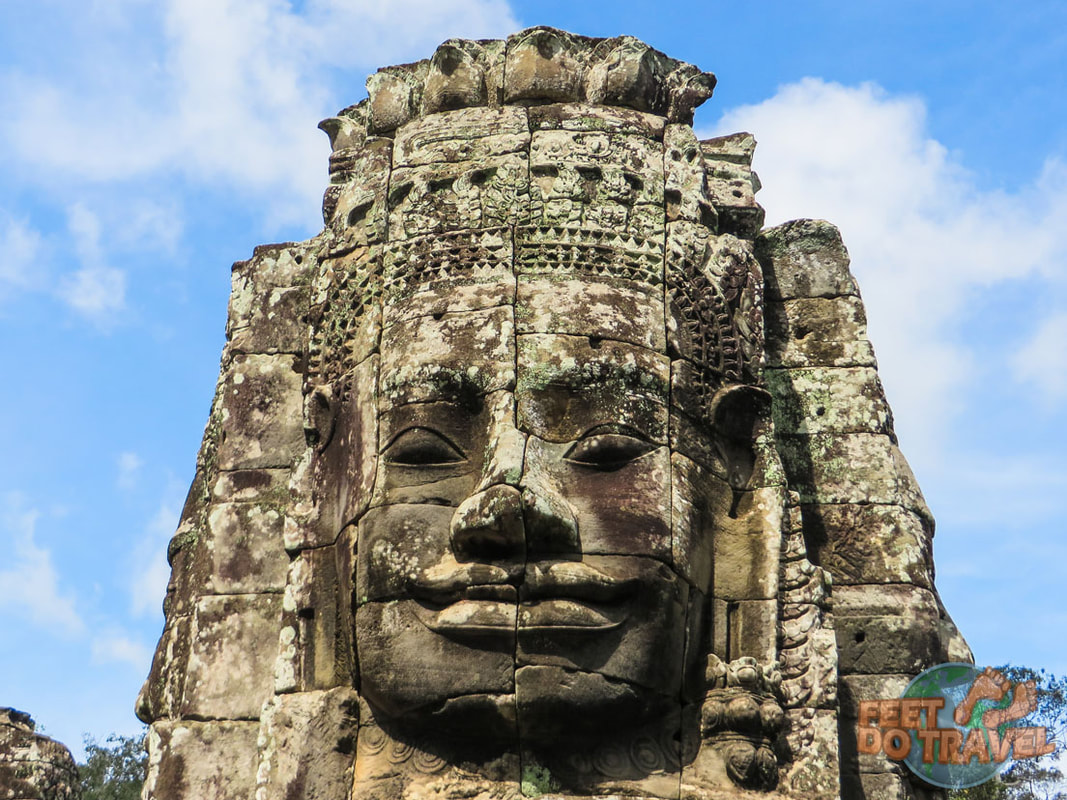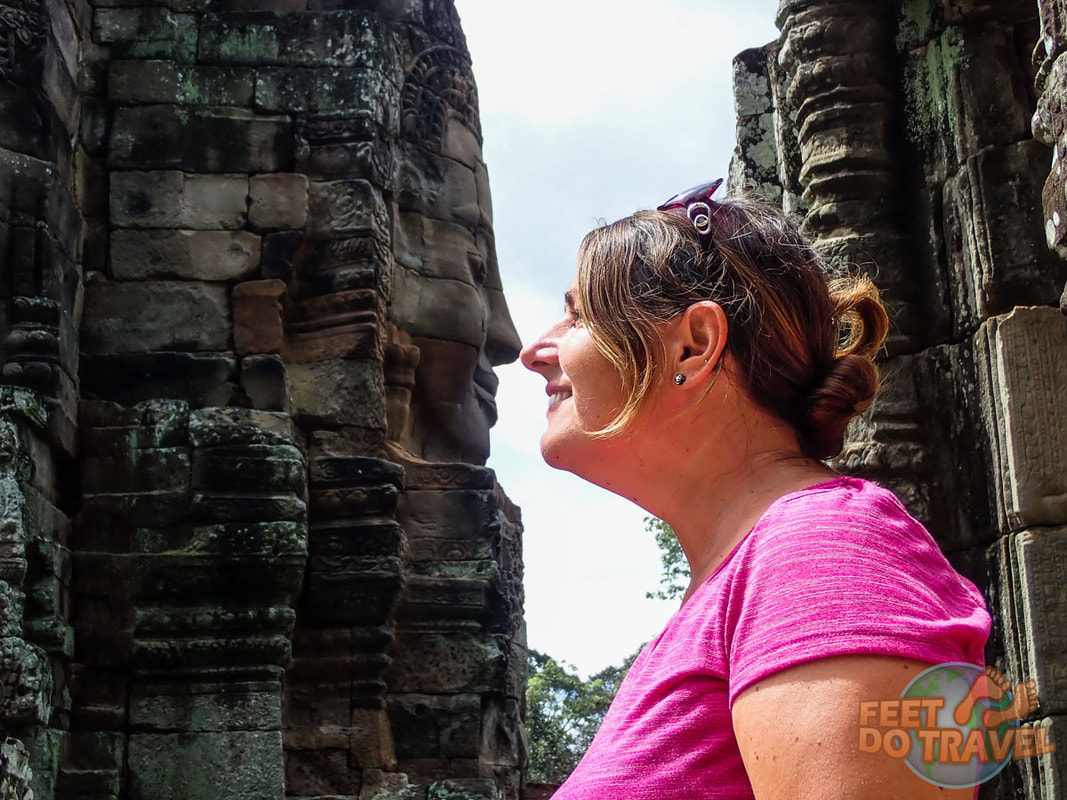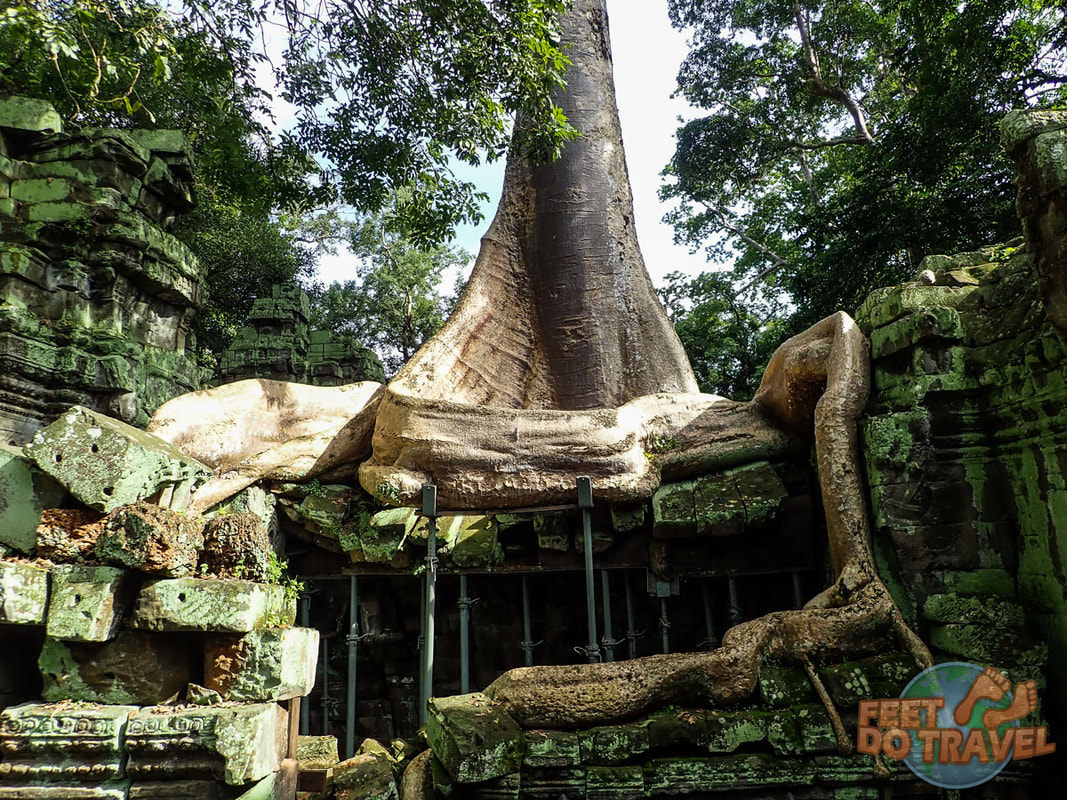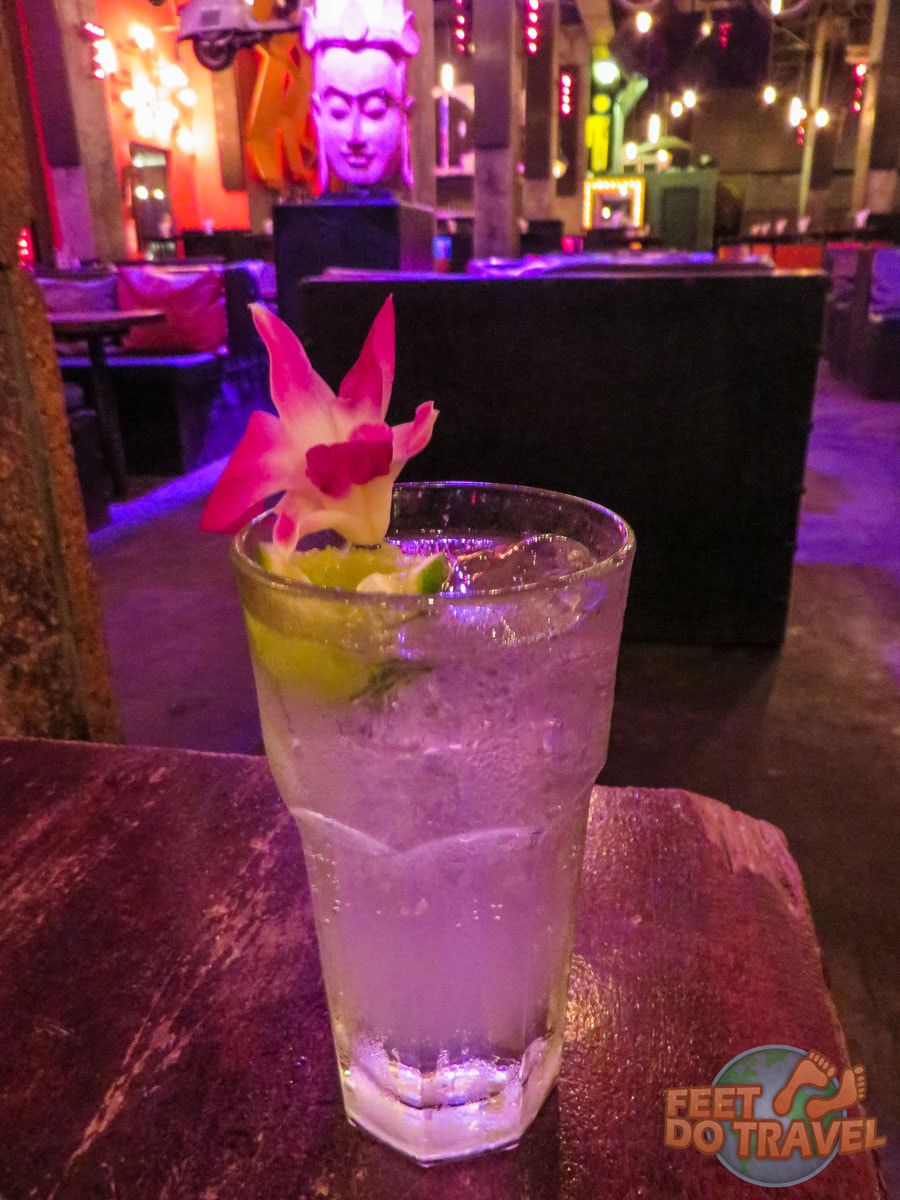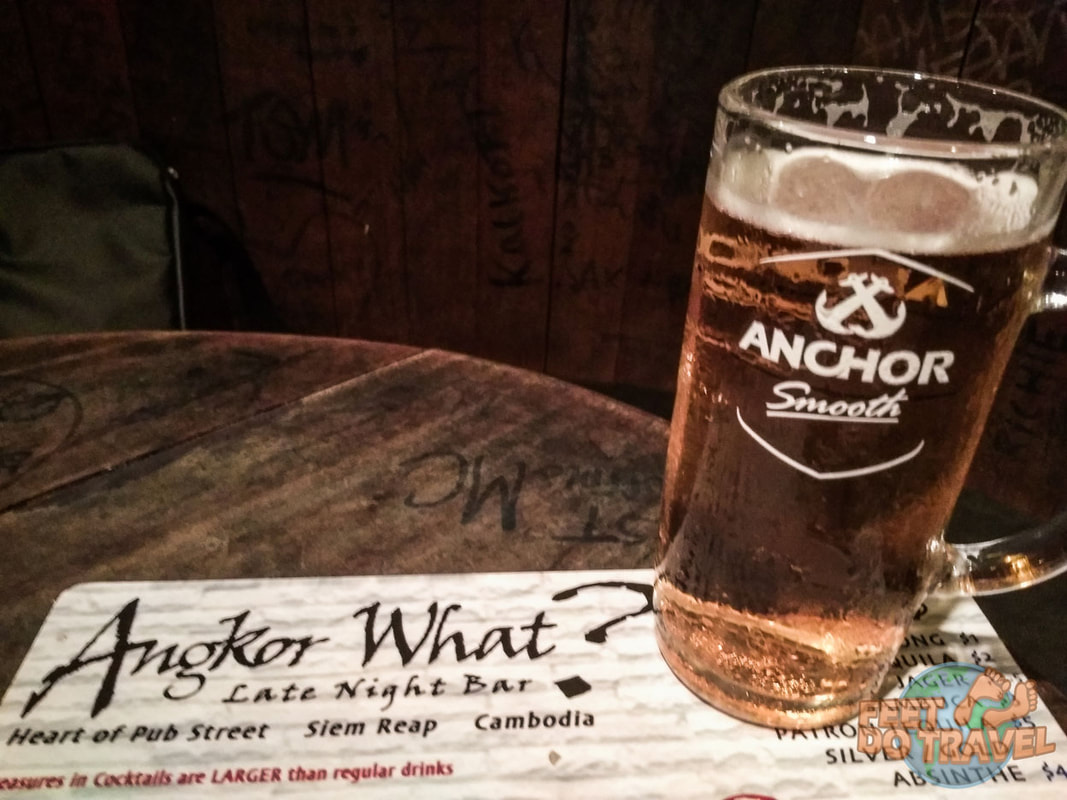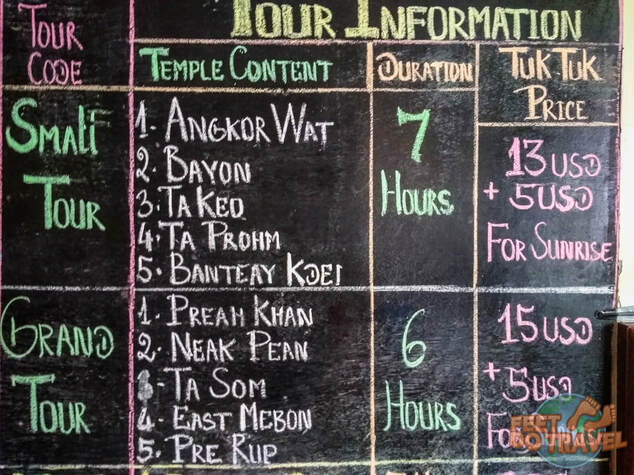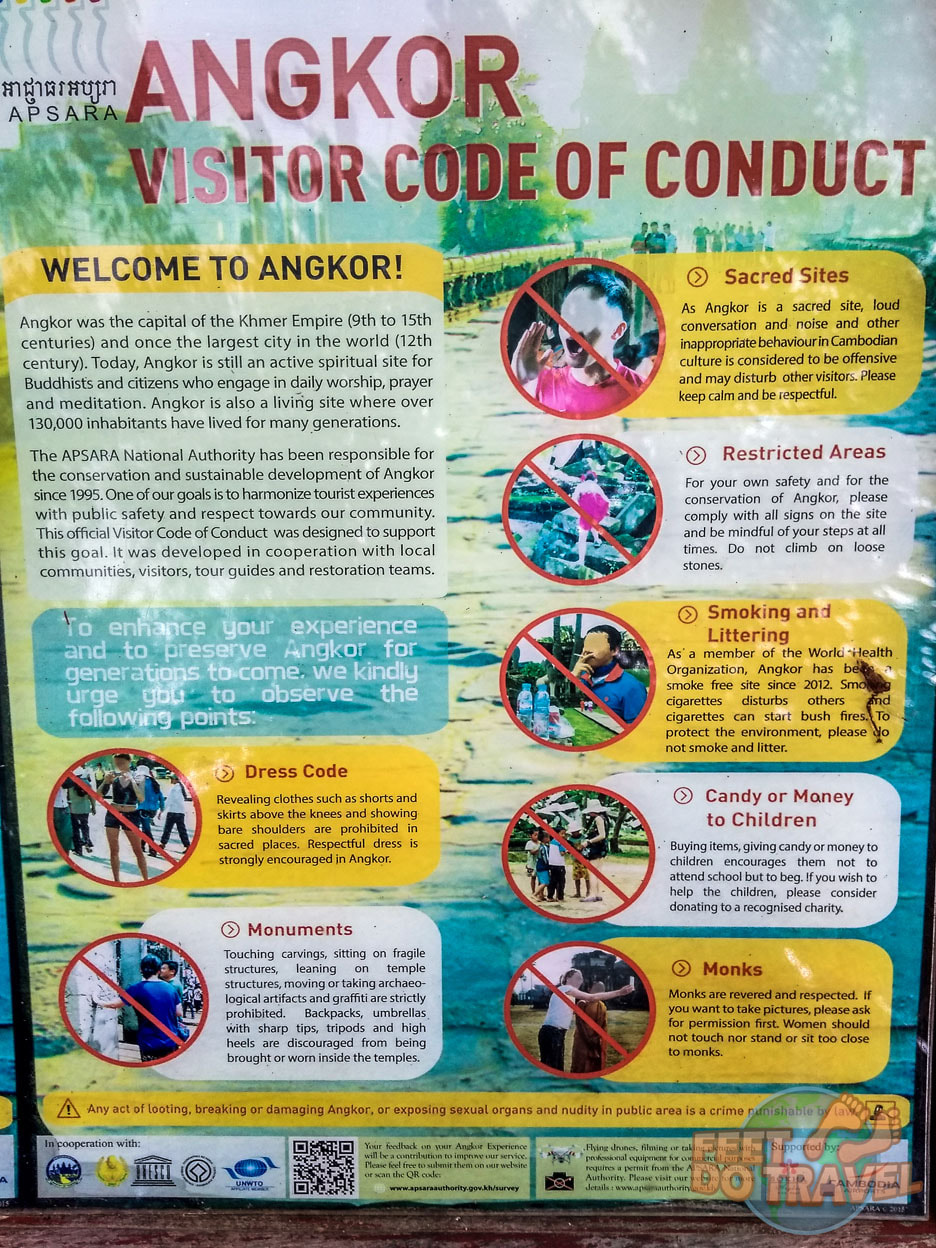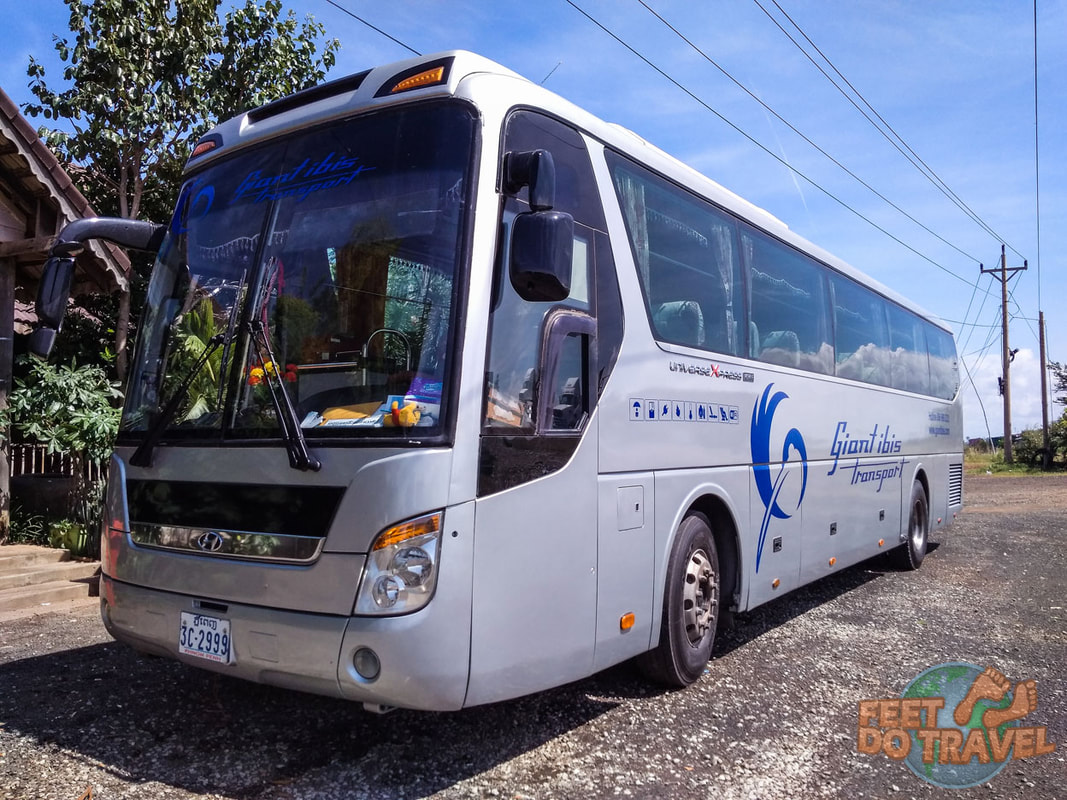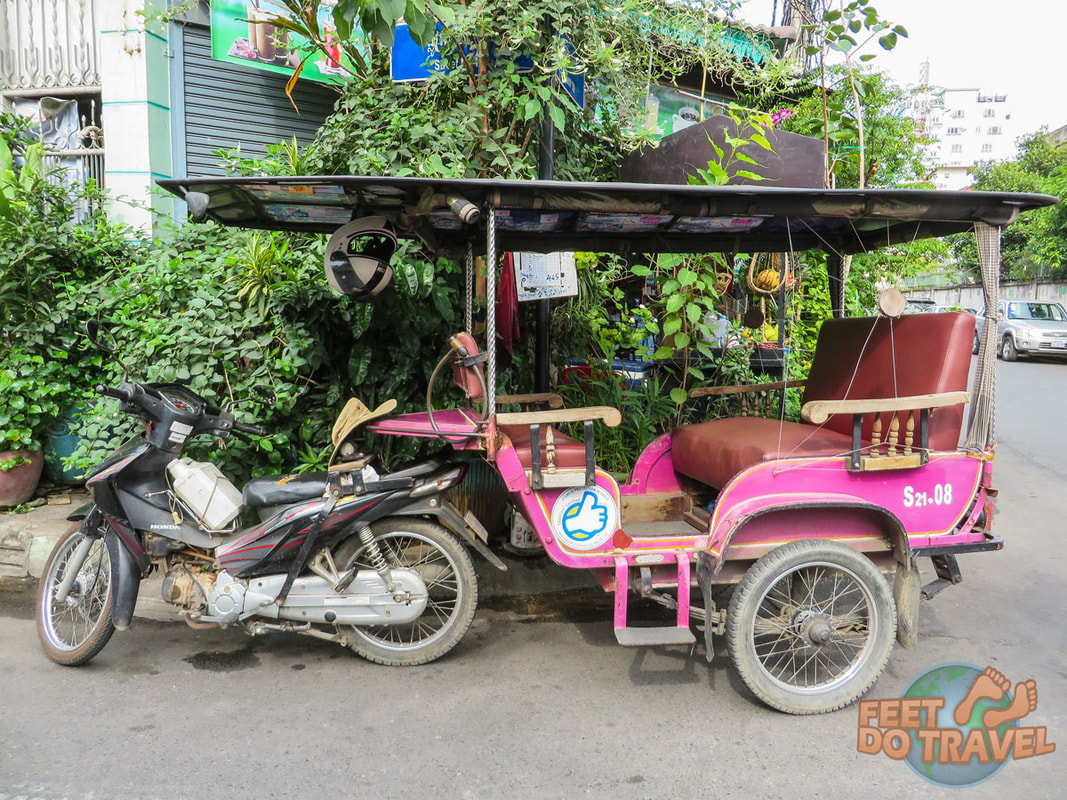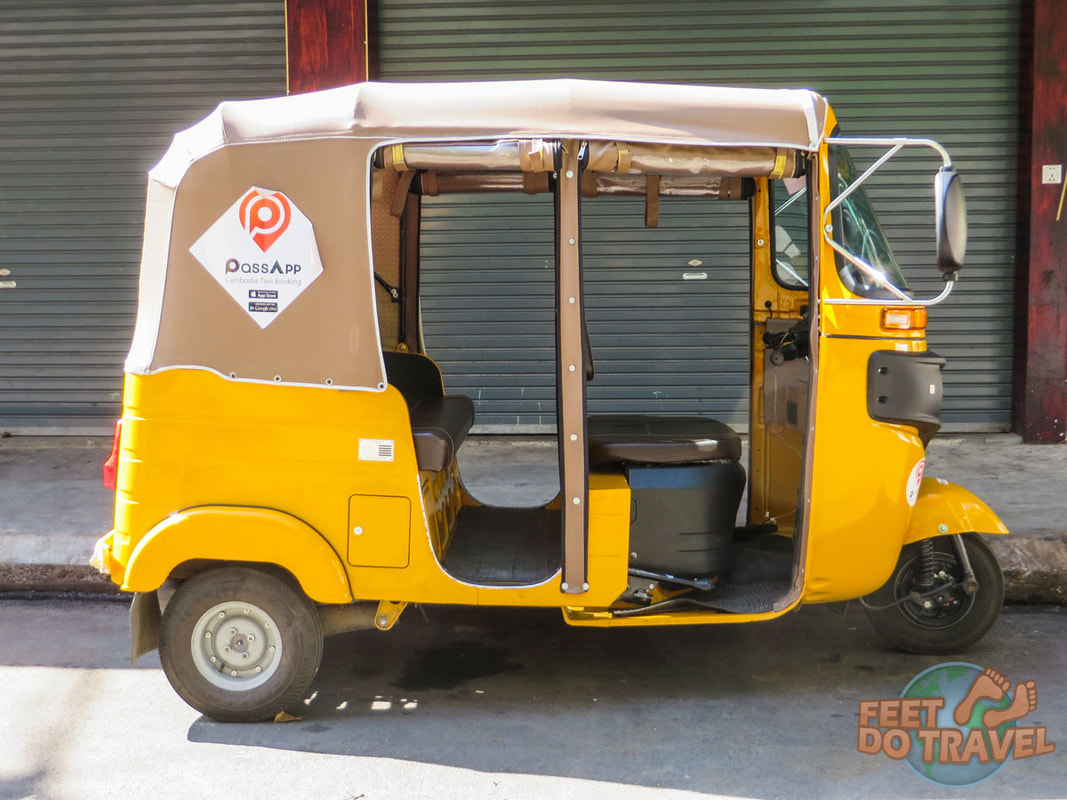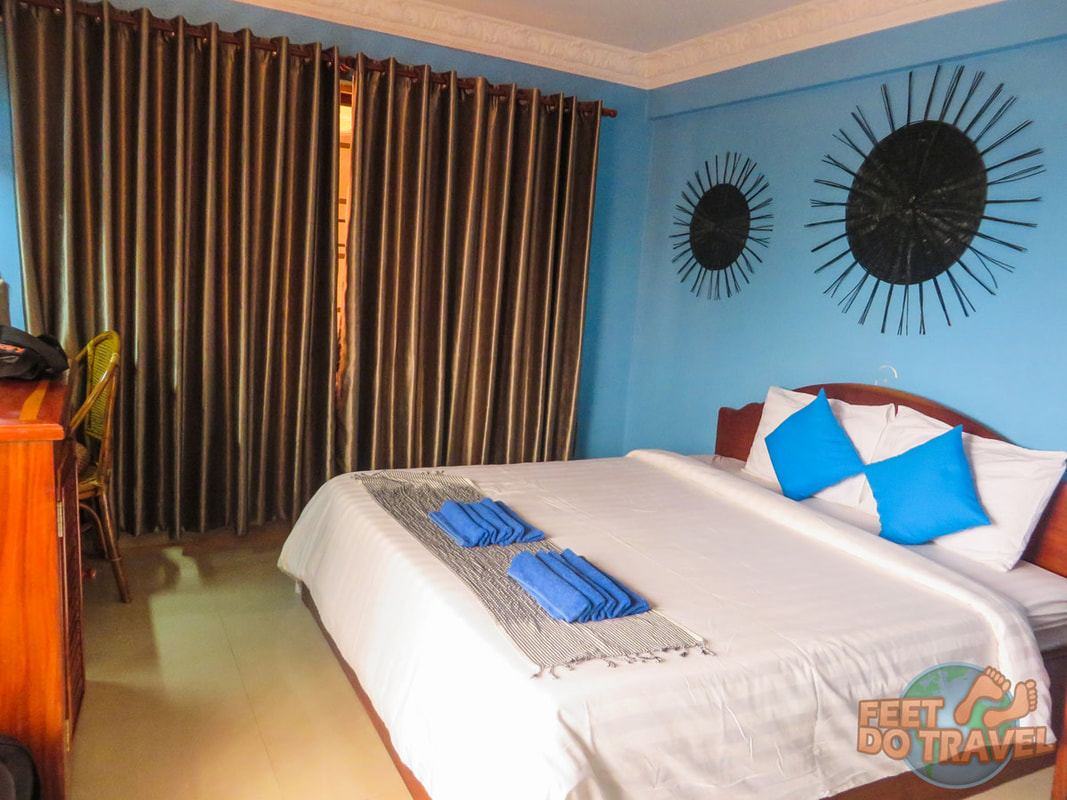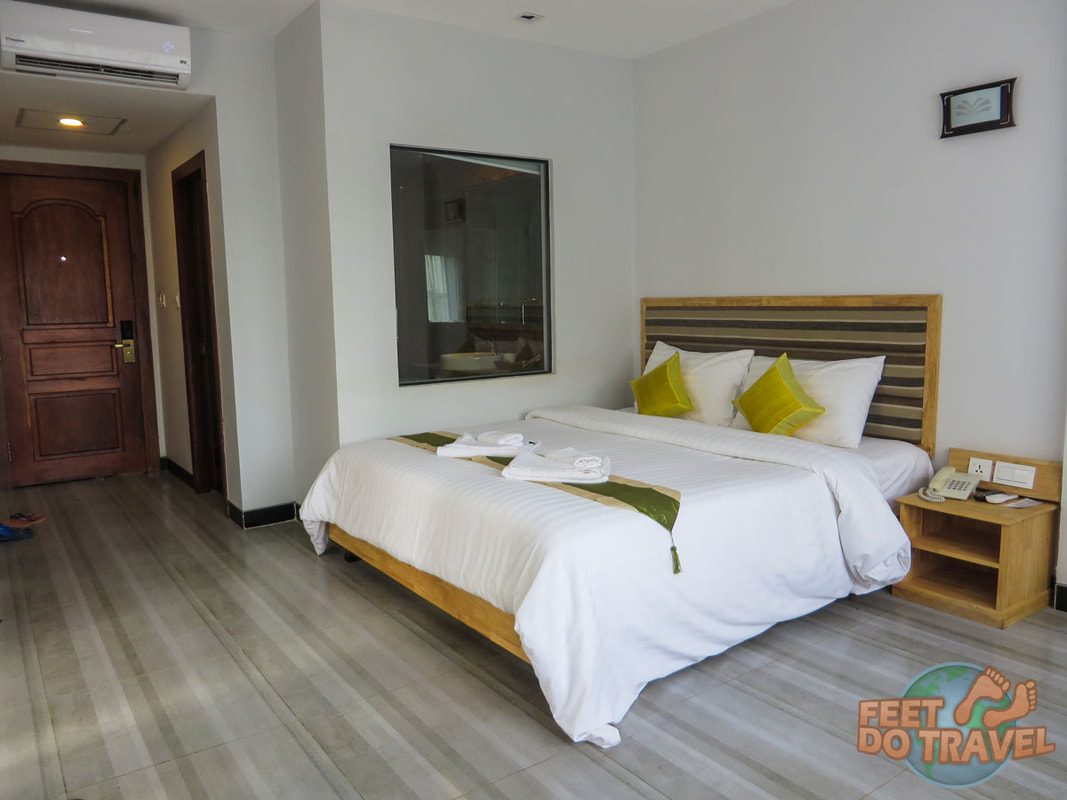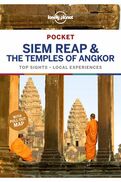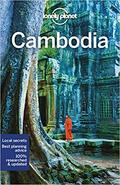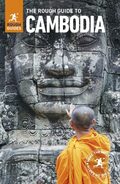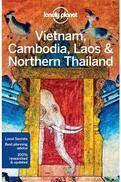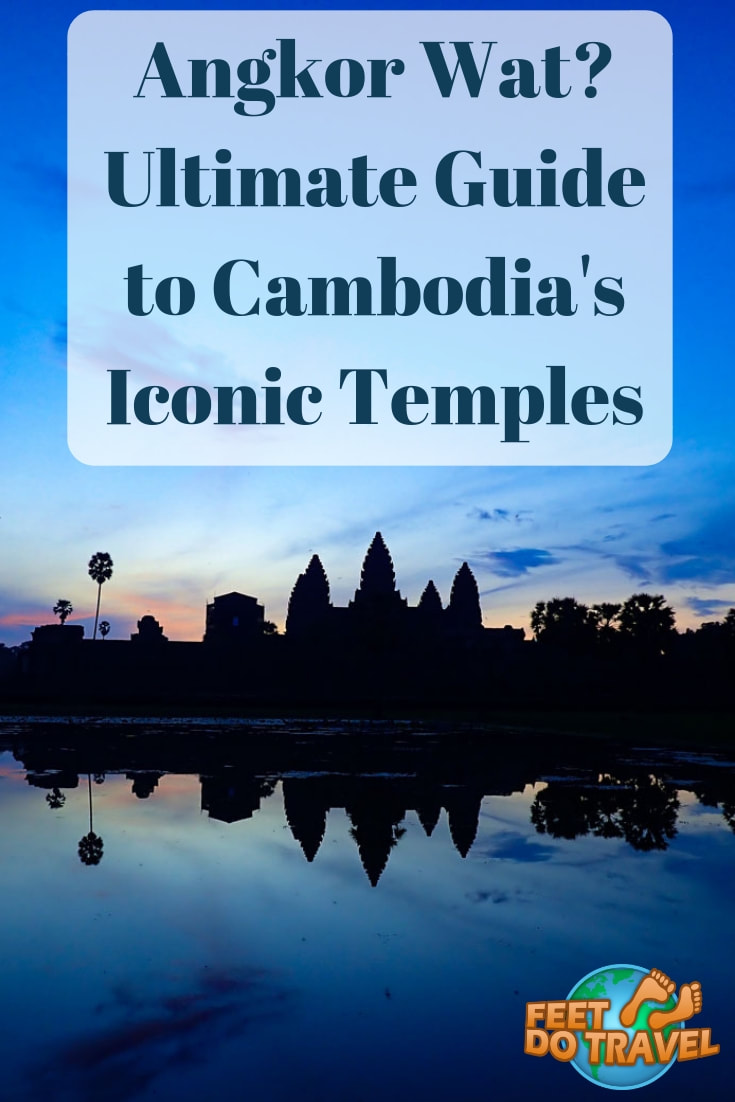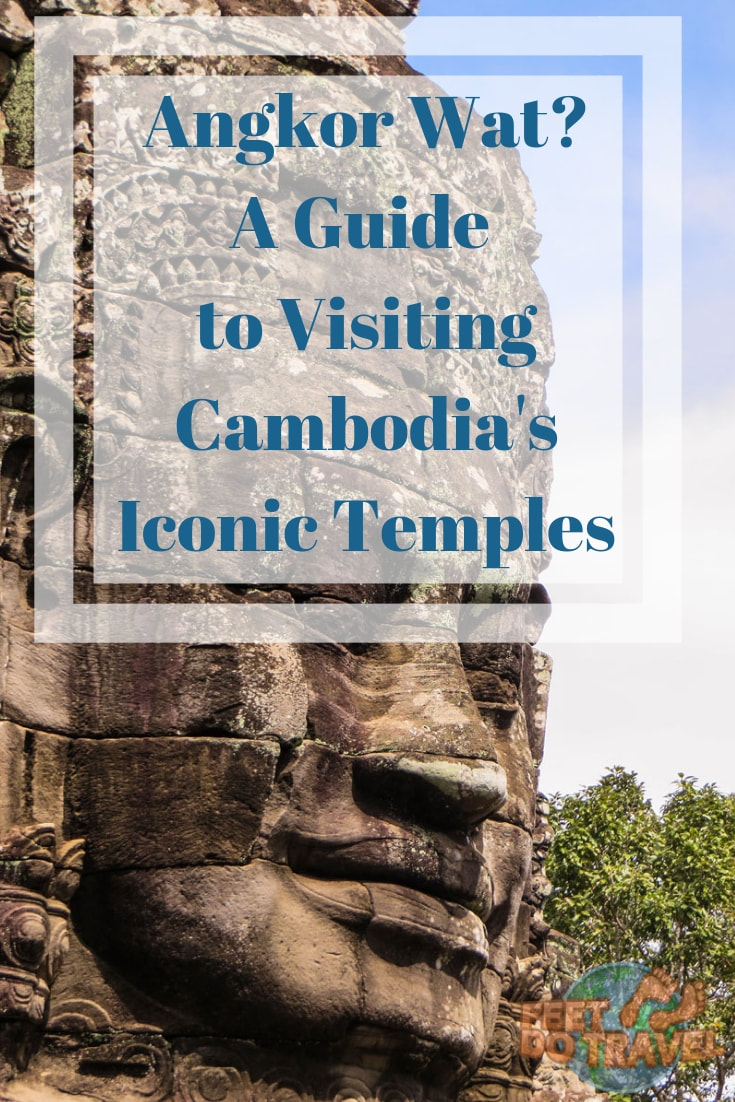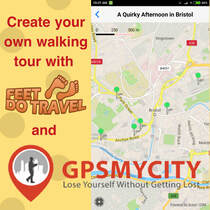Named a UNESCO World Heritage Site in 1992, Angkor Wat is considered to be one of the seven wonders of the world, and is the most important religious complex in South East Asia. Within the Angkor Archaeological Park, there are around 72 Hindu and Buddhist Temples dating between 9th and 15th Century.
So how do you choose which temples to visit? Should you buy a one-day pass or three-day pass, and how much do they cost? What are the best temples to visit in one day? Which is the best temple for sunset? Is sunrise at Angkor Wat worth it? Where was Lara Croft Tomb Raider filmed?
Feet Do Travel help answer these questions. This is our ultimate guide to Cambodia’s Iconic Temples; Angkor Wat and the best temples to visit in Siem Reap.
Angkor Archaeological Park Temple Complex is within the district of Angkor Thom, Siem Reap Province and it’s huge. A clue is in the name; Angkor means “City” and Thom means “big”.
Spread over 400sqkm it has around 72 Temples, some of which are unfinished or are in a state of dis-repair which you will see when wandering around the complex.
The district of Angkor Thom served as the Capital of the Khmer Empire and was also a military post. The large, elaborate and most famous Temple within the complex is Angkor Wat, and was dedicated to the Hindu God Vishnu. It has such historical importance to Cambodia, in 1850 it was added to their national flag, it also features on Cambodian Riel banknotes. It is estimated that 50% of tourists coming to Cambodia visit the Temples at the Angkor Archaeological Park, which generated revenue of $117 million USD in 2018.
Tickets need to be purchased in person from the Angkor Enterprise Centre a few kilometres before the Angkor Complex, they are open every day from 5.00am to 6.00pm. A photo will be taken and affixed to your ticket which you need to show at the entrance of every temple. To reduce queues due to public demand, authorities are trialling online booking so watch this space.
Choose between the following ticket:
1 day - $37
3 day - $62 – valid for 10 days (don’t have to be consecutive days)
7 day - $72 - valid for 1 month (same as above)
If you purchase tickets after 5.00pm, that evening’s sunset viewing is free. You also won’t have to queue early the next morning with hordes of people, and potentially miss the sunrise or not get the best spot. Our accommodation arranged a return trip with a tuk tuk driver which included a sunset viewing for $6 USD (more information about getting around the Complex is at the bottom of this post).
Keep your ticket on you at all times, as mentioned, you will need to present it at every Temple. If it’s rainy season keep it in a waterproof bag, you will not be able to enter with a damaged ticket.
It is said that the best sunrises occur during dry season, November to April. We visited during the rainy season (May to October), but luckily we had time to spare and were patient. Download the weather apps YR and Accuweather as they may help you, although they are by no means 100% accurate. The beauty of visiting during wet season is the moats are full for that beautiful reflective Insta-worthy photo
There are a few suggested sunrise and sunset Temples for you to choose from. For sunrise, there are only three temples open from 5.00am. For sunset, only a couple stay open past 5.30pm, we found this out the hard way when we went to Angkor Wat for sunset, and the gates closed at 5.30pm and we were ushered out.
General Temple opening hours: 7.30am to 5.30pm.
Sunrise options: Angkor Wat, Pre Rup Temple, Phnom Bakheng (Bakheng mountain is a 70 metre high hill)
Sunset options: Pre Rup Temple or Phnom Bakheng.
Note: Phnom Bakheng is the most popular sunset site and numbers are limited to 300 people at the top. During high season, you may find yourself queuing to reach the top at the time of sunset.
If you only have one day to explore Temples, there are five which are listed in every standard tour. Although I found this is a good indication of which ones are considered the best, I personally disagree with a couple. My suggestion of which Temples to visit on a one-day tour, including sunset the previous day would be (in this order):
Pre Rup (sunset the night before)
Angkor Wat for sunrise
Ta Prohm
Preah Khan
Ta Som
Bayon
If I am 100% honest, if you are tired, have temple fatigue, your feet are aching or whatever, skip Ta Som. You don’t have to force yourself to visit all five just because you have paid for the ticket, as you may not appreciate their beauty.
Purchase a three-day ticket if you are a temple lover, then you can enjoy visiting the smaller, less visited temples.
I personally didn’t feel the three-day ticket was worth the cost and in hindsight, we would have been happy with a one-day ticket, but others may disagree. I do feel we did our best to get value from our three-day ticket but were totally “templed out” by the end.
Temple 1 – Sunset at Pre Rup
A Hindu Temple dedicated to Shiva, Pre Rup was built 961AD or 962AD. Its name means “turn the body” because Cambodian’s believe funerals were conducted here, and the ashes of the body were rotated as the service progressed.
Angkor Wat was constructed by Khmer King Suryavarman II between 1122 – 1135 taking 30 years to build, and was originally a Hindu Temple dedicated to Vishnu. After 1432 when the capital of Cambodia was moved to Phnom Penh, Buddhist Monks looked after the Temple, and around the 16th Century it became a Buddhist Temple.
We wanted our sunrise at Angkor Wat to be as magical as we had seen in photos, so on a daily basis, we monitored the weather using the YR and Accuweather apps. For days the sky would cloud over at sunset or rain during the day, then we saw our chance. We booked a driver, it was a done deal.
The benefit of visiting a country in rainy season means it has less tourists, and at a place as heavily visited as Angkor Wat, this can only be a good thing. In truth, it doesn’t matter what time of year you visit, it’s going to be busy. To get a good position for sunrise, we asked our driver to pick us up at 4.45am, the gates open at 5.00am.
After parking we knew where we were heading – to the pond for the iconic reflective photograph. Handing our tickets to the inspectors, we walked over the bouncy bridge into the main complex then turned left, following the path (and other people).
Angkor Wat at sunset? But it’s not on the list of options? Correct, and we found out the hard way. We had bought a three day ticket and had only used two days, so planned to get the value out of the third day. We chose to visit Angkor Wat for sunset knowing there were less crowds later in the day.
The sky was a gorgeous blue but also slightly cloudy so wasn’t a perfect sunset, but it was pretty enough for us. The sun sunk behind the iconic spheres and it was beautiful.
Ta Phrom was built in 1186 as a Buddhist Temple by King Jayavarman VII, to honour his mother. It was originally called Rajavihara (Monastery of the King). Ta Promh is complimented by Preah Khan which was built to honour the King’s father.
After sunrise, we head straight to Ta Phrom about 10 minutes away. The Temple is still undergoing restoration, and there are areas closed off to visitors. Many of the precariously balance stones weigh more than a tonne, so for obvious safety reasons, you cannot just walk anywhere you choose.
At times it felt like we were treading somewhere secret. It was eerily quiet. There were many moments when we had the Temple to ourselves, we couldn’t have asked for a more perfect visit.
Preah Khan isn’t one of the temples on the standard tour but is featured on the Grand Tour. I personally feel it’s one of the must-see Temples because it looks and feels so different to all the others.
To reach the temple, you must first cross a bridge over a moat. The bridge contains stone soldiers pulling naga serpents. Many statues have lost their heads and are in a state of disrepair, but a few remain intact.
Temple 5 – Ta Som
Definitely the smallest of all the Temples, you could probably spend 30-45 minutes here. Ta Som was also built at the end of 12 century for King Jayavarman VII and, like Preah Khan, this temple honoured his father.
There are a couple of stone faces, a couple of tree roots reclaiming the stone, and piles of crumbled stones covered in moss. With no crowds, Ta Som is a lovely temple to explore away from all the madness.
Note: The child sellers at this temple were very persistent but please do not give money to the begging children or purchase anything from them. Families send their kids to earn money instead of going to school and if you buy postcards or any other form of souvenir from them, you are encouraging this practice. Education is so important for the future of Cambodia.
The Bayon is one of the most popular temples with crowds forming from as early at 8.30am. If you visit later in the day, it will be quieter, but don’t skip it! Structure your day so you include The Bayon as a must-see Temple, famous for the huge 216 carved stone faces which jut out from 54 gothic towers.
Built at the end of the 12th century as the only Buddhist Shrine dedicated to Buddha, thankfully The Bayon is situated in the centre of the Angkor Thom complex. If your feet are aching/you have blisters from the heat, the good news is your tuk tuk can drive you to the entrance, and park right outside the Temple.
Most people associate Ta Phrom as the Tomb Raider Temple, but actually we noticed a few. I will tell you the scenes and Temples below, however I suggest you re-watch the movie before or after your visit. It’s always good watching a movie after you have visited iconic scenes!
The Bayon – Cut to the scene looking through Lara’s binoculars. Alex West and Manfred Powell are ordering their minions to pull faster on tug-o-war ropes and open the many-faced temple of the Bayon.
Ta Phrom – The most popular Temple and most associated with the movie. After Lara spies her rivals through her binoculars, she drives in her landrover to Ta Phrom. As she walks through this temple, Lara picks a jasmine out of the ground, which opens up to swallow her.
Angkor Wat – After Lara retrieves the triangle half, she visits a Monk at Angkor Wat who heals her cut arm. This is where she telephones Manfred Powell to arrange their meet in Venice.
I enjoyed a Tomb Raider cocktail at the Temple Bar in Pub Street, one of the best rooftop bars in Siem Reap. We then crossed over the road and had an Anchor Beer in the Angkor What? pub opposite. Cliché? Abso-flaming-lutely!
Tuk Tuk Cost: A 5 temple/7 hour trip is anything between $13 = $15, plus a $5 sunrise pick up.
The Angkor complex is huge, so you will need a way of travelling between temples. If you are on a budget you can cycle to the complex and between the temples, but be prepared to cycle in the heat (or the rain). The distance from Siem Reap City the Temple complex is around 6.5km.
When you are at the Temples, you can walk at your own pace, hire a guide, or do an audio tour. We chose not to have a guide, as we prefer to wander around at our own pace.
There is a standard Small Tour, Grand Tour, or you can custom make your own. The cost will vary, plus there is a supplement to pay for sunrise.
My advice is not to try and see too many temples in one day, otherwise you won't appreciate their beauty, and you will feel “all templed out” with temple fatigue. Although we paid for a 5 temple/7 hour tour, we only saw 3 temples on the first day and were out for 5 hours (including sunrise).
Temple Tips and Code of Conduct
|
Dress Code: The Temples are places of worship, so you need to dress respectfully. Both women and men need to cover their shoulders and knees, you will not be allowed entrance if you aren’t dressed in a respectful way. Walking shorts are fine, but take the zip off legs just in case.
Footwear: Wear comfortable, sturdy shoes or trainers. There are a lot of steps, some very narrow and steep, and you will be doing a lot of walking into each temple. Child beggars: Do not buy anything from the children in or around the Temples. You may think they are cute and yes their families need the money, but you will be entering into a vicious cycle of keeping the children away from school and their education. Education is the key to children’s future, not your $1. |
Toilets: If you see one – use it! We only saw one at Banteray Srei out of all the temples we visited.
Cameras: Do make sure your camera battery and your spare battery are both fully charged. You will need it!
Wondering what to pack for your next trip? Let us help you with the essentials in our Ultimate Packing List for Worldwide Travel (tried and tested!)
- A 30 day tourist Visa (cost is $30) can be obtained on arrival at Siem Reap and Phnom Penh airports. It’s the quickest, most efficient visa application we have experienced.
Note: You may have to show an onward flight. We flew from Singapore with Jetstar. At the document check counter, we were asked to show our flight out of Cambodia. This is the first we had heard about having to provide proof of an onward journey, but thankfully we had a ticket. I am unsure if other airlines ask for this, whether the man was having a bad day, or if it’s required at border crossings by land, but I thought it’s worth a mention. - Official currency – Cambodia uses two currencies; Cambodian Riel and US Dollars. Most prices are quoted in US$ but you can pay with a mixture of both currencies. Change will often be given the same way. Eg: A $2 taxi ride can be paid with $1 and 4,000 riel.
$4,000 riel = $1.
5,28 = £1
4,764 = Euro - Driving – right hand side of the road.
- Tipping – Not compulsory or expected, however if tipping is your country’s custom, or you feel you had a nice tuk tuk driver, good tour guide or tasty meal, then by all means feel free to tip a $1, or tell them to keep the change.
- Data – Buy a Smart sim card for $3 which lasts for 1 month. At the airport, we saw a sign for 26G data for $6, in town we bought 4G for $5. Download the Smart App to monitor data, or dial *087*888# from your phone.
- Pass App or the Grab App are cheap and easy ways of getting around the city.
How to get to Siem Reap
Fly: Siem Reap has a good size International Airport.
|
Bus: from Phnom Penh: Giant Ibis tickets cost $16 (plus $1 booking fee), the journey takes 6 hours. You can book online in advance with 12Go Asia.
There is good legroom, charging point, wi-fi, plus 2 stops for toilet/lunch A portion of Giant Ibis ticket sales goes towards BirdLife International, who help preserve Cambodia’s critically endangered national bird, the Giant Ibis. |
There is no public transport so Khmer Tuk-Tuks and rickshaws are the only way to travel. If you enjoy haggling for the best price, use a street driver, fares should be between $1-$2. For a haggle-free experience, download the local Pass App or Grab App, they are often cheaper than the street drivers.
We stayed in these three different places:
Budget: Panda Angkor is a little further from the centre (Pub Street), but was clean and comfortable, breakfast included.
Quiet Hostel: The Siem Reap Chilled Backpacker is more like a hotel than a hostel. Excellent location in the Wat Bo area, and a 10-15 walk along the river into the centre. Quiet, decent sized room, swimming pool, but breakfast isn’t included.
Mid-range Hotel: Soria Moria Boutique Hotel (now Everland Boutique Hotel) was amazing. Excellent location in the Wat Bo area, and a 10 minute walk along the river into the centre. Huge rooms, quiet, breakfast included.Baby Elephant Boutique Hotel also receives rave reviews.
Other options to consider:
Party Hostel: If you want to party, Mad Monkey or Funky Flashpacker both receive rave reviews.
Luxury Hotel: Angkor Note Residence (formerly Jaya House River Park) receives rave reviews. Park Hyatt Siem Reap is another favourable hotel, they also serve an amazing afternoon tea.
Learning just a few words of the local Khmer language will bring a smile to locals’ faces, and make you feel part of their culture instead of just another tourist.
Hello - Susadei (soos-a-day) NB: informal
How are you/I am fine - Soksaby (soks-a-bye) NB: The same word used for both
Goodbye - Lee hi – Goodbye NB: informal
Thank you - Arkun
No - Ot The (ot-tei) – (you will need this for the persistent tuk tuk drivers!)
Sorry or excuse me - Som Dtoh (som-toe)
Disclaimer: This post contains some affiliate links. If you click through and make a purchase, it won't cost you any extra, the small commission we may earn will help support the FeetDoTravel community.
|
This article is now available as a mobile app. Go to GPSmyCity and download the app for GPS-assisted travel directions to the attractions featured in this post.
|
Need more advice? The Lonely Planet books have always been my first point of reference! Alternatively, other people prefer the style of The Rough Guide - take your pick!
Travelling around Cambodia & South East Asia? Check out these related posts!
Siem Reap Pagoda Cats - Better Than Any Cat Cafe
Best Rooftop Bars in Siem Reap
Street Art in Phnom Penh, Cambodia
My Chiang Mai
Temple Tour Chiang Mai
Why You Should Visit Chiang Rai
Temple-Tastic Chiang Rai
Elephant Valley Thailand - Where Elephants Come First
It's a Monk's Life (Interview with Buddhist Monks)
Ping Pong at Patpong
Penang: City of Surprises
Penang Street Art
20 Free Things to Do in Singapore
15 Things to Do in Canggu, Bali
Kuta Lombok - The New Kuta Bali?
Is Pink Beach Lombok worth Visiting?
Lembongan - Bali but Better
Gili Air - The Perfect Island?
Gili Trawangan - Not Just a Party Island!
Gili Asahan - The Secret Gili Islands
Gili Sudak and Gili Kedis - The Secret Gili Islands
Komodo, Flores: More Than Just Dragons
If you are travelling around Cambodia and Asia, we recommend you check bus, boat and train schedules ahead of time with 12Go Asia. You can also book your tickets in advance online (as we did) to save time and hassle.


If you like this post, please Pin & share it!

